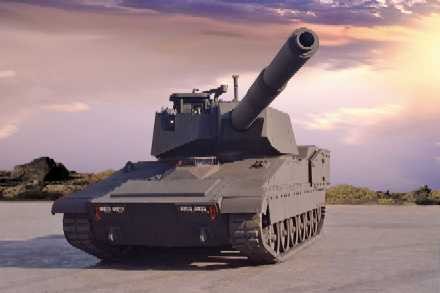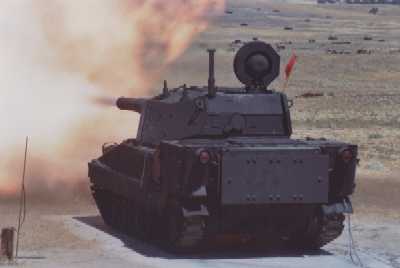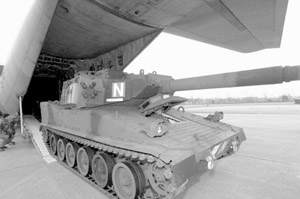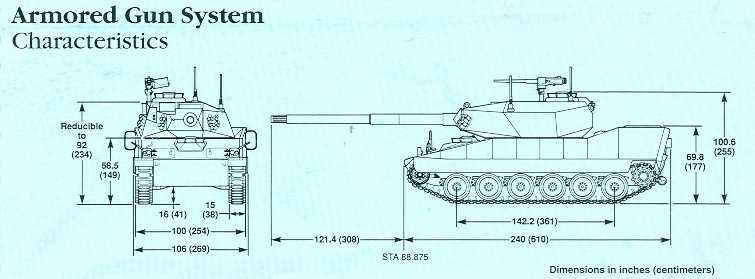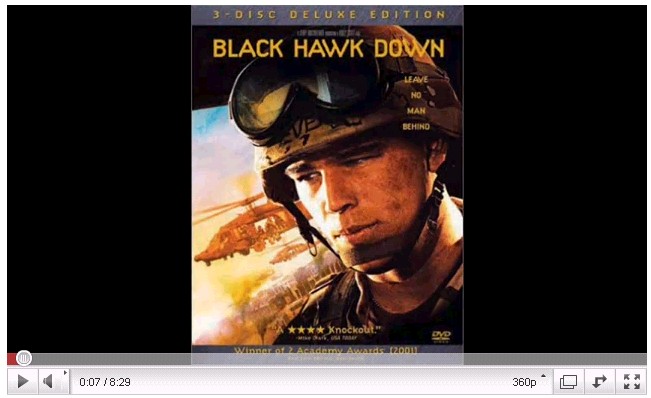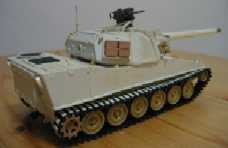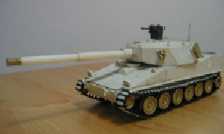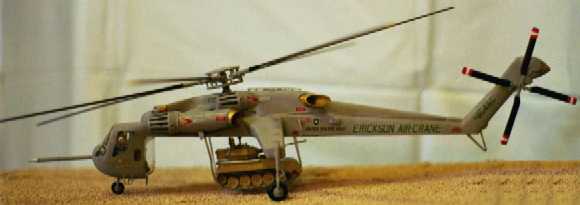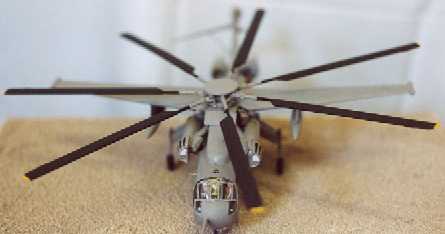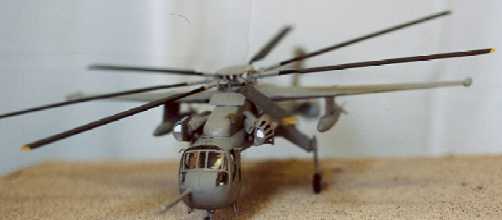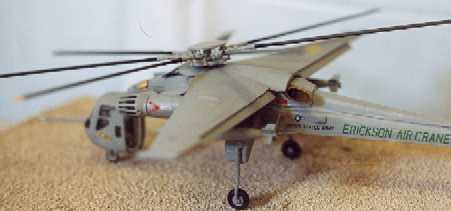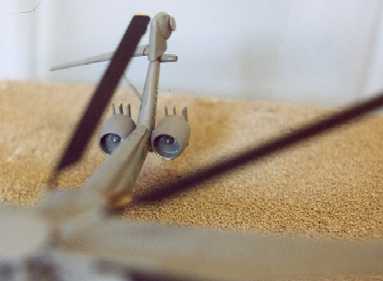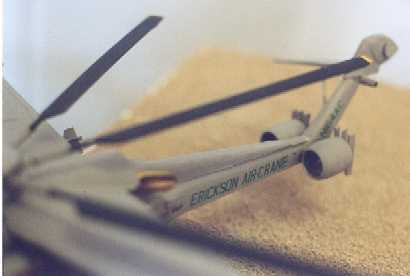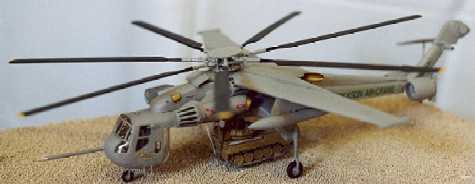UPDATED 16 March 2011
 LIGHT TANKS & ASSAULT GUNS AT WAR: INFANTRY FIRE SUPPORT, FIRST
LIGHT TANKS & ASSAULT GUNS AT WAR: INFANTRY FIRE SUPPORT, FIRST
THE FUTURE FROM 2004 ONWARD: 120mm main gun heavy tank firepower in a M8 "Thunderbolt" AGS light tank; what the U.S. Army needs?
EXCLUSIVES!
See the M8 Buford/Thunderbolt AGS light tank in action!
www.combatreform.org/lighttanksrulefor3dmaneuver.wmv
Iraq Combat video clip: what happens when you bring a rifle to a tank fight! www.combatreform.org/dontbringarifletoatankfight.mpeg
Scratch-Built Model of the M8 Buford!
CGI Model in New Movie: The A-Team!
 www.youtube.com/watch?v=A9mwhXLRcZc
www.youtube.com/watch?v=A9mwhXLRcZc
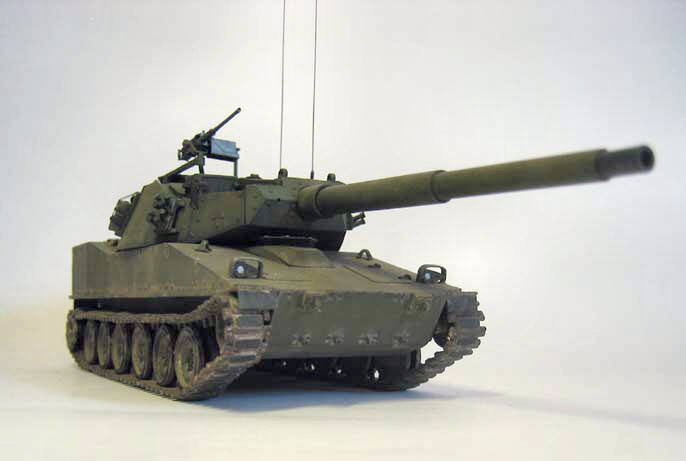
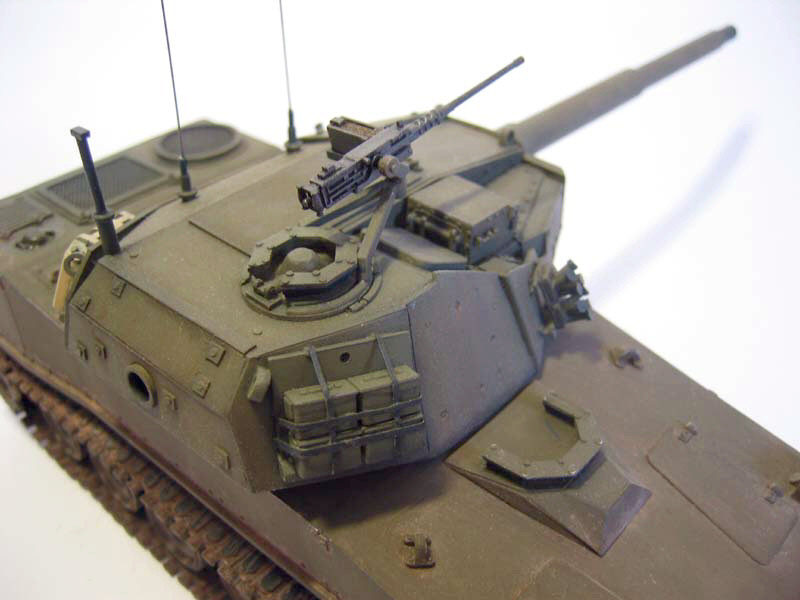

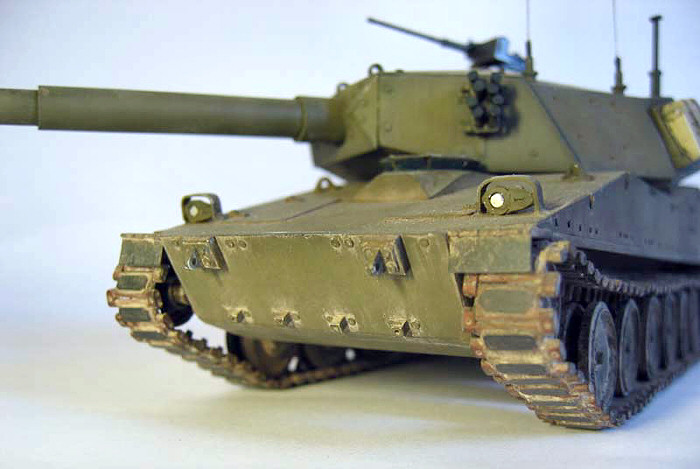
 www.youtube.com/watch?v=4aY0tXf0_98
www.youtube.com/watch?v=4aY0tXf0_98

 BREAKING NEWS!!!
BREAKING NEWS!!!
Retired General Slams Army For Failure To Release Armored Gun SystemBY NATHAN HODGE, DEFENSE TODAY August 27, 2004
In an interview with Defense Today, retired Brig. Gen. David Grange said the Army needs to deliver the M8 Armored Gun System (AGS) to the 82nd Airborne, which wants an air-droppable light tank for "forced entry" operations such as airfield seizure and other missions."If they're not going to do this for the 82nd, it's a big mistake," Grange said. "The 82nd needs it." The 82nd Airborne, which is likely to rotate back to Iraq next year, wants the extra combat punch a lightweight armored gun would provide, and earlier this year, the division asked the Army to approve an operational requirement for AGS, which is made by United Defense, L.P. (UDLP) Equipped with an automatically loaded 105-mm cannon, the tracked AGS is designed for low-velocity airdrop, and can roll on and off of a C-130 Hercules tactical airlifter.
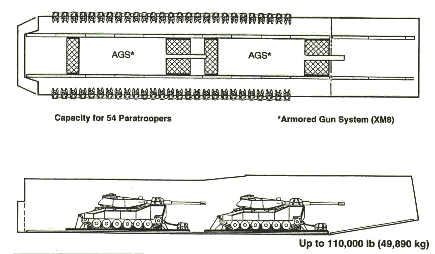
AGS was cancelled in 1997, but four complete vehicles were delivered. Delivery of those vehicles to the 82nd Airborne has remained on hold while the Army studies the feasibility of airdropping the Stryker Mobile Gun System (MGS), a wheeled vehicle made by UDLP rival General Dynamics. Grange, who now is executive vice president and chief operating officer of the Robert R. McCormick Tribune Foundation, a non-profit organization, said, "Airborne units and air-assault units need some type of a light tank, some type of a gun system. We should have had the Armored Gun System. We should have done that, [but] we never did-that program was cancelled."
During Operation IRAQI FREEDOM, elements of the 3rd Infantry Division, a heavy mechanized unit, captured Baghdad International Airport. According to Grange, airborne and air assault (helicopter-borne) units need extra firepower and protection for such critical operations. "I've been in airborne, air assault and Ranger units most of my life, and once you go in and secure an airhead, you're just keeping your fingers crossed as you're waiting for an armored link-up," said Grange.
As part of its effort to transition to a more rapidly deployable future force, the Army is investing heavily in the Stryker family of wheeled armored vehicles. Grange, who stressed that he has "zero relations" with defense contractors, suggested that those funds might be better spent upgrading light armored vehicles like the tracked M113, which has been in service since the 1960s.
"They're air-droppable, there's a version you can put a gun system on as well as a troop carrier, and we could have taken a lot of the light units and given them some mobility and protection," he said. "Not whole divisions-like the whole 10th Mountain and the 101st Airborne-but enough of them to give them some maneuverability and some punch."
The Stryker, Grange added, "I personally think was a waste of money because we had already so much stuff in the inventory we could have modified."
Stryker has been touted as a major "success" by Army leadership, which points to the deployment of the first Stryker Brigade Combat Team to northern Iraq as evidence of their capability. Proponents of the Stryker say the vehicles, which run fast and quiet, offer superb situational awareness and stealth, traits especially critical in urban combat.
www.youtube.com/watch?v=u_E25Yyv0ZE
www.youtube.com/watch?v=9EzRzTj3kWc
However, Stryker has come in for criticism recently, particularly after a Government Accountability Office report suggested that the vehicles were too heavy for effective transport by C-130 aircraft. Sen. John Warner (R-Va.), the chairman of the powerful Senate Armed Services Committee, has pledged to hold a hearing on the issue.
The Stryker MGS, part of the Stryker family of wheeled armored vehicles, has not been airdrop certified, although the service recently airdrop tested a surrogate vehicle that was weighted down to simulate the MGS. The surrogate, a Stryker Engineer Support Vehicle, was dropped from a C-17 Globemaster III, a larger, more powerful airlifter than the C-130.
Grange suggested that Stryker variants are not practical for airdrop and rapid deployment missions if they can only be delivered by C-17. "The [C-]130 is intra-theater," he said. "C-17s are great, if you have enough of them. But as you know, there's a finite number of them. And they are more inter-theater instead of intratheater."
One member of Congress, Rep. Robin Hayes (R-N.C.) been lobbying the Army for the delivery of AGS to the 82nd Airborne, which is based in his home district. "He's trying to do everything he can for the 82nd Airborne in a timely manner," said a press aide to Hayes. "They'll probably be going back to Iraq. And he wants to make sure that they have the systems they need."
Master Sgt. Pam Smith, a spokeswoman for the 82nd Airborne, said the division still has a need for the AGS. "We do have [a requirement] but we have not been told a date that we're supposed to receive it," she said. "We'd love to have that system." The four AGS vehicles currently are warehoused in Pennsylvania. A UDLP source said a full complement of AGS parts and a "combat spare" also are available.
CORRUPT ARMY GENERALS STAB PARATROOPERS IN THE BACK....AGAIN!
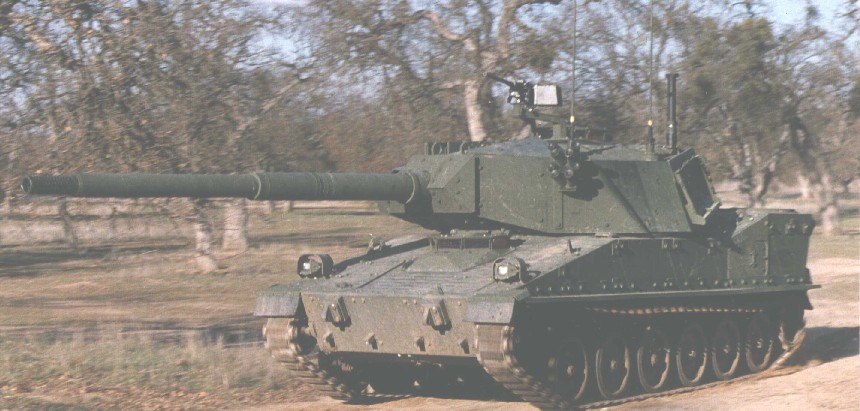
The 82nd Airborne through Congressman Robin Hayes got the Army to field the 4 x M8 Buford AGS light tanks that are sitting in storage in York, PA to render immediate parachute-deliverable shock action/firepower lost when the M551 Sheridan light tank battalion was retired in 1997. Then Army CSA General Schoomaker said he liked the M8 Thunderbolt with 120mm gun seen at AUSA. LTG Cody, Army G3 had set it all in motion and ready to go.
All was fine until LTG Yakovic twisted General Schoomaker's arm that M8 Buford AGS would "threaten" the Stryker-MGS which is frankly not working, a piece-of-junk and not parachute airdrop certified. Its unlikely the loaded Stryker-MGS can even take-off in a C-130 much less roll off the rear ramp on an airdrop platform and not impact the rear tail with only 104" of height available. However, Schoomaker knuckled under to the wheeled armored truck/GDLS mafia and reversed the OK for the M8 Buford AGS.
The 2001 M8 rejection letter by VCSA Gen John Keane is below to show the historical corruption within our Army towards tracks even when its a pet project of the "Airborne Mafia". The troops-in-wheeled-trucks-with-computers RMA/Tofflerian clique in our Army is killing and maiming our troops and setting the stage for the destruction of the fighting capabilities of our Army.
After being in uniform supporting the Stryker deathtrap and blocking the M8 Buford AGS light tank in 2001 (see letter below), General Keane retired and joined the Board of Directors of GDLS the makers of the Stryker wheeled deathtrap.
Carol Murphy
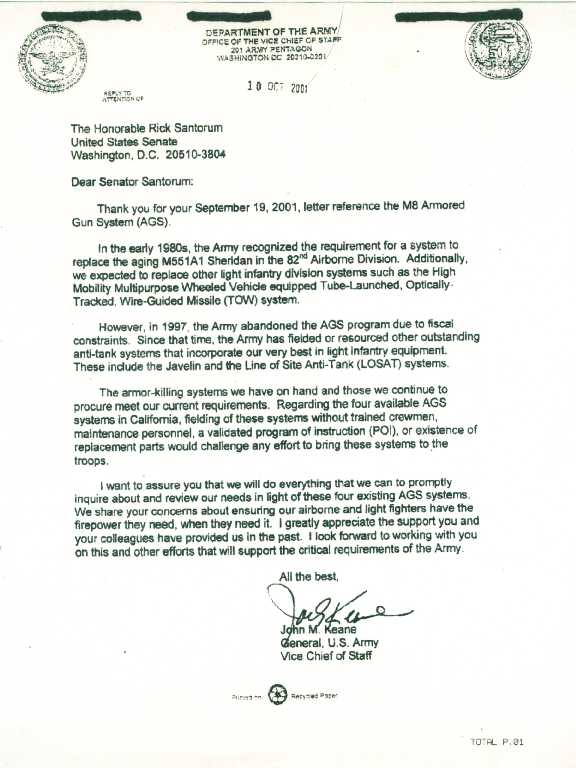
Inside The ArmyWhile the fatally-flawed General Dynamics Land Systems "Stryker" truck cannot even successfully mount and fire a 105mm gun, the tracked M8 Armored Gun System which the Army should buy is up-gunning to 120mm! Note that this vehicle is just a "proof of Principle" test bed not a full prototype. UDLP built it in 4 months and displayed it at the 2003 AUSA show in Washington because General Dynamics, Land Systems Division was telling (lying) to the U.S. Army that it was "not possible" to integrate a 120mm tank gun into a light combat vehicle. GDLS can't even get a 105mm gun to work on their Canadian-made Stryker MGS deathtrap armored car. This vehicle also has band tracks and a hybrid-electric drive instead of a conventional transmission.
March 15, 2004
Pg. 1Army To Transfer Four Armored Gun Systems To 82nd Airborne Division
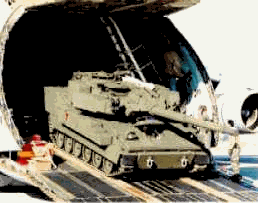
The Army last week approved the transfer of four M8 Armored Gun Systems from contractor storage facilities to the 82nd Airborne Division at Ft. Bragg, NC, sources say, marking the first time the vehicles will be used by the service since the program was terminated in 1996.
Proposed in the 1980s as a lightweight combat vehicle that could fit aboard a C-130, the AGS was canceled as the Army struggled to pay for other priorities. Contractor United Defense LP, which fought the cancellation decision, has five M8 AGS vehicles in stock -- four in York, PA, and one in San Jose, CA.
The 18th Airborne Corps at Ft. Bragg recently passed along an "operational needs statement" to Army Forces Command that spells out the division's need for a rapidly deployable vehicle with firepower that could be dropped from an aircraft (Inside the Army, Feb. 16, p1). The Army's operations and plans office, or "G-3," has been reviewing the requirement with Training and Doctrine Command.
TRADOC completed its analysis on Feb. 19, and the G-3 approved the needs statement on March 8, authorizing transfer of the existing vehicles to the 82nd Airborne Division, sources say. By press time (March 11), the Army had not released a copy of the approval documents.
According to one source, officials made it clear in the documents that the transfer in "no way should be construed as support for an AGS program." Instead, it is an attempt to meet the immediate requirement with an interim solution and allow the division to begin developing and refining tactics, techniques and procedures.
The unit expects to receive the vehicles by the end of March, the source said.
Rep. Robin Hayes (R-NC), a member of the House Armed Services Committee whose district includes Ft. Bragg, said he is pleased with the decision, but does not want the transfer to be misconstrued as a move to revive the terminated program.
"To be clear, I am not endorsing one system over another," Hayes told ITA in a March 12 statement. "I simply believe that, if these existing AGS are combat-worthy, then they should be fully utilized while we await the future technologies that are already in production."
"My priority on this matter is simple -- what can we do to help our soldiers in the field the fastest?" he added. "If our Soldiers can utilize these existing systems, then I want these systems in Baghdad rather than in a manufacturing facility in Pennsylvania."
Hayes asked the Army last December to provide him information on the matter, including how much the transfer would cost and whether spare parts are available to maintain the gun systems. Last week, a spokesman for Hayes said the congressman was told government and contractor costs are estimated at approximately $1 million for one year of support for AGS.
The funding, however, is not as much of a concern to the Army as the availability of parts for a system that was terminated eight years ago. Sources say UDLP can sustain the systems for a limited amount of time, but many of its components are now obsolete or unavailable. Supporting the system beyond one year poses high risk, sources said.
Herb Muktarian, a spokesman for UDLP's ground systems division in York, said the systems are ready to go.
"We have not received any official requests from the Army regarding AGS, but the four AGS vehicles stored in York remain in excellent condition and we're ready to provide support if asked to do so," Muktarian said.
Maj. Rich Patterson, a spokesman for the 18th Airborne Corps, said officials at Ft. Bragg have been notified and are assembling the necessary manning documents, additional equipment and training plans, "with the intent to integrate the AGS into division operations as soon as possible."
The vehicles will go to the 1st Battalion of the division's 17th Cavalry Squadron, Patterson said. AGS will provide its assault teams "mobility, firepower and shock effects" within the "drop zone," he added.
"It gives us a capability we could deploy if we need it," Patterson said.
AGS features a 105mm cannon, an ammunition autoloader and options for armor protection.
The division's requirement for an air-droppable platform has existed at least since the 1990s, when the division disbanded one of its battalions -- the 3rd Battalion of the 73rd Armored Regiment, which was equipped with an aging armored reconnaissance vehicle called the Sheridan. At the time, service officials thought other capabilities would become available to the paratroopers once the M551 Sheridan was retired.
When the division deactivated the armored battalion in 1997, however, then-Army Chief of Staff Gen. Dennis Reimer had already terminated AGS, which had been regarded as the Sheridan's replacement. Eliminating AGS freed more than $1 billion over the service's outyear funding plan -- money that was badly needed for other cash-strapped programs, officials said at the time.
Two years after the program was canceled, service officials said they continued to review options for all light forces that wanted more firepower. Vehicles reviewed included AGS, the Marine Corps' Light Armored Vehicle, the Pandur lightweight vehicles used by the Kuwait National Guard and a variant of the M113 armored personnel carrier (ITA, Oct. 4, 1999, p1; Sept. 27, 1999, p1).
That effort, however, went nowhere, and the 82nd Airborne Division resubmitted its request for such a vehicle, eventually attracting Hayes' attention.
"Let's find out as soon as possible if AGS can serve effectively as a short-term solution for an immediate operational need," Hayes told ITA last week.
-- Anne Plummer
UDLP successfully fired about 50 x rounds of 120mm M866 TPFSDS and M831 HEAT-TPT, with an autoloader, stationary and on-the-move before the 2003 AUSA Show. On 9 December, UDLP fired 5 x M829A3 SLUG rounds obtained from PM TMAS since this is the highest impulse 120mm round in development, and the UDLP firing range does not permit firing DU.
Thunderbolt's recoil severity is slightly less than that of the 105mm AGS firing the most powerful 105mm cartridge, the M900 APFSDS. The reason for this rather surprising result is that its impulse increase is less than the doubling of its recoiling mass. For comparison:
Vehicle Severity Index
M1 tank (105 &120mm) .2
Thunderbolt (120mm)
.7
AGS (105mm)
1.0
M551 Sheridan (152mm)
2.5
M56 SPAT (90mm)
5.0
M8 Buford Armored Gun System (AGS) Overview:
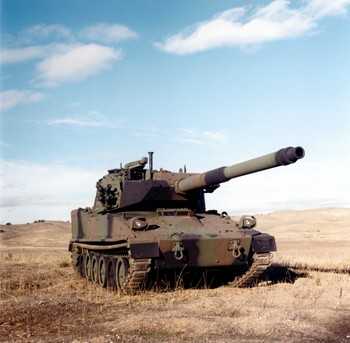
 www.youtube.com/watch?v=8Yqxr3tqtog
www.youtube.com/watch?v=8Yqxr3tqtog
The Army's M8 Buford Armored Gun System (AGS) was designed for use by Airborne and Light Infantry/Cavalry forces and is C-130 and larger aircraft airland transportable and parachute air-droppable. The AGS fires the entire suite of 105mm munitions, from anti-personnel (beehive) to the M900 Armor Piercing Fin Stabilized Discarding Sabot (APFSDS-T-DU), which provides lethality equal to the M829 120mm round.
Its main gun shoots-on-the-move day or night to defeat bunkers, buildings, point targets and all type of combat vehicles such as the BMP, BTR, BRDM, SPH, and T72 main battle tank.
Status and Availability as of September 2003:
Four AGS vehicles were reconditioned and fully prepared for deployment to Ft. Lewis in summer 2000. These four fully operational vehicles are located in York, PA. One additional vehicle and a spares package, including four complete sets of on-vehicle equipment, Basic Issue Items (BII) and level II armor, and 3 sets of level III armor (defeats RPG and 30mm medium caliber guns) are with the vehicles. This package is sufficient for deployment and can be quickly supplemented for prolonged operation. Technical manuals were developed and validated under the original AGS contract and are immediately available. A complete training package, including training aids, exists. Gunnery and maneuver training device are still in the Army system for AGS and a cadre of active and retired master gunners and trainers are available. These first four vehicles could be delivered within weeks of contract start date, immediately into the hands of Soldiers.
In short, the people, equipment, support package, and the ammunition are in place to expeditiously train, deploy and support deployment of the existing M8 AGS assets. New M8 AGS production vehicles could be available within 18 months of contract award, assuming M35 cannon availability, since necessary production tooling exists for the system. Furthermore, the AGS design leverages many common components with the Bradley and M113 Gavin family of vehicles, which can be available through an already qualified vendor base.
Thunderbolt: Armored Gun System (Block II)
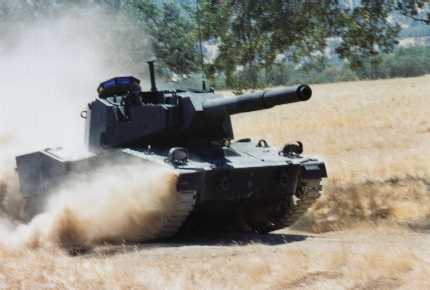
The M8 Armored Gun System can also be enhanced to bring Future Combat System technologies to the current force in the near term. Those advanced technologies include: hybrid electric propulsion, band track, improved ceramic/composite armor, Second Generation FLIR Night Vision technology, digitization, an 120mm main gun along with its 120mm auto loader - creating Thunderbolt: a Lightweight Silent Killer. This demonstrated system upgrade retains the M8's C-130 Hercules air transport capability, as well as the AGS 3-man crew.
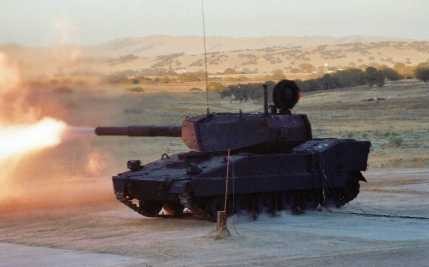
This spiral development approach leverages an existing platform, which results in tremendous time and cost savings. The AGS has a 1553 Digital Data Bus, which can support the insertion of additional electrical components and embedded training programs. As such, preventive maintenance checks and services (PMCS) processes can be instructed directly over the vehicle's communication and information system, so that tomorrow's Soldiers won't need to dig out the technical manuals in the rain and mud. The data bus also supports the advances in situational awareness and common operating picture that is critical to small unit success on the modern dispersed battlefield, adding to the Army's flexibility to network with multiple joint forces.
Considerable experience has already been gained with hybrid propulsion in this class of military vehicles. Hybrid Electric Drive M113 Gavin's, Bradley's, and advanced reconnaissance vehicles (the U.S./UK TRACER) have been built and tested. Further, a Transformation Technology Demonstrator (TTD) called the Mobile Tactical Vehicle Light and based on a modified M113 Gavin with Hybrid Electric Drive and Band Track was presented over two years ago at the AUSA Symposium in Fort Lauderdale. Many senior Army officers, including the then Chief of Staff, have had a test ride in this vehicle and experienced its rapid acceleration, smooth ride, and stealth mode operations. Recently, the Future Scout Cavalry System/TRACER integrated demonstrator completed field-testing in the UK, further proving that a hybrid electric tank is right at our fingertips.
The M8 AGS has a ramp door in the rear that lowers for the Engine/Transmission power train to be rolled out for easy maintenance. With the conversion to Hybrid Electric Drive and the flexibility of positioning drive train and suspension components, significant space is freed up in the existing propulsion system compartment for increased stowage and mission payload.
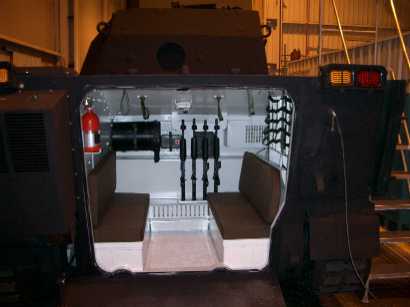
One such configuration could include a crew compartment for a 4-Soldier fire team akin to the IDF's Merkava heavy tank. With the Hybrid Electric Drive's flexibility, a better center of gravity and space utilization is realized. Weight reduction and related mission equipment stowage improvements are also gained. With such a propulsion and power management system, Soldiers will have a long range, extremely fast, and silent killer, with a reduced logistics tail.
 BREAKING NEWS!!!
BREAKING NEWS!!!
Inside The Army
February 16, 2004
Pg. 1Paratroopers' Needs Rekindles Talk Of Defunct Armored Gun System
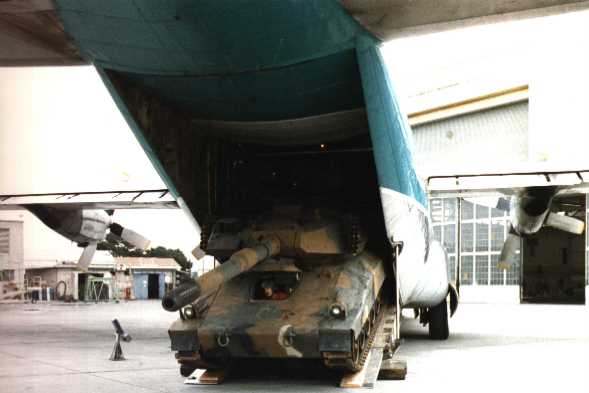
The 82nd Airborne Division at Ft. Bragg, NC, still needs a rapidly-deployable vehicle with firepower, a requirement some say could be met sooner rather than later if the Army is willing to shake the mothballs from its defunct Armored Gun System, sources say.
"They want an air-droppable platform for forced entry," said a service source, and "they want it now."
As a result, the division recently passed along an "operational needs statement" to Army Forces Command that outlines the unfulfilled requirement, said Maj. Rich Patterson, a spokesman for the 18th Airborne Corps, which oversees the division. The Army's operations and plans office, or "G-3," is reviewing the requirement with Training and Doctrine Command, but no decision has been reached, Patterson said.
While Army leadership may determine AGS is not the solution, the idea of moving the system back into the limelight, at least in a limited way, has caught the attention of a lawmaker who represents the Ft. Bragg area.
The requirement for an air-droppable platform has existed at least since the late 1990s, when the division disbanded one of its battalions -- the 3rd Battalion of the 73rd Armored Regiment, which was equipped with an aging armored reconnaissance vehicle called the Sheridan. At the time, service officials thought other capabilities would become available to the Paratroopers once the M551 Sheridan retired.
When the division deactivated the armored battalion in 1997, however, Army officials had already terminated AGS, which had been regarded as the Sheridan's replacement. Proposed in the 1980s as a lightweight combat vehicle that could fit aboard a C-130, AGS featured a 105mm cannon, an ammunition autoloader and options for armor protection. United Defense LP had produced a handful of prototypes of the vehicle in 1996, when then-Army Chief of Staff Gen. Dennis Reimer terminated the program. Eliminating AGS freed more than $1 billion over the service's outyear funding plan -- money that was badly needed for other cash-strapped programs, officials said at the time.
What was not eliminated was the need to equip light forces with an air-droppable platform that had enough firepower to hold off opposing forces until heavier forces arrived, sources said.
According to the Army's program executive office for ground combat systems, five AGS prototypes exist today. Four systems reside at UDLP's manufacturing facility in York, PA; one is at a UDLP facility in San Jose, CA.
Herb Muktarian, a spokesman for UDLP's ground systems division in York, said the four M8 AGS vehicles there have been regularly maintained.
"They are in a standard configuration and are in excellent condition," he said. "We are prepared to provide the vehicles and any required support if we were to receive an official request from the Army."
The unmet requirement has caught the attention of Rep. Robin Hayes (R-NC), a member of the House Armed Services Committee whose district includes Ft. Bragg. Hayes contacted the Army's legislative liaison office last December requesting specifics on the ongoing "discussion about getting the AGS" into Army "tactics, techniques and procedures."
"What is your assessment of the immediate operational need for a system to support airfield seizure, forced entry and other missions of the 82nd Airborne Division?" Hayes asked in a Dec. 15, 2003, e-mail. "Can the AGS serve as a near-term solution to an immediate operational need?"
Hayes requested several other details from the Army, including the cost of reviving AGS, spare parts needs and the status of the 82nd Airborne's needs statement. Hayes' spokesman, Jonathan Felts, said Feb. 10 that the congressman has not yet received a response from the Army.
"Congressman Hayes' top priority is that we help our Soldiers in the field as quickly as possible," Felts wrote in a statement.
"Let me be very clear to say that this is not a matter of advocating one system over another," he added. "Rather, the congressman knows that there is an existing technology presently sitting unused, and he is simply inquiring if it is feasible to utilize the capabilities while awaiting future technologies that are in production."
The division's interest in an AGS-like system is nothing new. The division's 17th Cavalry Regiment expressed a desire for such a system several years ago, according to the Army source.
As Inside the Army reported in the fall of 1999, service officials then were looking at all vehicles that could serve as a near-term solution for light forces -- including AGS, the marine corps' Light Armored Vehicle, the Pandur lightweight vehicles used by the Kuwait National Guard and a variant of the M113 armored personnel carrier (ITA, Oct. 4, 1999, p1; Sept. 27, 1999, p1).
The PEO for ground combat systems, which had overseen the AGS program, was directed to conduct a review of the various candidates. For AGS, the office provided Army leaders information on three options: field AGS in the state it was in when the program was terminated; revamp the system with newly developed technologies, then field it; or field AGS in the condition it was in when terminated, but with plans to retrofit the system with new technologies.
Past inquiries into AGS and other systems, however, have failed to "go anywhere," the service source said.
Pulling AGS out of storage might be a more tenable idea today, however, than in 1999 when then-Army Chief of Staff Gen. Eric Shinseki announced plans to invest heavily in a lighter, more lethal future force. After years accepting considerable risk in its current force to fund transformation goals, the Army once again shifted gears last year to focus on ensuring the current force -- stretched thin across the globe -- is adequately equipped. Gen. Peter Schoomaker, who took over Shinseki's job last August, told reporters in October 2003 that he had directed his staff to scrub the force and its transformation plans for existing technologies and equipment that could be used by troops in Iraq or Afghanistan (ITA, Oct. 13, 2003, p1).
-- Anne Plummer
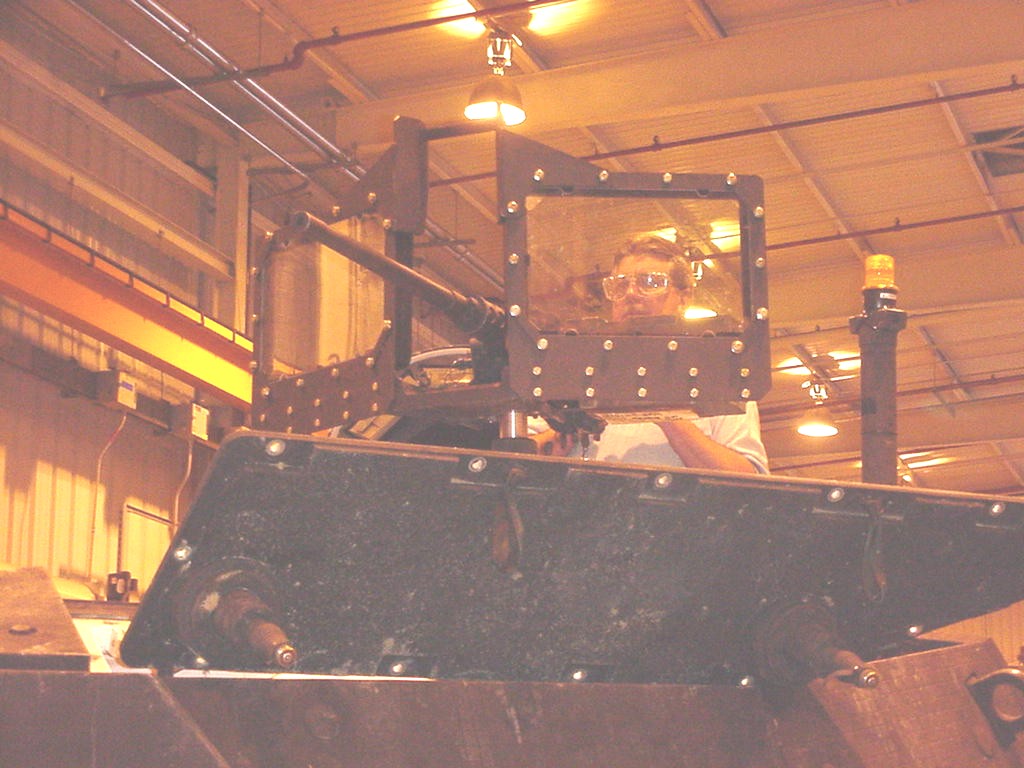
M8 Buford light tank with Transparent Armored Gunshield System (TAGS) ready for non-linear combats, anywhere in the world!
The U.S. Army's Mistake that Will Not Go Away: Has Light Tanks--But Often Refuses to Fly Them to Win Battles by Decisive Firepower & Maneuver
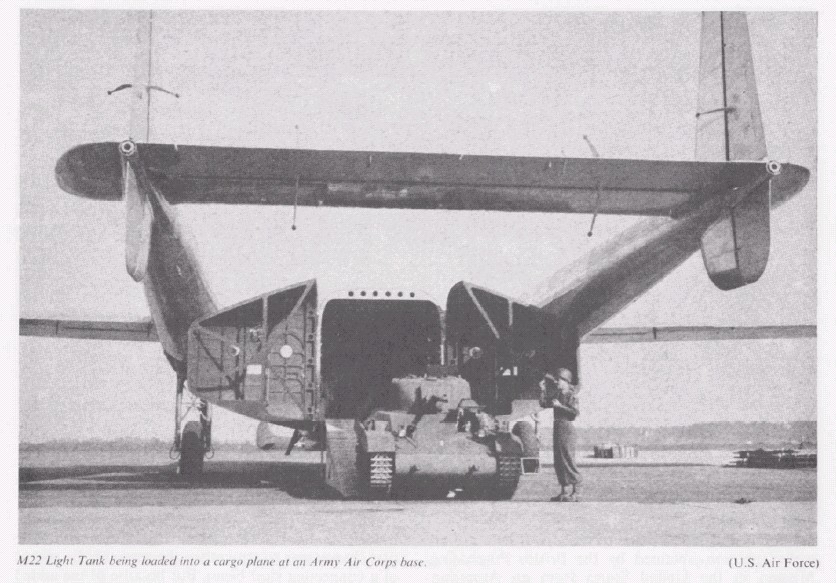
Persistent research into the history of the U.S. Army's misuse of its light tracked tanks continues to reveal new discoveries and horrors; a mistake that refuses to go away.
Battle losses in places like Task Force Smith, South Korea, Mogadishu, Somalia and Wanat, Afghanistan--where light tanks could have been brought to win the fight--but were not--have had no effect on successive generations of Army bureaucrats to fix our force structure.
In an Army Times article on September 23, 1996, SSG Christropher Audette warned us:
Audette emphasized the advantages paratroopers enjoy in having a tank that can be air-dropped."When we heavy drop our tanks at 1,200 feet, and we follow two minutes later at 800 feet, we meet our tanks on the ground. Within 10 minutes we are moving toward our objective with a squad of infantry on our tanks ready for combat," he wrote.In a recent interview, Audette said subsequent events had done little to change his views. "You can't send light infantry into a hostile area without any sort of light armor support at all," he said. "They just don't have the firepower to defend themselves.".
THIS IS EXACTLY WHAT IS HAPPENING NOW! AMERICAN LIGHT INFANTRY WITHOUT LIGHT TANKS GETTING CREAMED IN THE MOUNTAINS OF AFGHANISTAN!--JUST AS AUDETTE WARNED US.
Even battle victories where light tanks were taken to the fight ad hoc--in places like the Pusan Perimeter and march to the Yalu river in Korea, Vietnam, Panama and mild successes like in Northern Iraq have also absurdly had no effect on Army bureaucrats and force structure! Since objective reality--negative (-) or positive (+) --has no effect on successive generations of Army bureaucrats--as well as the rank & file, it's clear the problem is a subjective one that keeps being perpetuated in the Army bureaucracy and non-professional culture. This essay will ascertain the blame and propose the needed corrections.
Prologue 1945: We Have Excellent Light Tanks
Our story begins with a generally-agreed by most experts as an EXCELLENT light tank, the 18.4 ton, steel M24 Chaffee
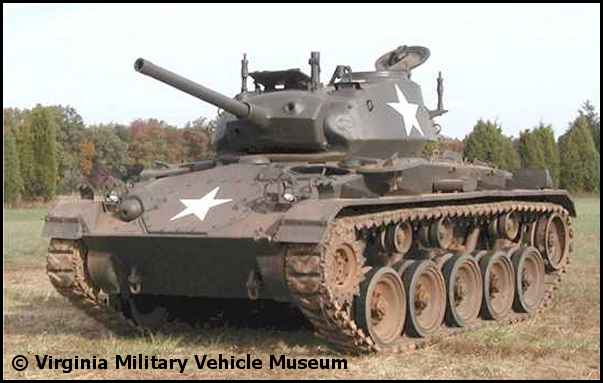
http://en.wikipedia.org/wiki/M24_Chaffee
...introduced in 1944 with the same 75mm gun as on the Sherman medium tank. M24s are still being used today by some of our allies some like Norway upgrade them (NM-116 variant) with safer M113 Gavin diesel engines and 90mm guns with better stabilized optics. In fact, at 24 tons combat loaded, the coincidentally named "M24" was exactly the same weight as the German Panzer IV "medium" tank which was really a LIGHT TANK being only overweight by 4 tons from the 20 definition limit--and both had 75mm guns. So the reality that lying tankers don't want to admit is that the vaunted German Army they like to cite out-of-context to foist their lying bullshit to con us into ever heavier and heavier tanks, WON THE FIRST HALF OF WW2 (1939-1942) IN LIGHT TANKS while on the offensive. When the Germans received heavier tanks with bigger guns in 1943 they were on the DEFENSIVE. The key turning point in North Africa according to legendary tank pioneer and WW2 combat veteran Kenneth Macksey in his masterpiece, Tank versus Tank (page 96) was when we delivered make-shift M3 Grant medium tanks with 75mm guns in the hull that could shoot high explosive (HE) shells to blast the exposed German 88mm gunners that were decimating them in their absurd tank duel charges. Today, the towed anti-tank gun has been mostly replaced by anti-tank guided missile (ATGM) teams; yet American light infantry doesn't have ANY light tanks firing HE shells or mortars to thwart them as the British learned they needed the hard way in North Africa--and the Israeli Defense Force (IDF) years later--and not that far away. German 88mm AA-AT guns devastated American infantry without tanks to protect them with suppressive fires in places like the Huertgen forest, and ATGMs helped evict dug-in Argentine infantry in the Falklands war.
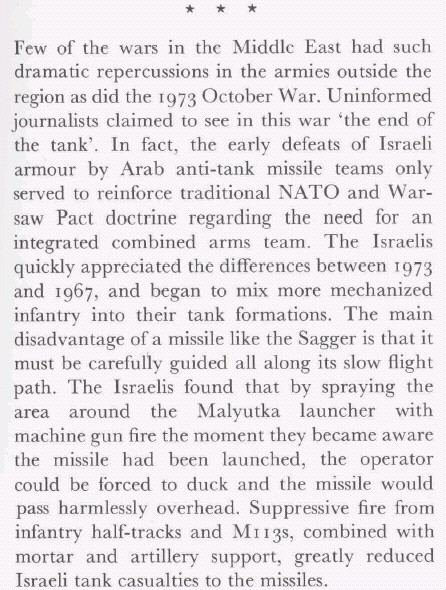
Macksey writes:
"The one hope in the British stable, ready in time for the renewal of heavy fighting in May, was the M3 General Grant, put together quickly by the Americans in 1941 as a stop-gap AFV with a dual-purpose gun of 75mm caliber. Based upon the experimental T5 tank of 1938, Grant evolved, under British guidance, from the initial M3, General Lee, into an AFV of tactical inconvenience. The sponson-mounted 75mm gun, set low to one side of the hull and with limited traverse, could not be brought into line-of-sight without exposing the entire high-sided hull of an AFV whose 65mm armor was good but whose rivets tended to fly about inside when struck. Nevertheless, even the 31 calibers 75mm, first fitted before replacement with the better 40 calibers weapon, had the capability of defeating most German armor up to 1000m; but most important, it at last gave British tank crews a weapon which could fire high explosive, desirably from hull-down positions, against enemy anti-tank guns. This spelt the eventual doom of the dual-purpose 88mm gun and many another German gun besides"
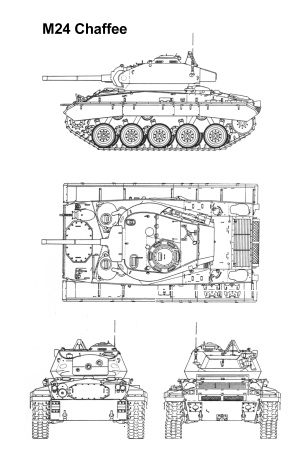
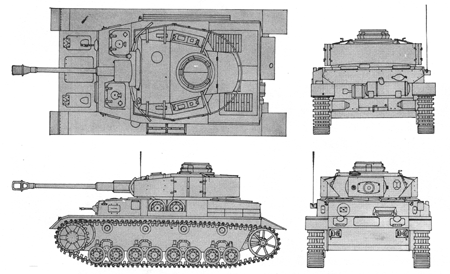
Unfortunately for the M24's low-velocity 75mm gun, this second generation of German medium, Panther and heavy Tiger defensive tanks were impervious to front and side shots from not only the Sherman with the same 75mm gun, but even our increasingly heavier and heavier 37mm and 57mm towed anti-tank guns--ever more difficult for the non-mechanized, walking infantry to man-handle. The 76.2mm Sherman "Firefly" was able to knock-out a Tiger I tank at 1, 000 yards from the front but these were few and far between since only the British Army fielded them. Recoilless rifles and rocket launchers "Bazookas" were embraced by the infantry as the short-range anti-tank, assault firepower "solution" at war's end. Yet 5 years later the 2.36" bazooka would fail miserably against Communist T34/85 medium tanks during the Task Force (TF) Smith debacle.
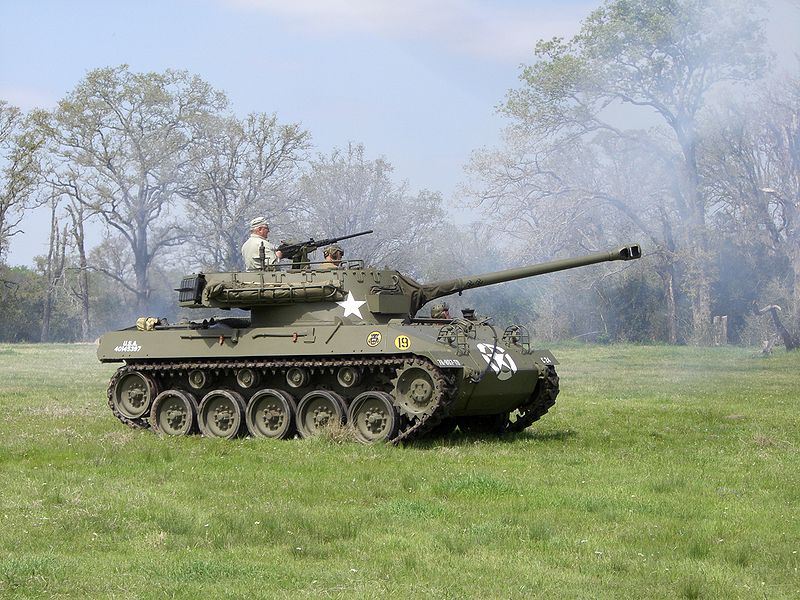
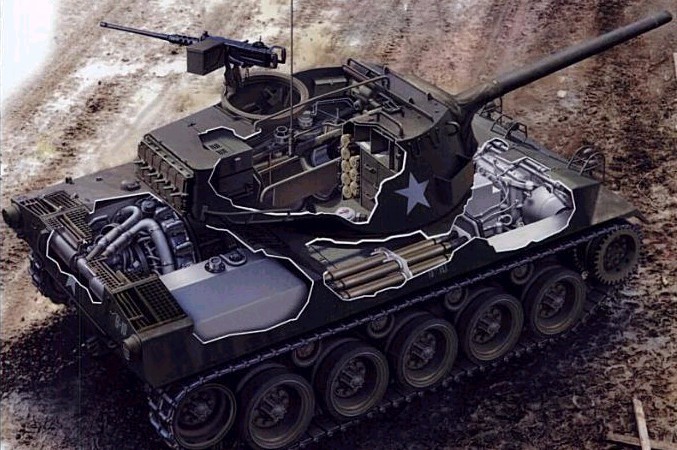
Note that the even superior, extremely fast 60 mph 17.7 ton M18 Hellcat light tank [http://en.wikipedia.org/wiki/M18_Hellcat] with a 76mm gun was highly successful killing all German tanks in WW2 and a 90mm gun-equipped Super Hellcat was available. Wiki notes while the American 76.2mm gun was not as powerful as the British version that used 5.5 pounds more powder it could knock out most tanks--including the T34/85 mediums the U.S. Army would face 5 years later in Korea:
http://en.wikipedia.org/wiki/76_mm_gun_M1
"While the 76 mm had less High Explosive (HE) and smoke performance than the 75 mm, the higher-velocity 76 mm gave better anti-tank performance, with firepower clearly superior to the Soviet ZiS-S-5 85 mm gun of the T-34-85 and similar to many of the armoured fighting vehicles it encountered, particularly the Panzer IV and StuG vehicles."
The problem was the M18s were in a sub-bureaucracy called "Tank Destroyers" that died when its patron, LTG McNair was killed in the botched Operation COBRA USAAF carpet-bombing in 1944--and was not around to stop the bureaucracy from disbanding them. With cavalry branch also disbanded the same year, the tank-dueling mentality in heavier and heavier tanks on the plains of Europe in main bodies clouded the minds of the new "Armor" branch.
At war's end, a light tank company of M24s would be ASSIGNED ad hoc to the infantry division manned by "tankers"--outsiders--easily ignored and not factored into tactics and combat plans. In short, the walking infantry refusing to light mechanize itself, didn't want to be bothered with operating its own towed AT guns or its own light tanks to combat enemy tanks and provide fire support against dug-in foes. More important activities like continuing the pre-WW2 "From Here to Eternity" routine of slow dismounted infantry drills and after-hours carousing beckoned. While the Army Airborne Center and Ground Forces Command somewhat wanted to get light tanks to the fight--they didn't have any airplanes available from the new separate service bureaucracy U.S. Air Force that could lift them intact--and didn't think ahead to make sure the new Army CG-10A Trojan Horse glider was large enough to carry light tanks--like the British did with their Hamilcars to fly Tetrarch and our own M22 Locust 37mm gun light tanks into Normandy on D-Day and across the Rhine.
 www.youtube.com/watch?v=vWjQ7yPJtaA
www.youtube.com/watch?v=vWjQ7yPJtaA
We know from Keith Flint's book, Airborne Armour that the mere sight of the little Tetrarch light tanks resulted in the Germans not counter-attacking the British 6th Airborne on June 7, 1944. Why the American Airborne did not use its own M22 Locust light tanks and bought some Hamilcar gliders to deliver them is a big question--in light of the Arnhem failure and heavy casualties throughout the war due to a lack of fire support from an armored platform that could wade into enemy machine gun fire and suppress/destroy them. You hear a lot of commentators TODAY complaining about the Tetrarch/Locust's 37mm guns not threatening German tanks, but when you read actual WW2 combat reports infantry loved using towed 37mm AT guns to bust pill boxes and dug-in enemy positions.
combatreform.org/Combat-Lessons-01-the-Rank-and-File-in-Combat-What-They-re-Doing-How-They-Do-It-1944.pdf
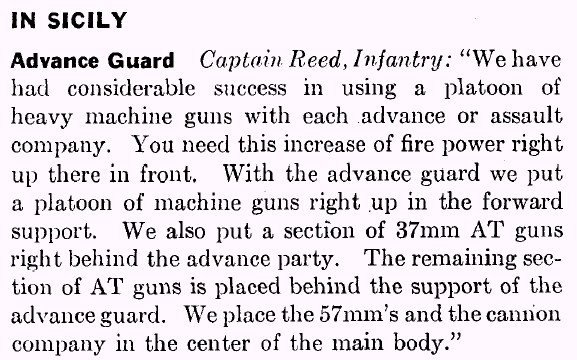

Thus, light tanks with 7.62mm medium machine guns and cannon shooting 37mm HE shells could have provided critical fire support that could not be deterred by enemy MG42 machine gun fire--which often suppressed and pinned-down our infantry:
combatreform.org/lightmachineguns.htm
In fact, we already had 3 years of success with 37mm gun and 7.62mm machine gun M3/M5 Stuart light tanks, so why was it aok for them to just be used for recon and fire support--but not for the M22?
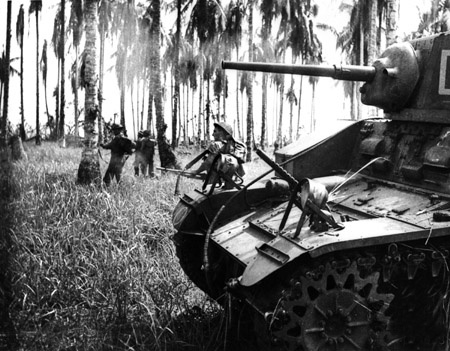
No one expected them to kill Tiger heavy tanks...above is a M3 helping take Buna in New Guinea...
Hamilcar
When CG-20 glider prototypes that could deliver light tanks became available--the Army Airborne did not take note of them. When C-82 transports became available, the Army didn't take advantage of them, either.
Army Considers M24 and M18 Light Tank Air Delivery--then Gets Lazy
combatreform.org/freedroplighttanks1.jpg
From AFV Weapons Profiles #46, Profile Publications, Windsor UK, 1972, Light Tanks M22 Locust and M24 Chaffee by Colonel Robert J. Icks, Page 100
As the quote above shows, both the M24 and the M18 could have been dismantled into (2) loads so (5) men could reassemble them in 3.5 hours. Is it just me, or do I detect that this IS NOT THAT HARD TO DO, so the Army saying "No" is pure lazy bullshit. Colonel Icks screws up his narrative on page 102 by whining that the somehow 3.5 hours of work was "impractical" and then whined that carrying M22 Locusts with turret removed and in a C-54 was bad because the delivery aircraft needed a runway to land on--forgetting the FIRST PICTURE IN HIS BOOK showing a M22 offloading from a C-82--that did not need smooth runways. Its the picture I have posted at the top of this essay. Icks' anti-Airborne prejudice clearly shows.
1950: Disaster with Tank-less Task Force Smith in Korea
The result will be the M24 light tanks assigned to the 24th Infantry Division in Japan are not flown in by USAF aircraft along with Task Force Smith, that proceeds to get itself over-run by North Koreans with T34/85mm gun medium tanks. The M24s are brought over later by ship to the Pusan perimeter where they are at least able to hold off the heavier gunned T34/85mm medium tanks until Shermans and M26 Pershings with 90mm guns can be scraped together.
Page 105, Colonel Icks praises the M24 to the hilt.
Had the Airborne and Infantry branch not attempted to duck responsibility for its own AT/assault capabilities (foisting the job onto lazy tankers who don't want to fly), and been alert, M24 Chaffees or better yet--M18 Super Hellcat light tanks with 90mm guns superior to the Communist 85mm guns would have been ORGANIC to the infantry division--and USAF air delivery means secured to fly them to the fight.
Research shows even as things were, M3 half-tracks could have been flown underneath USAF C-54 four-engined transport planes to accompany TF Smith to Korea. Once there, 75mm pack howitzers or 75mm recoilless rifles, quad .50 caliber heavy machines guns could have been fitted to them for firepower and the half-tracks could have transported TF Smith infantrymen and towed artillerymen with some armor protection from NORK enemy fires--and insured they withdrew in good order. So the question remains how could the turreted M24 Chaffee or had we been-on-the-ball, M18 Super Hellcats with 90mm guns with overmatching firepower have gotten to the fight using what was available at the time?
Lower the River: Make the Light Tanks Lighter
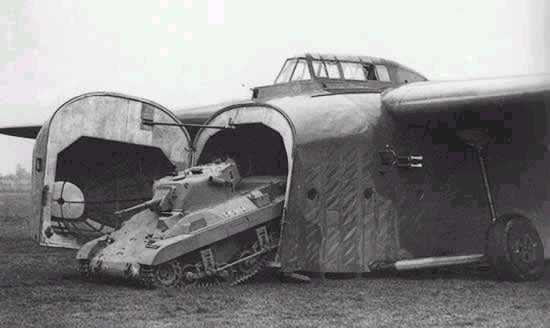
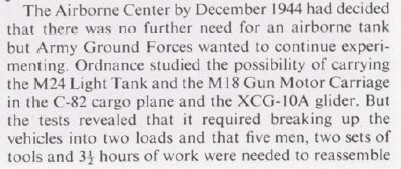
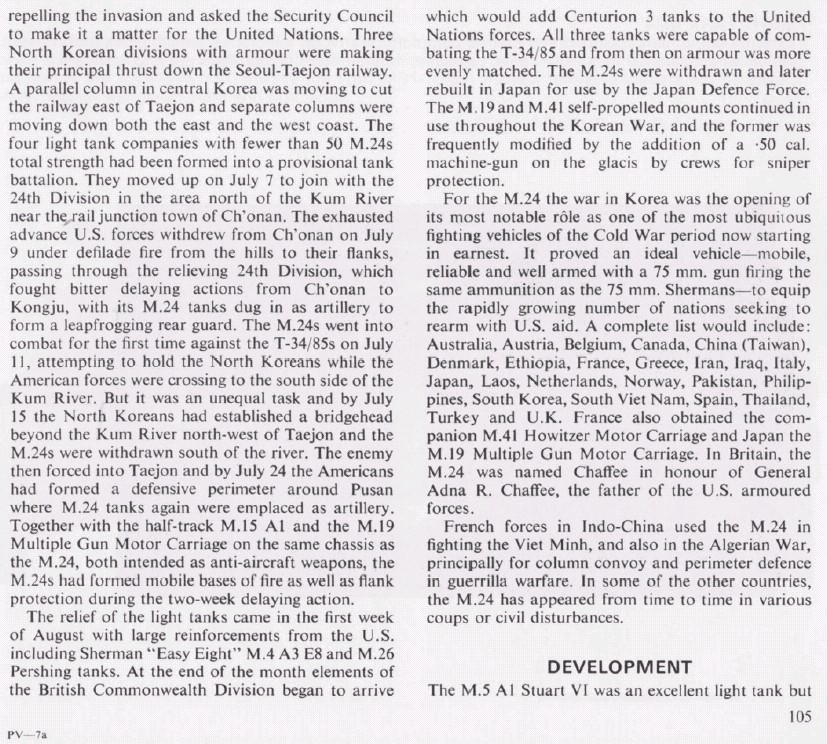
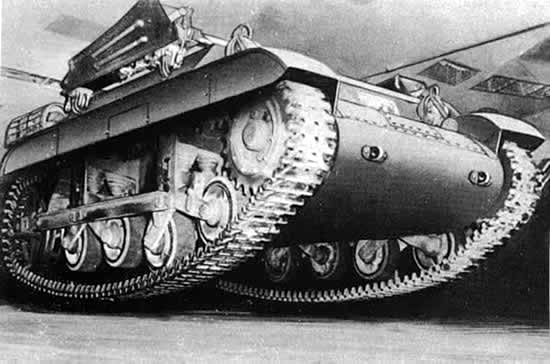
The first answer is of course NOT HAVE A TURRET like the most successful tanks of WW2, the German STUGs were arranged, to save weight and lower vehicle height while insuring powerful gun armament able to kill any sized enemy tank. More on this later.
Could M24/M18 turrets have been temporarily removed for USAF C-82/C-119 air transport and then re-assembled once in South Korea?
C-119 Flying Box Car
http://en.wikipedia.org/wiki/Fairchild_C-119_Flying_Boxcar
We already know the answer here. YES.
A mere 5 men and 3.5 hours of work into (2) loads. If turrets were removed from the M24/M18s, they could have been transported in less than 10-ton payload stages by C-119s to Japan and re-assembled to fire support TF Smith. We know this because of our own tests---and even the cash-strapped French did this in Indochina 4 years later delivering 10 x M24s to Dien Bien Phu. So really, there is no excuse.
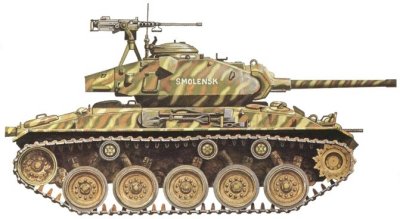

Therefore, a lot of the blame rests on the Armor branch "tankers" having a good time chasing Japanese wine, women and song during occupation duty for not having developed the vigor to fly themselves to battle in pieces to pitch in and help. Remember the 75mm pack howitzer that we disassembled into 5 parts and even parachuted them into pieces linked together by a rope, then assembled them together and used them in combat in WW2? How come American tankers don't have the moxy of WW2 Airborne Field Artillerymen?
It's a Matter of ATTITUDE. Brits have a Good One, American Tankers do not.
In the British military, disassembling a field gun in order to transport it to win battles is a HONOR--not a chore as we uncultured Americans look at it. In the Boer War, Royal Navy gunners disassembled a field gun to win the siege at Ladysmith. Details:
http://en.wikipedia.org/wiki/Field_gun_competition
After this victory, the Brits created a FUN (is this a curse word?) COMPETITION to commemorate the event and the ATTITUDE and SKILL to adapt using an obstacle course.
 www.youtube.com/watch?v=VslIuK-bAHg
www.youtube.com/watch?v=VslIuK-bAHg
So the question has to be asked.
If you have to disassemble a light tank to fit into an aircraft, WHY NOT MAKE IT A COMPETITION? Challenge light tank crews (give them a 5th man to be rear deck AA gunner) to see how fast they can dissassemble and load their light tank into a C-119 and then reassemble it, put it into operation and fire their gun at some targets for time? Too much fun? Too much military utility? Or is wasting time mowing lawns and concocting perfect paperwork from desk and laptop computers to brown-nose the bureaucracy more important?
Americans tankers suck. What a bunch of lazy, closed-minded losers. How we conquered the west is a great mystery. The current generation or even "the greatest generation" didn't do it, that's for sure. It's no surprise that tankers whine about "breaking track" and lust for rolling on air-filled rubber tires to their deaths in ever increasingly-sized land mine blasts.
This convenient, flimsy self-created excuse that one's tanks are "too heavy to fly" is often used by those in Armor branch and can been by the thousands of their tanks sitting in motor pools collecting dust here in CONUS when the USAF has C-17 Globemaster III turbofan jets that can fly ANY of them--even 70-ton M1 Abrams heavy types to any place in the world--as the infantry gets creamed on foot and in absurd road-bound wheeled trucks in Iraq/Afghanistan. As we will see, this excuse was NEVER true--even when we were limited by piston-engined aircraft!
Raise the Bridge: Making Aircraft Larger to Fly Existing Light Tanks
Gliders: What Was Wrong with American Gliders in WW2?
The first conclusion was that as typical, know-it-all Americans we didn't see any military use for gliders until the Germans "got in our faces" and seized Crete in 1941. Then, we went crazy on a crash-course to catch-up--and began handing out contracts to anyone promising they could build gliders. Many men lost their lives in poorly constructed gliders, giving the concept a bad reputation--when actually it was due to American ignorance and incompetence.
What Made our Gliders Large Enough to Carry Jeeps?
Was it USAAF General Henry "Hap" Arnold ordering a "Flying Jeep"?
U.S. Army Report: "Development and Procurement of Gliders in the Army Air Force 1941-1944"
combatreform.org/Development-and-Procurement-of-Gliders-in-the-Army-Air-Force-1941-1944-USA-1946.pdf
On page 44 on the PDF document:
combatreform.org/generalarnoldsuggestsflyingjeep.jpg
Or British Jealousy Since their Gliders could carry Tanks?
combatreform.org/vonkarmansayshamilcarandlighttankjealousyledtojeepglider.jpg
Von Karman in his 1945 report on future Airborne warfare [combatreform.org/VKarman_FutureAirborneArmies_C5.pdf] contradicts the Arnold explanation and says it was jealousy after seeing the British Hamilcar glider that could carry a LIGHT TANK, that the USAAF insisted its gliders at least carry a jeep or a towed gun.
_____________________________________________________________
SIDEBAR: Flying Jeep Gliders? Combination Air/Ground Vehicles?
combatreform.org/vonkarmanairbornegrasshopperspage33.jpg
Karman also calls on the Airborne to have a folding-wing, STOL observation "grasshopper" plane that could be parachute dropped and even drive itself on roads! Similar to what Arnold wanted by a jeep that could fly.
combatreform.org/vonkarmanwantsflyingjeepairgroundvehicle.jpg
_________________________________________________________
So What Happened to Post-WW2 U.S. Gliders? Why Were They Not Made to Deliver Light Tanks? (One model was)
No Power; Towed into the air and to the Assault Zone, Snatched or discarded
The short answer is there was no excuse. As said before, in WW2 we could have got the plans from the British and built copies of their Hamilcar gliders to transport our own M22 Locust light tanks. These could have been improved after the war. Von Karman shows the pathetic state of U.S. glider payload capabilities far short of the British in the chart below.
combatreform.org/vonkarmangliderprogresschart.jpg
The long answer is contained in the long AAF glider report. Note in the chart above, the "new" American glider payload was set a mere 10 tons--far too little to transport even the 17.7 ton M18 Hellcat of the era. What were they thinking?
"Reader's Digest" summation:
Basically, the Waco CG-4A that could carry either a dozen infantrymen or one jeep or one towed gun (but not both at the same time) was GOOD ENOUGH for us to get by in WW2; so they mass-produced it and ignored larger gliders. Even the mildly improved CG-15 version of the CG-4A was too much deviation and not mass-produced. After the war, they just wanted to continue along with their infantry-centric glider mentality--which of course would lose out to men jumping with parachutes who earn jump wings. THE WHOLE POINT OF GLIDERS IS TO DO THINGS WE CANNOT DO WITH PARACHUTES! Things like deliver light tanks in the era of payload-constrained, piston-engined transport aircraft. The glider lightens the payload by giving it silent wings. A set of wings for the payload towed by a powered plane with its own wings. An air trailer. It takes less energy to TOW something than to carry it. Another thing gliders can do better than parachutes is assault an objective from a stealthy stand-off using their 10-to-1 or better glide ratio to deliver intact small units and--light tanks. Maybe not ego-gratifying enough for a badge, but necessary for winning Airborne Warfare. However, as you will see even when we got the necessary cargo parachutes and rear-ramp equipped transport planes to deliver light tanks, at times the tankers refused to do it; and this is the current disgusting condition we are in today.
CG-15
The CG-15 had less wing span in order for it to be towed at faster speeds. Had better pilot visibility and crash-worthiness.
CG-16
The infantry-centric mentality U.S. Airborne division wagging the logistics tail. As WW2 raged, when innovative designs like the Burnelli-style flying wing XCG-16 appeared, there was no time to pursue it, even though it offered a cushioning ground effect upon landing. Had the CG-16 been supersized to carry a light tank it would have offered a compelling capability. To see a powered Burnelli jet transport that can carry light tanks: Goodbye FTR, Hello Air-Mech-Strike!
CG-17
A sharp AAF LT suggested removing the engines from a C-47 and making it into America's first all-metal glider. It worked! It worked so well, it could be towed over 200 mph and carried more cargo than a powered C-47!
So why didn't they make C-47 gliders? The bureaucracy claimed that the C-47 couldn't crash land like a purpose-built glider. Charles Day writes:
The XCG-17 could carry 49 troops or three Jeeps or two 105mm howitzers with small tires. In comparison, the XCG-10A could carry 42 troops or two 105mm howitzers with combat tires or one 155mm M1A1 howitzer or one 2 1/2 ton 6x6 truck or one 1 1/2 ton 6x6 truck. Despite superior flight characteristics, the XCG-17 was deemed unacceptable because it did not fit the USAAF glider requirement that it be capable of landing on unimproved areas normally not suitable for aircraft.
Excuse me, but the C-47 with wheels retracted has a part of the wheel exposed for the very purpose of making belly landings smoother.
combatreform.org/gasolinejeepcausedburnedupglider.jpg
Airborne Soldiers would have been better protected during the assault landings, saving many lives. It seems the real reason was the bureaucracy was already committed to CG-4A mass-production using non-airplane steel tubing and wood and didn't want to change and start using powered airplanes made of aluminum for the task.
CG-13
The only large glider selected by the AAF to be built was the CG-13--that could carry 30 troops or a towed gun and a jeep. It was used once in the Pacific during the Aparri jump in the Philippines in 1945.
At WW2's end there was more enthusiasm for the XCG-10A "Trojan Horse" which featured a rear loading ramp, but could only carry 10, 000 pounds of men or cargo---the nose-loading British Hamilcar already carried 16, 000 pounds (8T) into combat several times in combat.
CG-10 "Trojan Horse"
The XCG-10 was a large military glider capable of accommodating 30 troops or a freight load of 5 short tons. It is a high-wing cantilever monoplane with a deep forward fuselage tapering to a tadpole boom which supports the tail unit. At the break in the bottom lines of the fuselage clam-shell doors give access to the main hold 30 ft.(9.15m) long, 7 ft. (2.14m) wide and 8 ft. 6 in. (2.59m) high, which can accommodate a 155mm howitzer or a 2 1/2 ton truck. Structure is entirely of wood with plywood covering. The wings are fitted with Fowler-type landing flaps and have an overall span of 105 ft. (32m). (info from Jane's Fighting Aircraft of World War II)
Additional info from Charles Day, "The XCG-10 and XCG-10A were two different craft. The 10 was a 30 place glider and the 10A was 42 place. Although some sources say the 10 did not exist and the project was changed to 10A in design stage, the 10 was built both as a static test article and a flight test article. The internal hold size was slightly larger for the 10A to accommodate the GM 6X6 truck. The wingspan stayed the same."
CG-20
WW2 is now over, and all-metal construction is now a possibility. The Army Airborne is still interested in gliders until 1953 at the end of the Korean war.
Karman describes a convoluted mess at Army meetings on air transportability. Their documents list the M24 Chaffee light tank at 19 tons on the Army's shipping list of items desired to fly by air.
vonkarmanidiotic1945transportandgliderdecision1.jpg
It appears the Army brain trust Karman is interfacing with does not realize that the Airborne needs to get light tanks to the fight with something NOW--and not lust after a mythical 50-ton aircraft to lift medium tanks--which incidentally will not arrive until 1969 with the C-5 Galaxy turbofan jet transport. Perhaps realizing this by reading advance copies of General Gavin's 1947 book Airborne Warfare, on 2 December 1946 Chase Aircraft gets a contract to build two prototype gliders--and they decide to build really big all-metal gliders--big enough to transport light tanks.
www.globalsecurity.org/military/systems/aircraft/cg-20.htm
The CG-20 could take off at 70K--but was limited to 40K due to weak tow planes that were available. Apparently no one considered using JATO rockets to help...the Germans used rockets to lift their Me321 heavy gliders into the air...
www.aviastar.org/air/usa/chase_xcg-20.php
When mounted with 4 x J47 engines, the CG-20 (C-123A) weighed
25, 000 pounds.
Each J47 engine weighed 2,707 pounds, so 4 x 2700 = 10, 800 lbs. total.
Thus, we can conservatively estimate that the pure glider CG-20 minus the J47 jet engines weighed 15, 000 pounds empty.
70K - 15K = 55K total payload
According to C-123 Provider in Action by Al Adcock, page 4, the CG-20's cargo compartment was 30 feet (360 inches) long, 12 feet (144 inches) wide and 10 feet (120 inches) high.
Clearly, the CG-20 had enough space inside for a M24/M18 light tank to fit inside and enough wing lift to be towed into the air to deliver them to the battlefield by crash-landing. In fact, the larger M41 that replaced the M24 at 23.5 tons and 126 inches could also be carried by the CG-20!
B-36 Peacemakers as CG-20 Glider Tows and Paratrooper Drop Ships?
http://en.wikipedia.org/wiki/Convair_B-36
Giving away the USAF's lies that they cannot spare any bombers for towing or dropping the Army Airborne in the 1940s and '50s is a startling fact that 384 monstrously huge prop-driven B-36 Peacemakers were built and deployed beginning in 1949. These 6, 000 mile inter-continental range, 86, 000 pounds of bombs each--but slow (under 400 mph)--bombers were soon obsolete for penetrating Soviet air space to do nuclear strike missions and replaced by all-jet B-52s. So when the B-36s were being replaced why not keep 100 x "CB-36s" around to tow a pair of CG-20 gliders with a light tank each to deliver a force of 200 x M18 Hellcats/Super Hellcats or M24 Hellcats from the 1st and 4th Infantry Divisions assigned to the XVIII Airborne Corps or M113 Gavins and crews from the 82nd and 101st Airborne Divisions each in a CG-20 glider and two rifle companies of 200+ Paratroopers from the bomb bays which were the size of 3 railroad freight cars? That's 50 battalions of light-mechanized Airborne infantry! That's 16 Airborne brigades! More than enough to transport the entire 82nd and 101st Airborne divisions anywhere in the world to be the Strategic Army Corps--"STRAC" or Skilled, Tough, Ready Around-the-Clock.
Dropping Paratroopers from bomb bays was already combat-proven with the British and French SAS in WW2; and by the U.S. Army from B-26s and B-29s in the Korean war.
combatreform.org/axisandalliedspecialoperationsaviation.htm
Here is where it gets EXTREMELY FASCINATING. Had we developed drogue-chute activated parachutes like the Russian VDV Airborne uses, the CB-36 Airborne force could deploy at high altitudes at 50, 000 feet with pressurization and then dive down to 10, 000 feet--still above enemy small arms and most air defense artillery (ADA) weapons fire ranges--to drop the Paras from the bomb bays, then release the CG-20 gliders to land at an assault landing zone adjacent to the personnel drop zone for rapid assembly into Airborne Battle Groups. Wiki notes:
The wing area permitted cruising altitudes well above the operating ceiling of any 1940s-era piston and jet-turbine fighters. All versions of the B-36 could cruise at over 40,000 ft (12,000 m).[
The large wing area and the option of starting the four jet engines gave the B-36 a wide margin between
The B-36's piston 3, 500 hp. engine cooling problems could have been solved by replacing them each with a C-130 T56 turboprop 4, 200 shp engine--gaining 700 more horsepower per engine--like adding a defacto 7th engine. Even better would have been using British Mamba contra-rotating turboprops.
B-29 alongside a B-36
Low Power; Towed into the air and Assault Zone, Flies Self Back
If two small engines were fitted, the CG-20 empty could take-off and fly itself back to base if the assault landing zone was suitable. The U.S. modified a CG-4A with engines to enable self-recovery. Another fascination idea was to tow the low-powered glider to get it into the air, then disconnect and let it fly itself to the assault landing zone since it takes more power to take-off--but less to stay aloft. The British Hamilcar with a P-38 Lightning on top as a powerplant/parasite fighter was an extremely clever idea with lots of tactical capabilities we should have at least tried. Details:
combatreform.org/airbornewarfare.htm
Full Power: Flies Self to Battle and Back
In fact, with 4 x J47 jet engines the CG-20 (C-123A) could take-off with 60K, so 60K - 25K = 35K total payload = still enough to fly the 17-ton M18 Hellcat up to speeds of 500 mph! Wow. Fantastic for 1950, huh?
Yet at the time, the USAF rejected the jet-powered CG-20 because its J47 engines were under-slung the wings and it ingested dirt. A flimsy and suspicious excuse from a service bureaucracy that always embraces any excuse to stay near pampered air bases. Why didn't anyone suggest PUTTING THE ENGINES ON TOP OF THE WINGS like the Fokker VFW614 commuter airliner?
http://en.wikipedia.org/wiki/VFW-Fokker_614
The aircraft was revealed to be of unconventional configuration, with two quiet, smoke-free, but untested M45H turbofans mounted on pylons above the wings. This arrangement was used to avoid the structural weight penalties of rear mounted engines and the potential ingestion problems of engines mounted under the wings, and allowed a short and sturdy undercarriage, specially suited for operations from poorly prepared runways.
Or at the top of the wings and using exhaust for Coanda effect like the YC-14 or the Russian AN-72 Coaler?
http://en.wikipedia.org/wiki/Antonov_An-72
An unusual design feature of the An-72 and An-74 is the use of the Coandă effect to improve STOL performance, utilizing engine exhaust gases blown over the wing's upper surface to boost lift.
The bottom line here is that the U.S. Army/Air Forces, and then the USAF made a mistake and should have purchased CG-20s in SOME CONFIGURATION in order to deliver M24/M18 light tanks for an immediate operational capability. These could have been ready by the time of TF Smith in Korea in 1950. Instead, everyone was too busy having fun celebrating the end of WW2.
Free Dropping Tanks or Kiwi Pods, Possibly Glider Kiwi pods
As bizarre as this sounds, the Russians had already dropped modified light tanks from a few feet above the ground from under low flying bombers. Photos and video:
combatreform.org/concepttoc.htm
The problem is getting the tank's tracks to go fast enough to meet the lowest possible speed of the plane to stay only a few feet above the ground or briefly to touch down.
combatreform.org/freedroplighttanks2.jpg
The goal is to not need a runway-but to be able to use any grassy field. Von Karman suggests instead of dropping the tank directly onto the ground, have it in a wingless, "Kiwi" pod with wheels or a flat surface to slide fast enough to come to a safe stop.
combatreform.org/vonkarmankiwipods1.jpg
Powered Transport Aircraft
Working with the 1945-50 time frame of demobilization and no monies, what could have been done to transport turreted M24s/M18s if one was too lazy to remove them and reassemble them? What if you needed them to fight immediately after air delivery?
USAF 1945-1950 Options to Fly Turreted Light Tanks
B-29 Superfortress
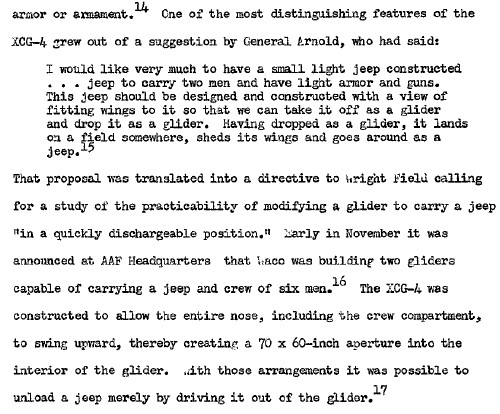



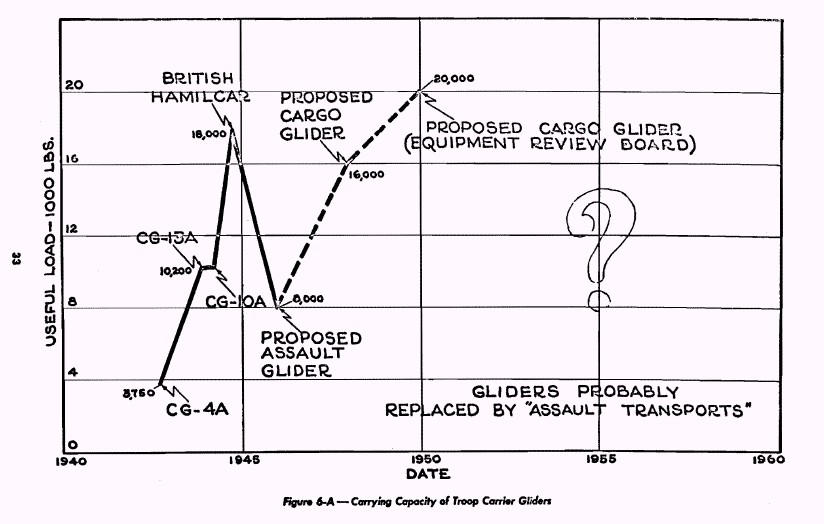
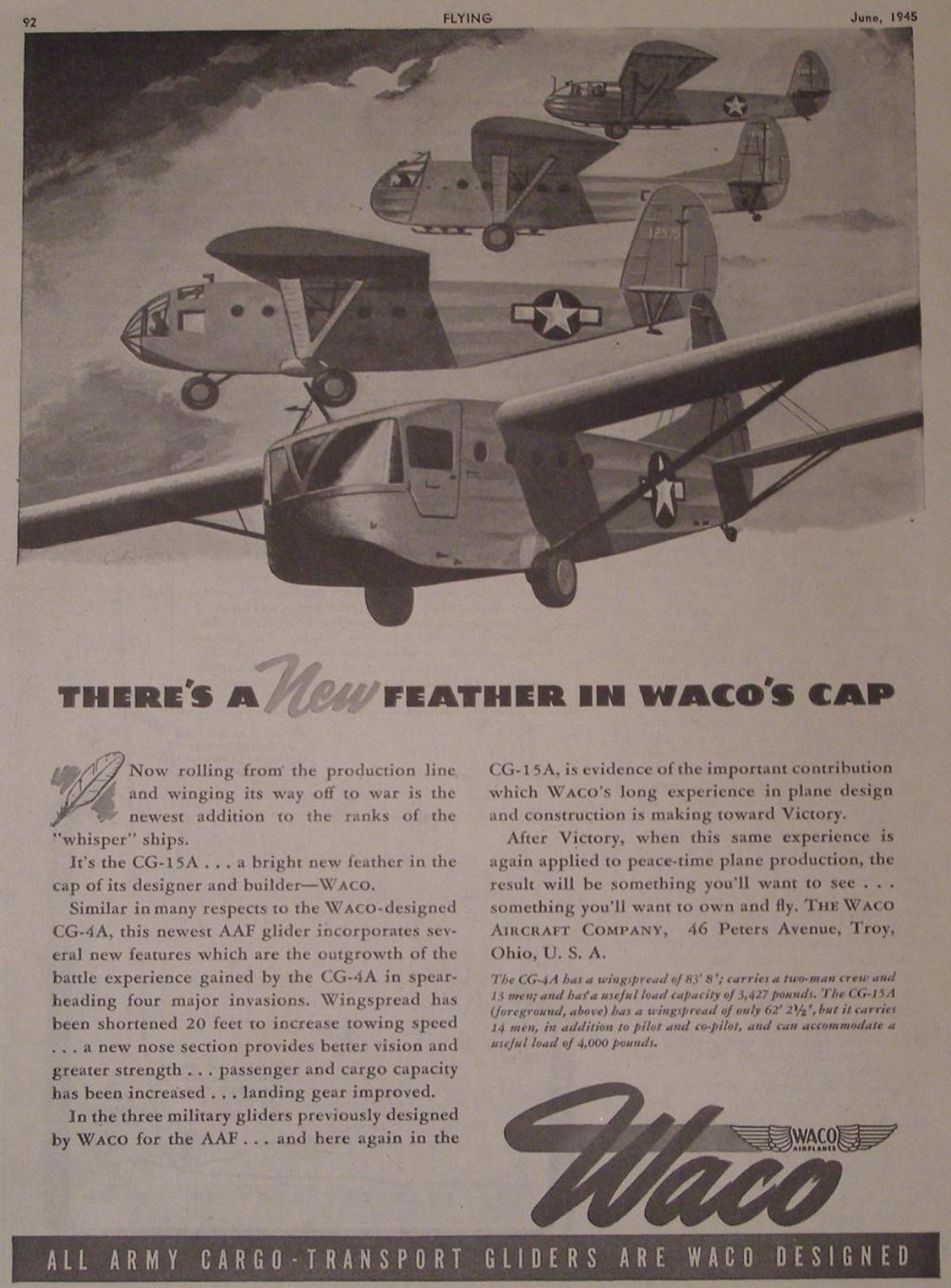
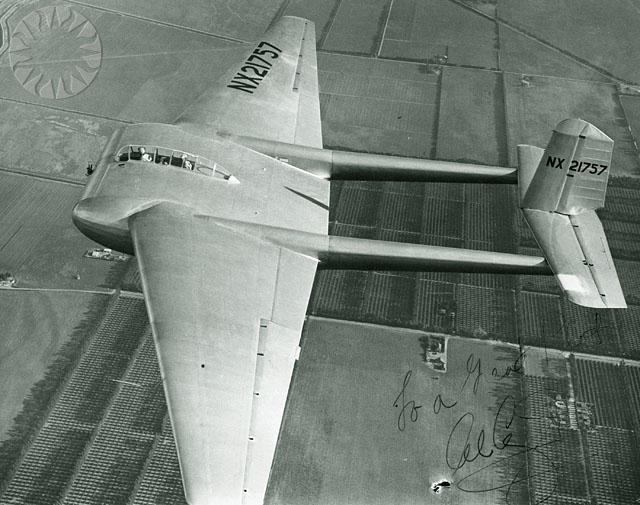
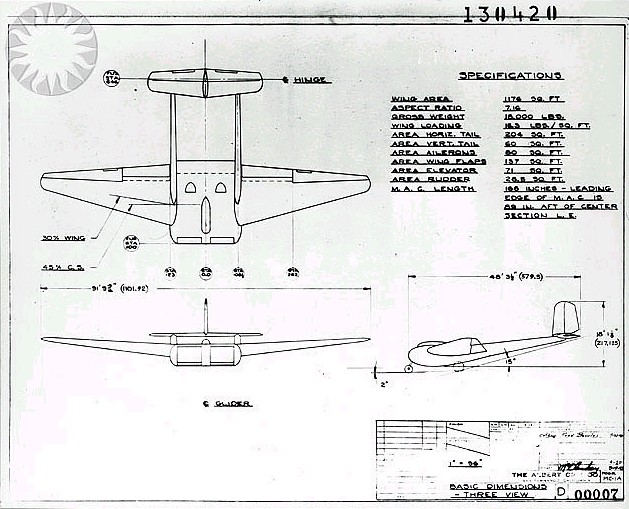
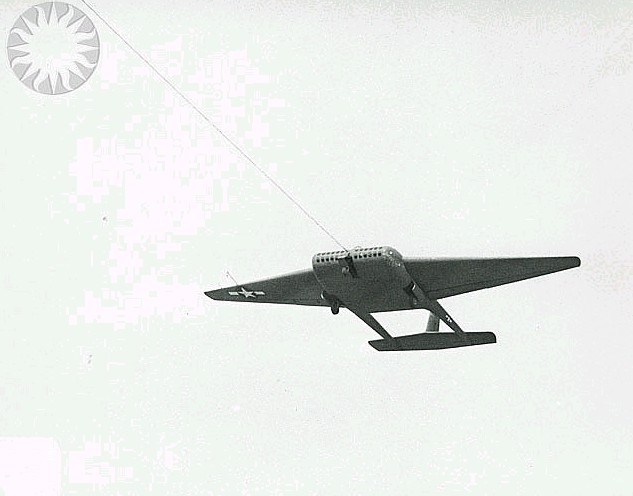
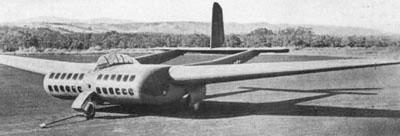
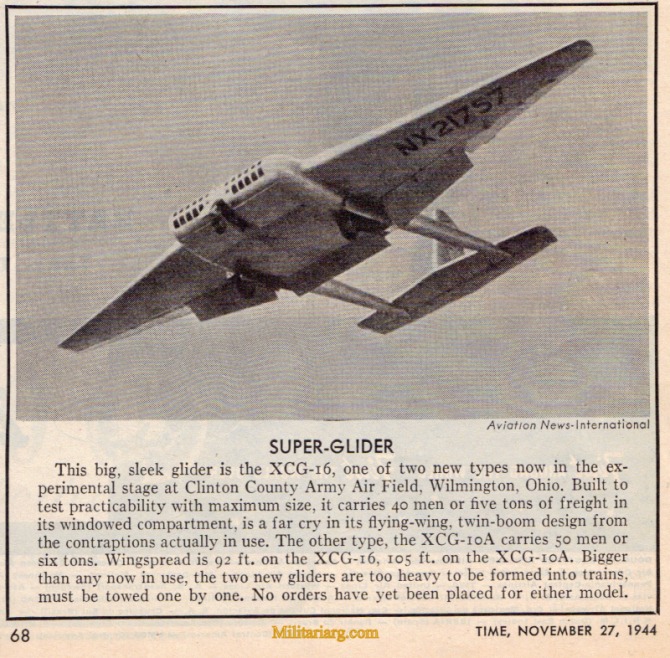
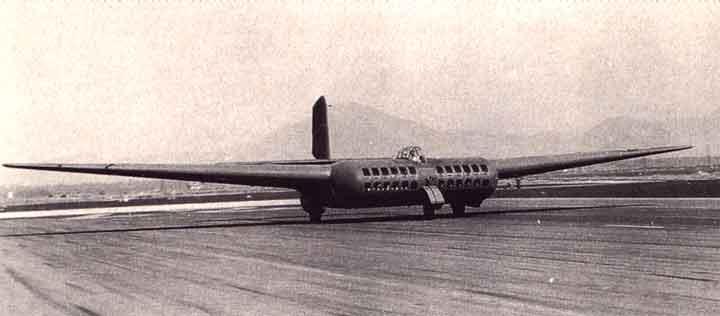
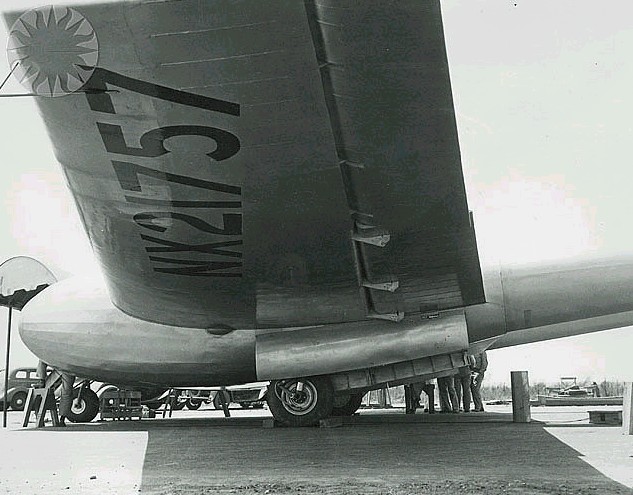
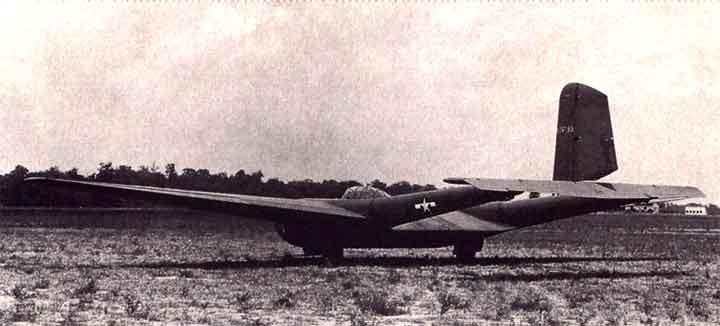

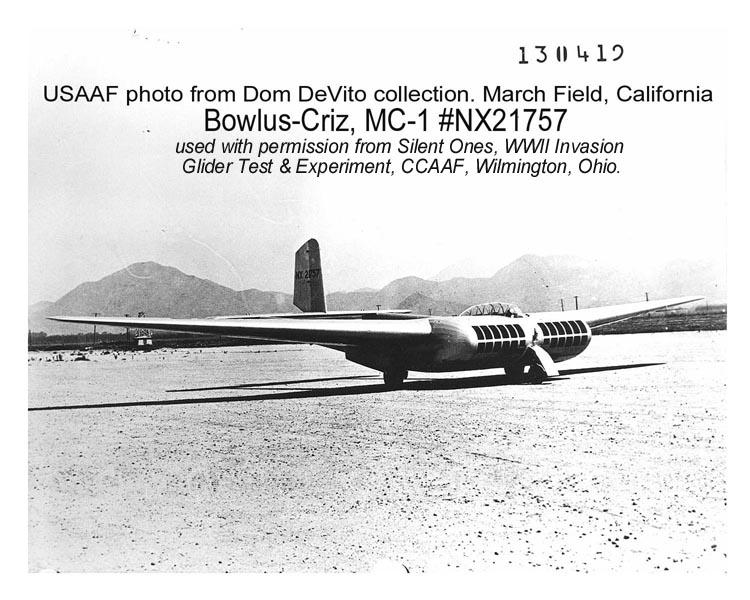
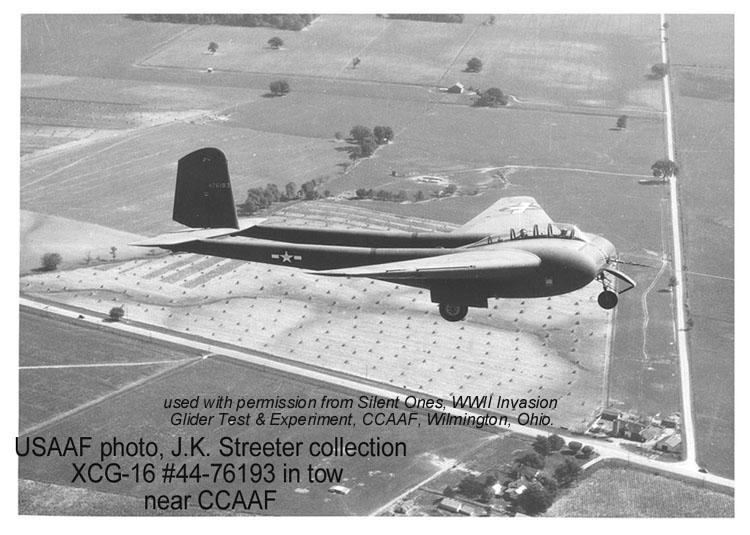
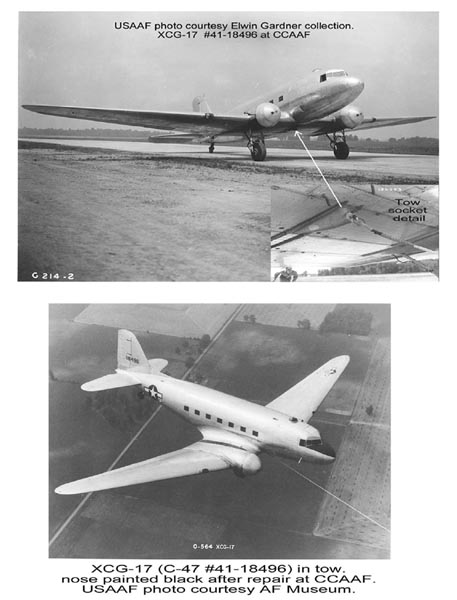
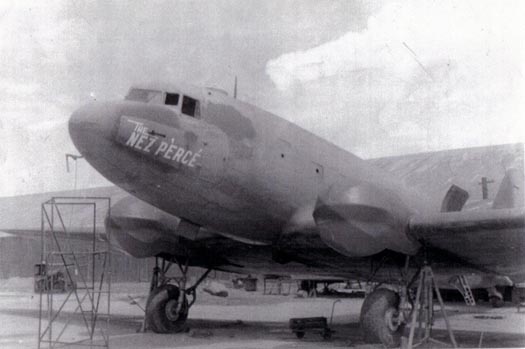
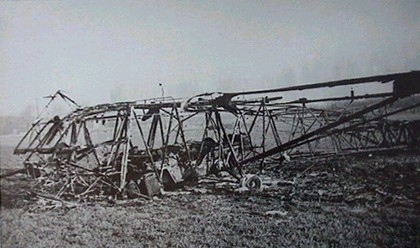

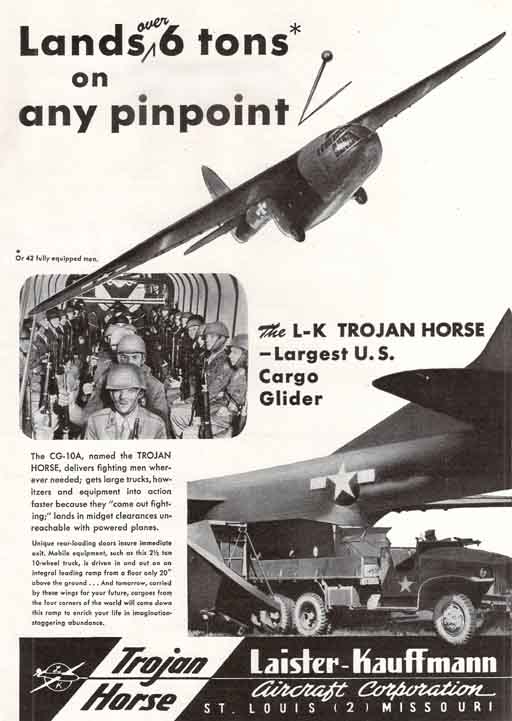
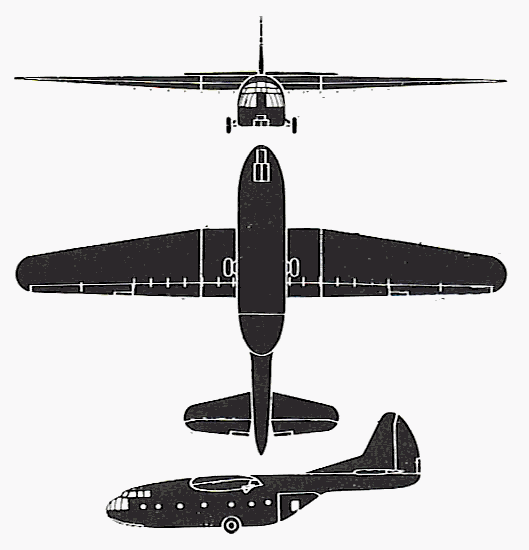
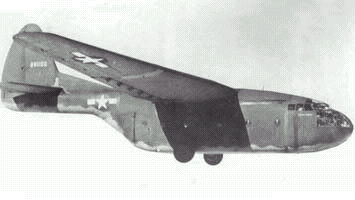
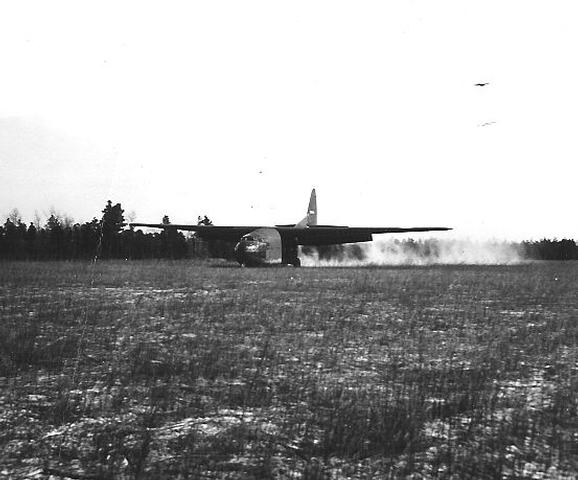

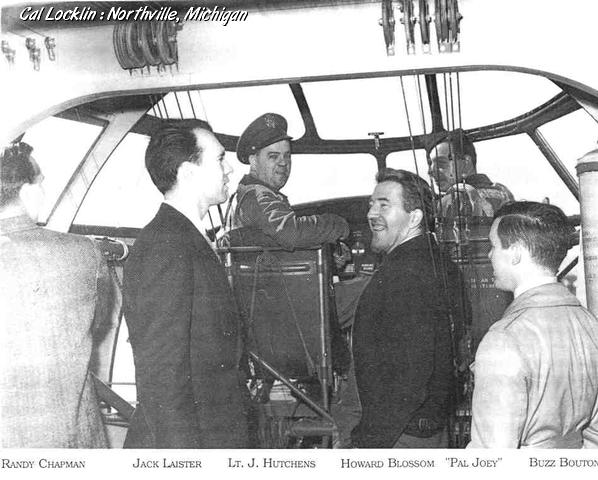
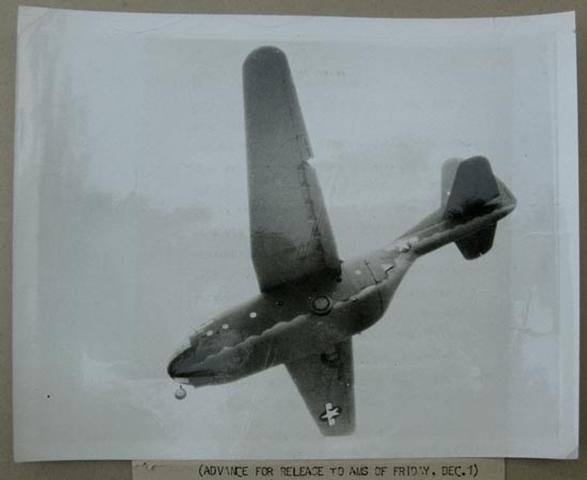
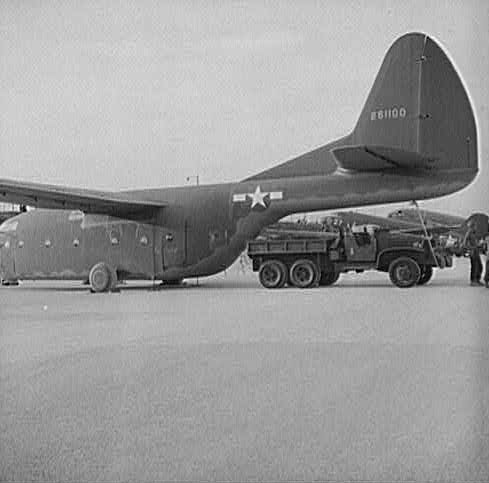
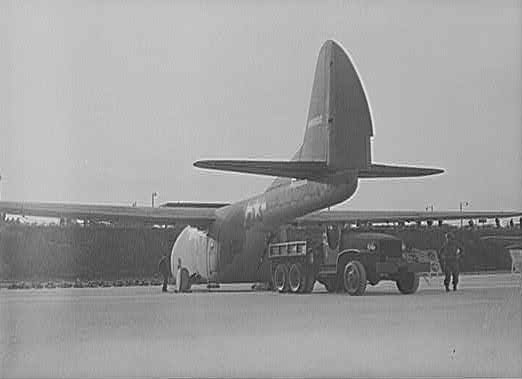
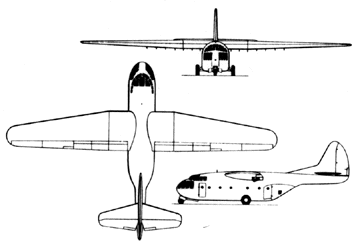
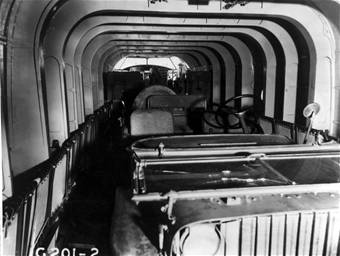
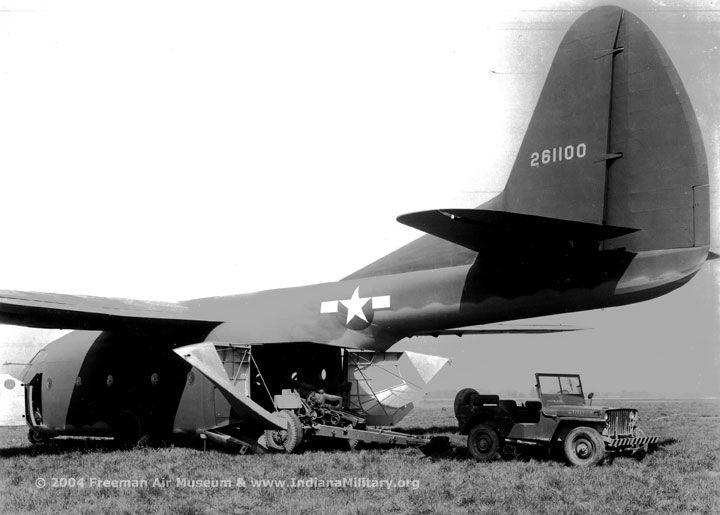
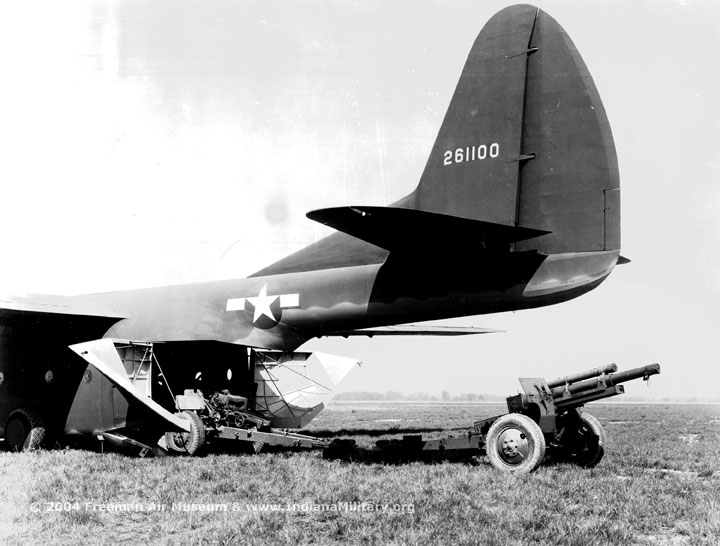
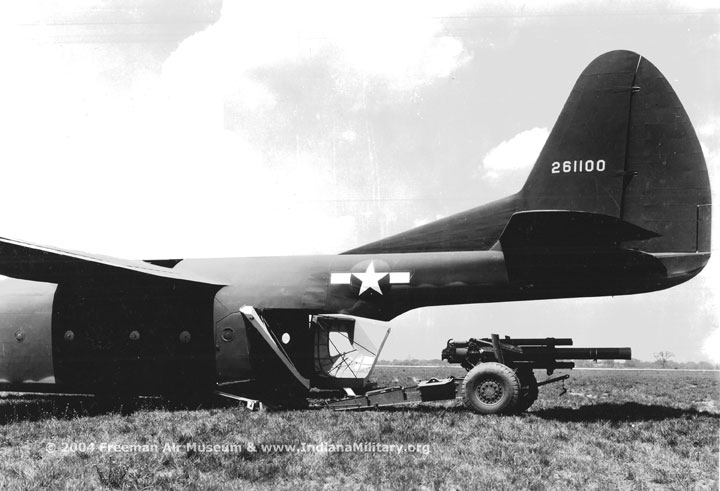
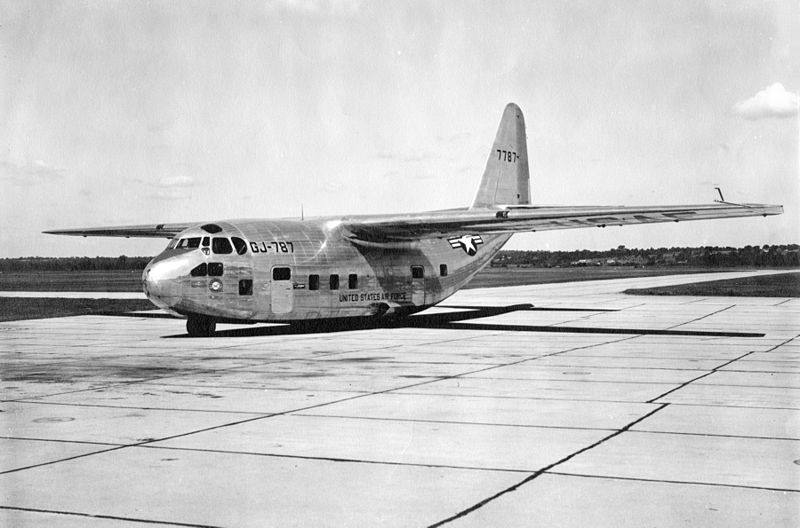
vonkarmanidiotic1945transportandgliderdecision2.jpg
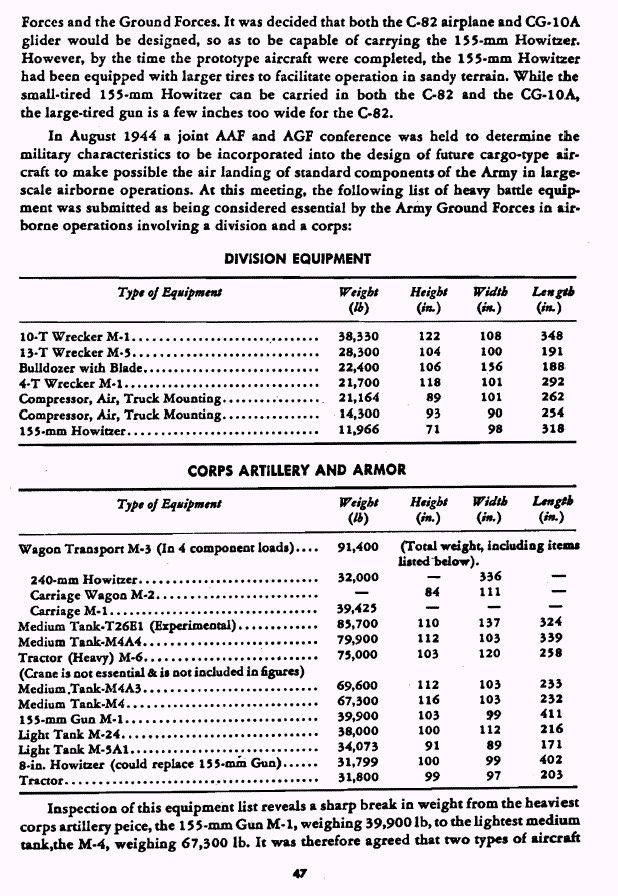

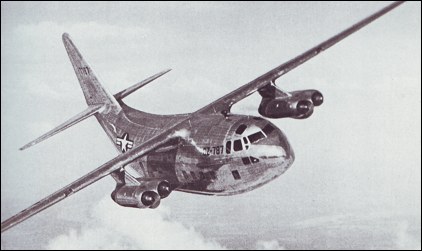
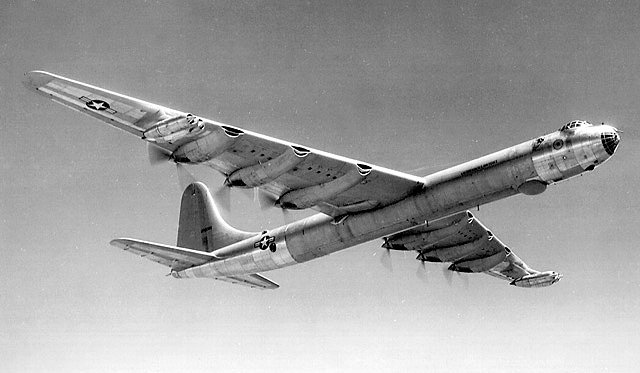
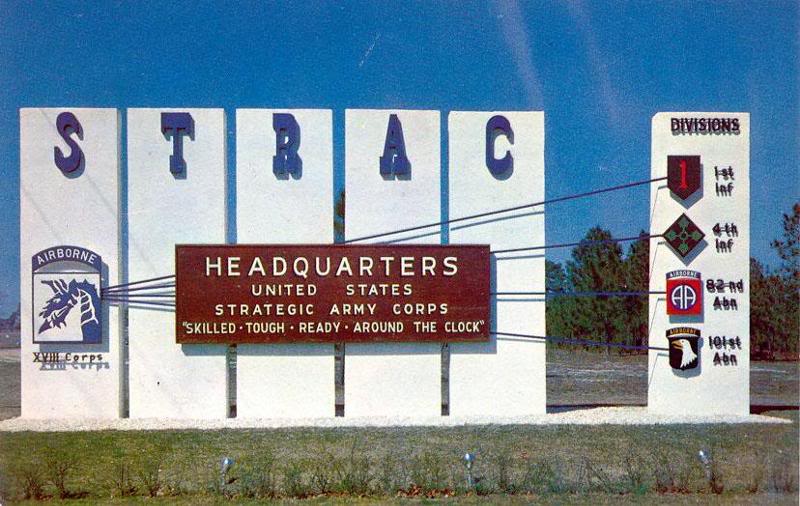




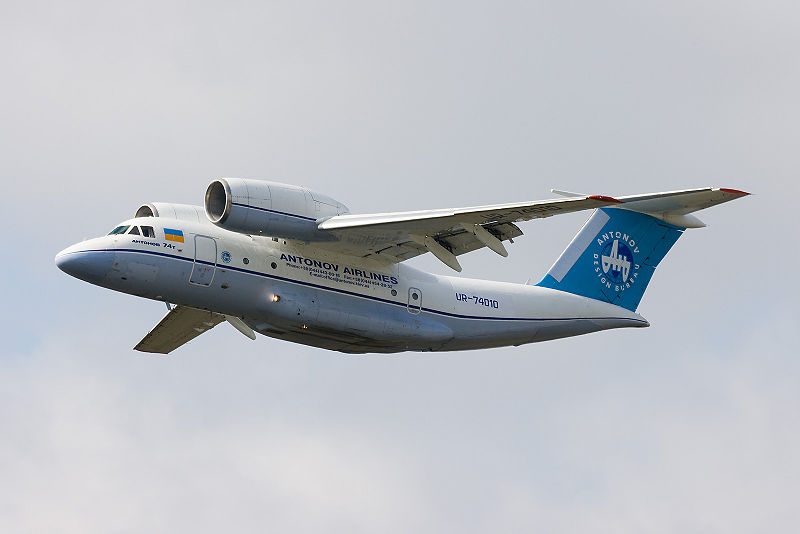
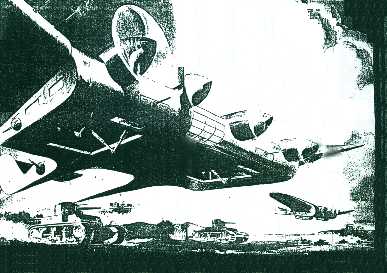
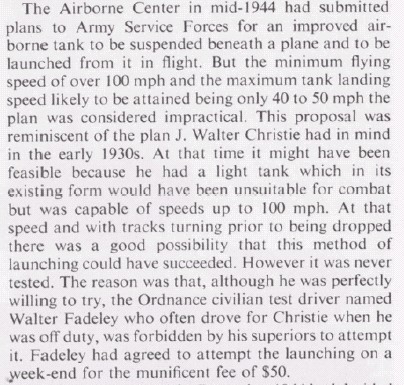
combatreform.org/vonkarmankiwipods2.jpg


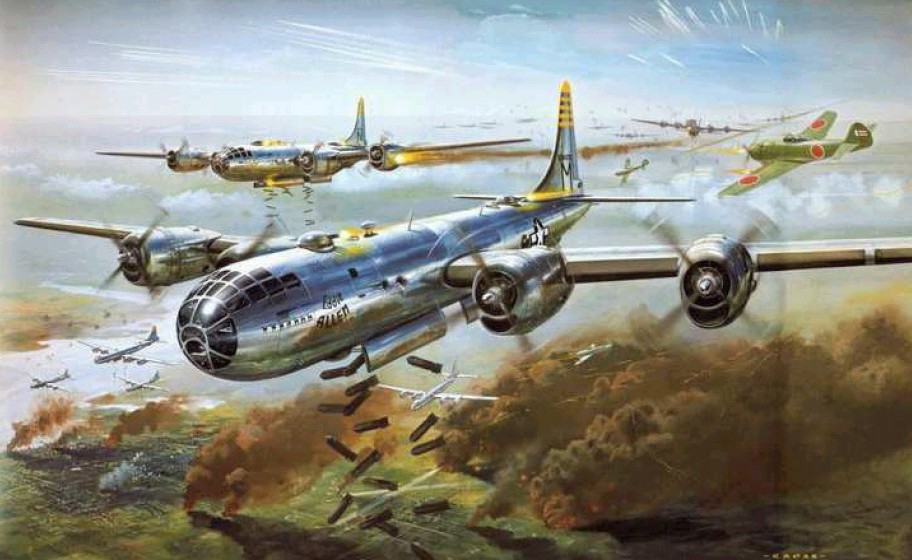
http://en.wikipedia.org/wiki/Boeing_B-29_Superfortress
Let's say the USAF really cared about getting the U.S. Army Airborne to the fight. The B-29 was 75K empty and could take-off at 130K so it had a 55K payload potential--easily enough to carry a 48K M24 Chaffee/M18 Hellcat light tank if armament gun turrets were stripped and the bomb bay modified so their turret fit inside and the rest of the tank hull dangled out into the slipstream. Surely, with the 4, 000 B-29s that were mass-produced, the USAF could have spared at least 100 to fly light tanks for the Army Airborne?
C-54 Skymaster
http://en.wikipedia.org/wiki/Douglas_C-54_Skymaster
Since we know the USAF obsessed with winning wars all by itself via strategic bombing firepower did NOT care much transporting the Army for maneuver, so B-29s would not have been offered. Therefore, what could have been done with the C-54 transport plane to transport a turreted M24/M18 light tank of up to 48K?
First, longer-legged landing gear would be needed to carry the turreted light tanks underneath to have adequate clearance for take-off and landing. Once this gear was in use, it obviously could not retract into the space of the shorter landing gear well, so a NEW WING would be required. This is ok, since a LARGER WING would provide more lift and--an extra set of engines for a total of 6. A four-engined C-54 was 39K empty and 73K loaded--for a total of 34K of payload. The question is would a 6-engined C-54 with a larger wing and longer landing gear have say a payload of 55K to comfortably transport a 48K light tank and have 7K of fuel?
German scientist Von Karman in his report on future Airborne warfare offers a 6-engined Kiwi pod transport plane.
combatreform.org/vonkarmans6enginedkiwipodplane.jpg
An actual Kiwi pod plane was built using the C-119 as the starting point for a glider-pod dropping capability.
XC-120 Pack Plane
http://en.wikipedia.org/wiki/XC-120_Packplane
www.flightglobal.com/pdfarchive/view/1950/1950%20-%201769.html
Video

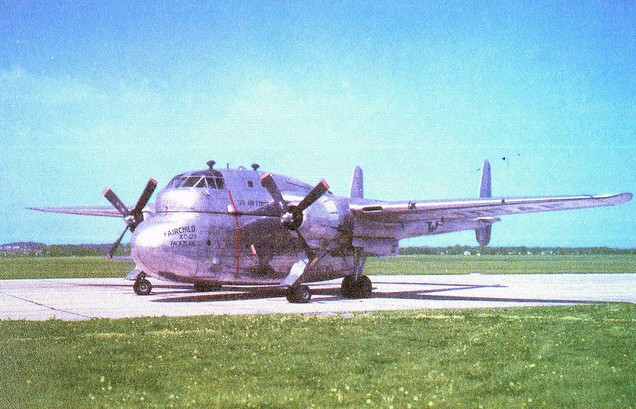
 www.youtube.com/watch?v=9gspWjduh3Q
www.youtube.com/watch?v=9gspWjduh3Q
A C-119 without a fuselage--the XC-120--could have carried a M24/M18 light tank underslung--the question is could it have taken off with say a larger wing and 4 engines or with turbojets in pods or turboprops? The C-119 and XC-120 had two x 3, 250 hp piston engines for a total thrust of 6, 500 hp and were capable of lifting 10 tons of cargo. Without the cargo pod weight or the C-119's built-in fuselage, the XC-120 as-is could lift another 1-2 tons if the payload were attached directly underneath.
Stanley H. Evans in his superb article "Cargo Carrier Concept: Design-logic for Airborne Logistics: The Fairchild XC-120 Pack-plane". Flight magazine 21 September 1950, pages 331-333 makes an excellent case for a Burnelli design pack plane with turboprops. He notes that the T40 contraprop engines (used in the later R3Y1 Tradewind seaplane transport) were planned for future XC-120 planes. We know now, this didn't materialize and that the T40s were mechanically unreliable--but the concept of contra-rotating props to get 2 engines in the space of one is SOUND and is proven every day in Russian Tu-95 Bear bombers that have been flying successfully for decades since the 1950s. Had reliable British Mamba contraprop engines used in the Fairey Gannet ASW carrier-based plane [http://en.wikipedia.org/wiki/Fairey_Gannet] been fitted to a XC-120, 4 x 3, 875 shp engines would have offered 15, 500 shp of thrust--this is over 2x the thrust of the 2-engined prototype. Almost 3 times the power. We will call this the "XC-120T". The XC-120T payload would have increased to over 25 tons to easily transport M24/M18 light tanks.
Comparison/Reality Check
The R3Y Tradewind [http://en.wikipedia.org/wiki/Convair_R3Y_Tradewind] had 4 x unreliable 5, 100 shp T40 contraprop engines for a total of 20, 400 shp thrust and could carry 48K payloads routinely. Empty weight was 72K and max take-off was 165K--so maximum payload potential was 93K--subtract a 48K M24/M18 light tank and one has 45K on crew, fuel etc. to work with. Plenty to work with.
Available USAF 1950-1960 Options to Fly Army Light Tanks
So the Army's tankers are "fat and happy" with their M24 Chaffees and M41 Walker Bulldog light tanks throughout the 1950s. They don't have to risk their necks flying in aircraft and parachute jumping. They haven't made themselves air-deployable. The USAF drastically improves its airlift capabilities by the turboprop C-130 Hercules STOL transport. Here is where things get very interesting....

Will a M24 or a M18 fit into a C-130 fuselage?
The M24 is listed as 9.84 feet wide (118 inches) and 9 feet high (108 inches) high--too wide and too high by a small margin. The M18 is slightly smaller at 9.4 feet (113 inches) wide and at 8.4 feet (100 inches) high is significantly lower than the M24.
The USAF lists 104 inches as the maximum height for a load to tip-off the rear ramp during airdrop. The M18 Hellcat is good-to-go height-wise. Why couldn't the M24 be modified to lose a mere 14 inches of height by a kneeling suspension and smoothing the turret top?
The USAF lists 105 inches as the maximum C-130 floor width allowable---but this includes two sets of 463L pallet rollers representing a total of 18 inches. So the actual C-130 maximum floor width is 123.2 inches and this narrows to 119.5 inches at the wheel well center area; not a lot to work with when backing in a M24--but do-able. No problemo for the M18 Hellcat! Why couldn't lighter weight band tracks--perhaps themselves narrower on narrower roadwheels been developed for a few more inches of aircraft wiggle room?
Or why didn't the USAF insure when they wrote the specifications on the C-130 that they insured a M24 light tank would fit and be air-transportable?
C-130 Cargo Dimensions
www.456fis.org/THE%20AC-130/c-130-cargodims.gif
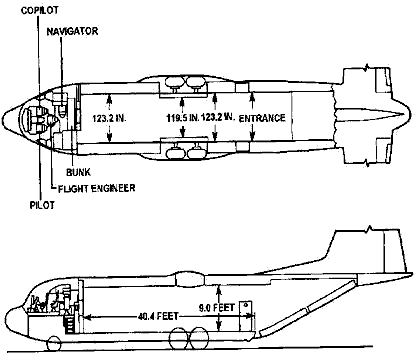
A problem area of the C-130 is its landing gear bulge half-way into the fuselage cargo floor--and half-out into the slipstream. If we had C-130s with their entire gear held in external bulges like the C-160 Transall this would free up the cabin floor for 123.2 inches of width from beginning to end and make it easy to load/unload as-is M24 Chaffee light tanks. In-flight refueling probes like the RAF C-130s have would enable a Herk with a M24 to take-off with a light fuel load and top-off for long-range missions.
http://en.wikipedia.org/wiki/Transall_C-160
Clearly, the answer is YES; the M18 Hellcat--which is the superior light tank in performance---and the M24 Chaffee with some work--could have been airdropped in C-130s for the Army Airborne in the 1950s. Both could have been up-gunned to 90mm guns to stay ahead of the threat. So the fault here lies with Armor branch for not applying itself to help Airborne units by getting themselves to the fight by available aircraft and parachutes. One way to not have to become Airborne is to deliberately adopt a tank that cannot be airdropped with what was available.
Enter the M41 Walker Bulldog light tank in 1953
[http://en.wikipedia.org/wiki/M41_Walker_Bulldog] has an even better combat record than the M24; tested in Korean combat and later in use by the South Vietnamese Army, they successfully defeated Communist T-54/55 medium tanks in repeated combats with the same 76mm gun used by the M18 Hellcat--which begs the question of why wasn't the latter used all along after closing its turret top?. Surely, the M41 was a light tank the can't-ever-have-enough-armor-protection tankers would embrace...
However, the steel M41 was 23.5 tons and too wide at 126 inches to fly by C-130. It's almost as if Armor branch deliberately designed the M41 so it could not fly by widely available C-130s...But remember if we had adopted CG-20 gliders--we could have flown even M41s by them! Unless of course, Armor branch deliberately moved the vehicle's size goal posts again to wimp out from being air-transportable.
C-124 Globemaster II
http://en.wikipedia.org/wiki/Douglas_C-124_Globemaster_II
The biggest transport after the C-130 in USAF service was the C-124 Globemaster II, introduced in 1950 that could carry and AIRLAND a single M41 Walker Bull Dog light tank through its front loading nose door--but could not airdrop vehicles in flight.

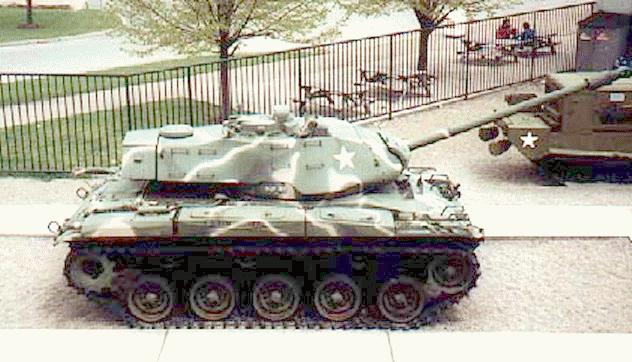
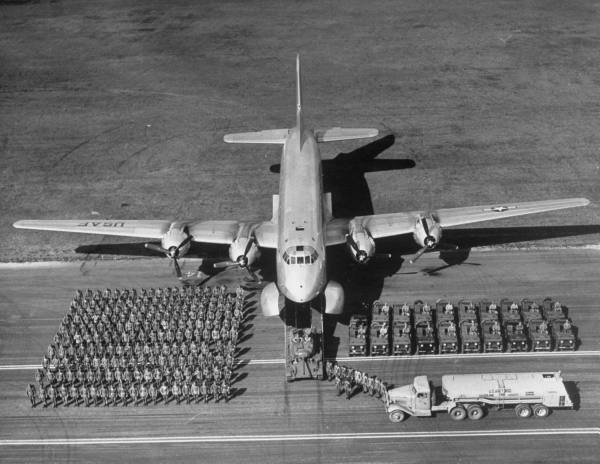
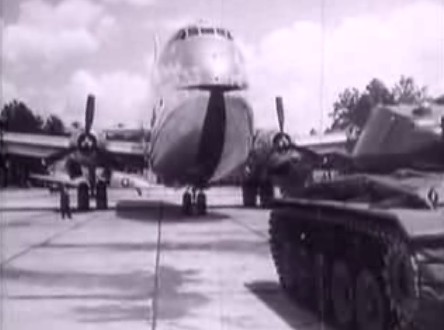
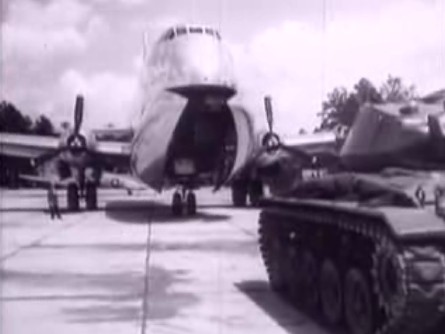
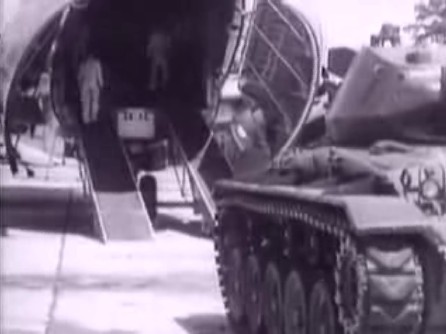
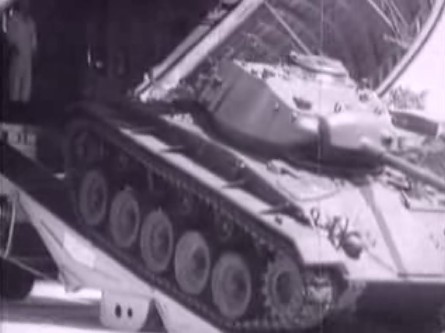
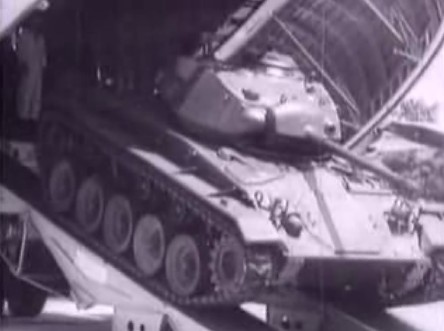
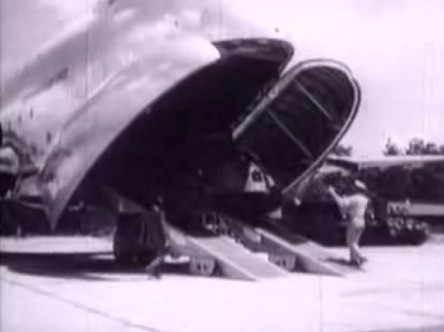
M24 Chaffee light tank loading into C-124 nose
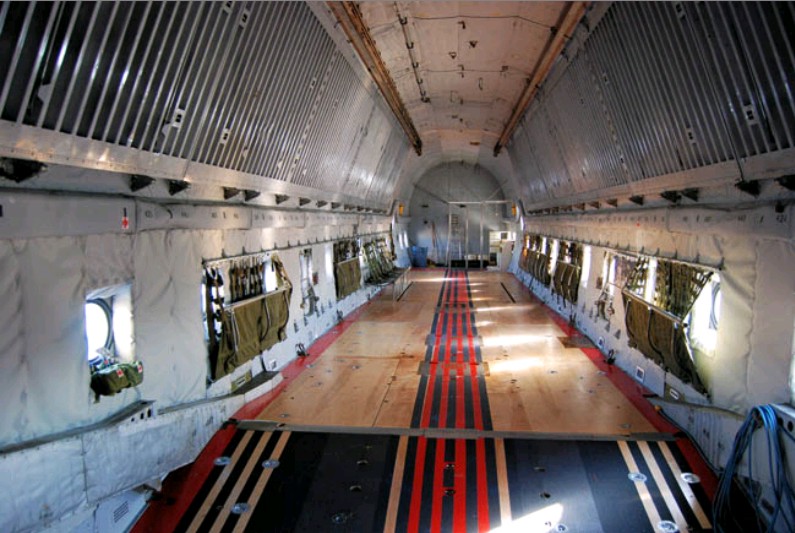
There were a few C-133s that had rear ramps to paradrop M41s--but this option wasn't pursued.
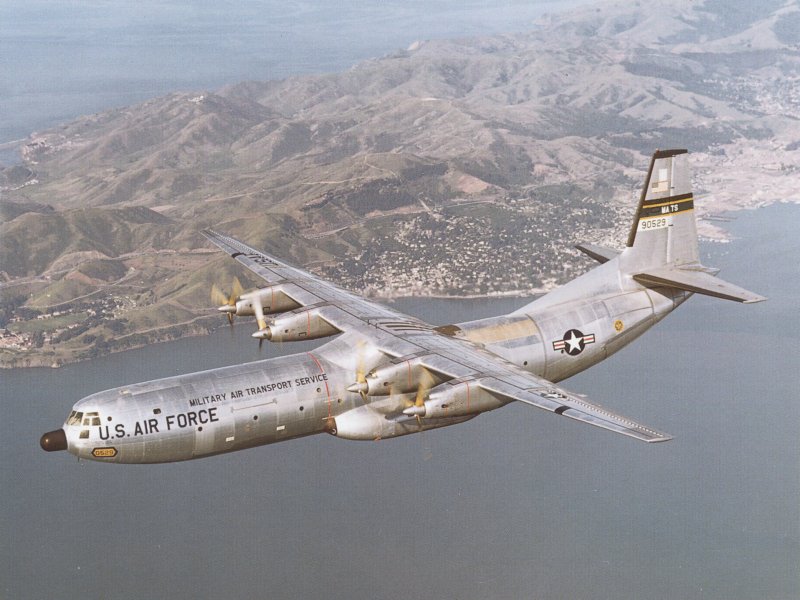
What About Using Light Tanks that Armor Branch Tankers Didn't Like?
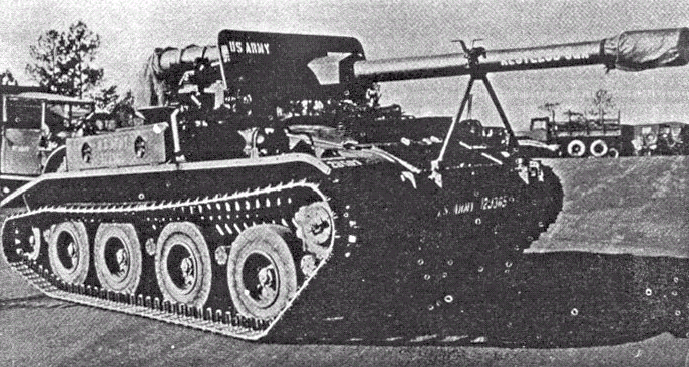
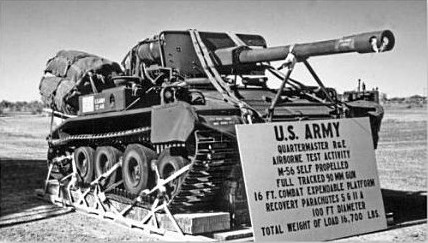
 www.youtube.com/v/ba41n0KJuWM
www.youtube.com/v/ba41n0KJuWM
M56 Scorpion: Exposed 90mm Gunner, Loader and Driver
So the Army Airborne adopts the 8-ton M56 Scorpion tracked self-propelled 90mm gun on an exposed mount--when the superior fully-enclosed 9-ton M50 Ontos with 6 x 106mm recoilless rifles was available and advocated by Airborne pioneer LTG James M. Gavin.
 www.youtube.com/v/9MZvEUlSwqU
www.youtube.com/v/9MZvEUlSwqU
M50 Ontos: Crew Armor-protected with 6 x 106mm Recoilless Rifles
The Ontos would kick serious enemy ass in Vietnam with a few Army units and the not-too-bright marines--who would then retire then when they ran out of spare parts and couldn't figure out how to make newer variants using the widely available M113 Gavin chassis. The French 15-tons empty AMX-13 light tank (initially automatically-loaded version of 75mm used on German Panther medium tank, later replaced with 90mm and 105mm) was also available that is C-130 air-transportable; why didn't we buy some of them?
 www.youtube.com/watch?v=SJGe21it-vo
www.youtube.com/watch?v=SJGe21it-vo
AMX-13
combatreform.org/airbornetanksnoexcuse.htm
Again, a suspicious subjectivity appears in play here.
Summary of the 1945-1964 Period of American Airborne Development
When the U.S. Army lost control of gliders to the USAF (?), an important opportunity to deliver light tanks by new heavy payload gliders was lost. Until 1953, the M24 Chaffee was the light tank of the U.S. Army--and even well-liked by the tankers. The CG-20 glider could have lifted the M24 had we thought of towing it with the most powerful plane we had with the assistance of rockets. Therefore from 1946 to 1958--before the advent of the C-130--the CG-20s could have--and should have--air-delivered M24s (or better yet lighter M18s Super Hellcats with 90mm guns) to help the Army fight on the ground in Korea and be ready anywhere else in the world. True, in 1953, heavier M41 Walker Bulldog light tanks had replaced M24s, but to create an airdrop capability with the C-130, why not keep a battalion's worth of M24s--or better yet M18 Super Hellcats? They are already bought and paid for, and we are handing them to our allies for free. Why develop the exposed M56 Scorpion for parachute airdrop at all if you had CG-20 gliders or knew turboprop C-130s were coming with payloads and rear ramps that could crash-land or airdrop fully armor-protected M24s or M18s so Paratroopers could have immediate fire support? Or did we get complacent and took the low road and felt compelled to seize a runway so M41s could be airlanded by C-124s so tankers wouldn't have to go on jump status?
 www.youtube.com/v/A53TSrsWwJM
www.youtube.com/v/A53TSrsWwJM
ASU-57
While all of this was going on, the Russian Airborne VDV were parachute-dropping the open-topped, armored ASU-57 with the proven WW2 57mm AT gun--the same SPG concept that the British Alecto demonstrated years before. These weapons would provide critical firepower for VDV Paratroopers dropped behind enemy lines to blast anything in their path. The M24 and M18 were far more capable than the ASU-57--and we had the means to air-deliver them--and we didn't even try.
New USAF 1965-1970 Options to Fly Army Light Tanks
How about the plentiful C-141 jet transports from 1965 onward?
C-141A Starlifter
http://en.wikipedia.org/wiki/Lockheed_C-141_Starlifter
The C-141's shoulder-mounted wings gave internal clearance in the cargo hold of 10 ft (120 inches) wide, 9 ft (108 inches) high and 70 ft long--but clearly still not enough to fit the 126 inch wide M41 light tank from the rear ramp. However, they can easily lift even the largest versions of the M113--the legendary Gavin---whose advent in 1960 has changed the face of warfare forever.
 www.youtube.com/watch?v=Xk-HPfpUhEs
www.youtube.com/watch?v=Xk-HPfpUhEs
C-5A Galaxy
http://en.wikipedia.org/wiki/C-5_Galaxy
The United States Army wanted a transport with a larger cargo bay than the C-141, whose interior was too small to carry a variety of their outsized equipment.
Eventually this lead to the C-5A Galaxy introduced in 1969. So now in 1970, the Army had an available USAF aircraft in quantity to parachute drop its M41 Walker Bull Dogs--just as they were being replaced by smaller and lighter--M551 Sheridans made of aluminum alloy--when they could have had these same sized 17-ton light tanks from WW2 onward by using and upgrading steel M18 Hellcats.
 www.youtube.com/watch?v=50cpPAVoxJQ
www.youtube.com/watch?v=50cpPAVoxJQ
The U.S. Army Does Not Understand Modern War
"Armor in the future must fly; just as all other means of war must fly. Possessing good cross-country mobility. and gunned to destroy any earthbound vehicle, the tank will play the decisive role in the coming battles of the airhead. "
--General James M. Gavin
It's clear that from WW2 onward, both the American Airborne could have--and should have operated light tanks--beginning with M22 Locusts and Bren gun carriers--some with 75mm pack howitzers in Hamilcars gliders at least by Arnhem if not sooner say D-Day. Lightweight STUGs like the Alecto (see below) could have been used to give firepower to kill German tanks.
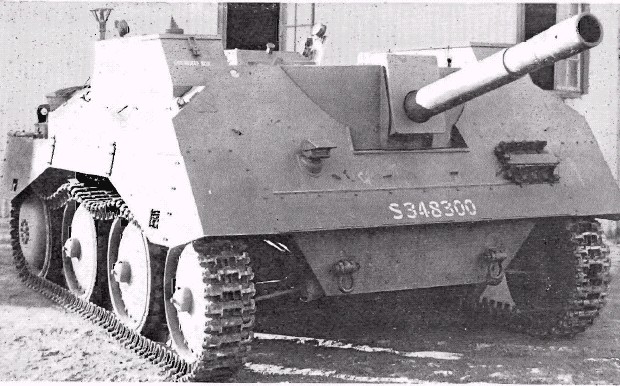
It's also clear that American tankers are also repeatedly guilty of not wanting to get to the fight by aircraft using lighter tanks. The lack of a mechanized Cavalry branch dedicated to getting to the fight first has been a serious defect of the U.S. military with severe consequences in WW2 and Korea. The revelation that M18 Hellcat light tanks--could have and should have--been upgraded into 90mm gun Super Hellcats from WW2 onward by the American Airborne and infantry which would have then been far superior to Communist T34/85s in Korea, better than the exposed gun M56 Scorpion and even the 6x106mm Ontos afterwards--and would have been airdrop capable from available C-130s beginning in 1958--is troubling to say the least. That turret-less, open-top M39 Armored Utility Vehicle (AUV) Hellcat variants were used as transporters in the Korean war--begs the question even further. No one can claim they were unaware of the M18 Hellcat --which fits easily into a C-130 and doesn't use up its entire payload to be flown long distances in it. Nobody thought of it and nobody tried it because they were all set in their decrepit ways.
The U.S. military has failed to harness the full potential of the tank since its creation during WW1. Hypocritically, the patron saint of American tankers, General George S. Patton is incorrectly name-dropped ad nauseum by repeat generations to further their agenda of stampeding themselves like cattle towards the enemy to slam into his main body and duel-to-the-death with mirror images of themselves. However, when one actually studies Patton's campaigns, you discover he was a MANEUVERIST--not a tank dueler--who ascertained the required terrain maneuver leverage (TML) to unhinge the enemy's situation to win battles--and if given the helm--wars. In 1944 after rushing through France, Patton wanted to punch through the German defensive line on their border and encircle their armies to logistically strangle them, then march on Berlin to "turn the war/peace light switch off" by destroying/capturing the Nazi government. He wanted to drop American Airborne units ahead of him as defacto cavalry to help clear the way ahead for his armored main body. Patton did not want to duel German Tiger and Panther tankers; he wanted to win the war.
Strategic victory by such three-dimensional maneuver (3D) to get TML was employed by the Germans earlier in the war to seize Crete and Holland. Unfortunately, instead of the flexible and adaptive Patton being given the Airborne units held in England for breakthrough operations, slow, plodding British general Bernard Montgomery was given the go-ahead. Montgomery attempted a strategic Airborne victory by seizing the bridges over the rivers blocking him--but failed to Hamilcar glider-deliver available 6th Airborne Division Tetrarch light tanks to bust through light German resistance so the 1st British Airborne foot-infantry could converge in adequate force to hold the bridge over the Rhine river into Germany. Just 5 years later, the failure of the American infantry to fly-in light tanks resulted in a disastrous battle defeat with TF Smith in South Korea; resulting in a retreat to the precarious Pusan perimeter where we were on the verge of being thrown into the sea by a Communist NORK army that had tanks.
After a successful interlude began in Vietnam using our excellent M113 Gavin and M551 Sheridan light tanks as armored cavalry by Patton's son and many others continuing on to Panama, Haiti, Iraq Wars 1 and 2, the Army has reverted to its bad sociology of either wanting to foot-slog and fight dismounted from trucks or sit on its asses back in the motor pool claiming its tanks are too heavy to get to the fight.
Why does the Army have this bad sociology of being too light or too heavy?
Why does the U.S. Army not understand modern war is not a duel to ego-gratify and self/peer validate? It's to make the other guy DIE for his country and for you to survive. The way to do this is to win battles--not duels.
The Sociology of the U.S. Army that Refuses to Adapt to Win Modern War
In The German Generals Talk, WW1 British combat veteran and futurist B.H. Liddell-Hart interviews the best minds of our European enemies to gain insights on what we should do now to better defend ourselves. The best advice does not come from the famous, older Guderians, Rommels and von Rundsteds, but the young mechanized generals, Student, von Thoma and Manteuffel. Beginning with von Seeckt, train all your young men in basic military skills so in time of war they can DEFEND the homeland. Use these men as seed corn to build mechanized maneuver units for more difficult OFFENSIVE tasks. Manteuffel figures an industrialized nation can afford about 30 truly elite, fully mechanized divisions with the best of everything. They have a ground cavalry in front in light tanks to make first contact with the terrain and enemy; with them are air recon and attack planes. Thoma and Student say use aircraft to drop the paras and light tanks ahead to gain key terrain first. They say had the German Airborne dropped on the march to Moscow they would have won the war. They are followed by the main body in 150 fast, medium tanks in a regiment helped by two regiments of mechanized infantry; one in heavier transport tanks to fight alongside, the other in lighter transport tanks to exploit openings.
What was the Advice WW2 German Generals Gave us to Reform our Military?
"Advice is seldom welcome; and those who want it the most always like it the least."
--Lord Chesterfield
General von Seeckt
Pages 14-17:
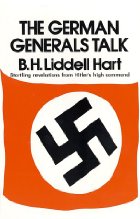
Seeckt's more real achievement was in starting a train of ideas which revitalized the German Army, turned it into a new line of progress, and enabled it to add a qualitative superiority to the quantitative recovery that the victors' inertia permitted it to carry out. He gave the Reichswehr a gospel of mobility, based on the view that a quick-moving, quick-hitting army of picked troops could, under modern conditions, make rings round an old-fashioned mass army. That view was in no small measure due to his experience on the Eastern Front, where the wide spaces had allowed far more room for manoeuvre than had been possible on the Western Front. The first post-war manuals of the Reichswehr laid down that "every action ought to be based on surprise. Without surprise it would be difficult to obtain great results" Flexibility was another keynote--"reserves should, above all, be pushed in to exploit where a success is gained, even though it becomes necessary, by so doing, to shift the original centre-of-gravity." To promote such flexibility, the Reichswehr was quick to develop new means of intercommunication, and devoted a larger proportion of its limited strength to this service than any other post-war army. It also insisted on commanders of all grades being further forward than was then the custom, so that they could keep their fingers on the pulse of battle and exert a quicker influence.
General Rommel leading from-the-front
In the exaltation of manoeuvre, these post-war German manuals offered a striking contrast with those of the French Army, which drew the conclusion that "of the two elements, fire & movement, fire is preponderant." The French doctrine obviously visualized the repetition in any future war of the slow-motion tactics of 1918. That difference was ominous. But the German view was not merely governed by the necessity of making the most of their handicaps under the peace treaty. For Seeckt, in his preface to the new manual, wrote with remarkable frankness: "These regulations are based on the strength, armament, and equipment of the army of a modern great military power, and not only on the German Army of 100, 000 men formed in accordance with the Peace Treaty."
Seeckt's active work came to an end in 1926, when he made a slip and was forced to resign following the political storm that arose through his action in permitting the eldest son of the German Crown Prince to take part in the Army manoeuvres. The limitations of his outlook--which had appeared broad by comparison with other generals-were still more clearly brought out by his subsequent venture into politics, as a spokesman of the half-baked ideas of the German People's Party. But the influence of his own military ideas continued to grow.
His vision of the future emerged clearly from the book he wrote soon after he left office. He there questioned the value of the huge conscript armies of the past, suggesting that the effort and sacrifice was disproportionate to their effect, and merely led to a slow-grinding war of exhaustion. "Mass becomes immobile; it cannot maneuvre and therefore cannot win victories, it can only crush by sheer weight:' Moreover, in peace-time, it was important to limit as far as possible the unproductive retention of male labour in military service:' Technical science and tactical skill were the keys to the future. " A conscript mass, whose training as been brief and superficial, is 'cannon fodder' in the worst sense of the word, if pitted against a small number of practiced technicians on the other side." That prediction was fulfilled in 1940 when a handful of panzer divisions, striking in combination with dive-bombers, paralyzed and pulverized the ill-equipped conscript mass of the French Army.
In Seeckt's view, "the operating army" should consist of "professional, long-term Soldiers, volunteers as far as possible." the bulk of the nation's manpower would be better employed during peace-time in helping to expand the industry required to provide the professional army with an ample equipment of up-to-date weapons. The type of weapons must be settled well in advance, and arrangements for rapid mass-production developed.
At the same time, a brief period of compulsory military training should be given to all fit young men in the country, "preceded by a training of the young, which would lay less emphasis on the military side than on a general physical and mental discipline." Such a system would help to link the army with the people, and ensure national unity. "In this way, a military mass is constituted which, though unsuited to take part in a war of movement and seek a decision in formal battle, is well able to fulfil the duty of home defence, and at the same, time to provide from its best elements a continuous reinforcement of the regular, combatant army in the field" It was a conscript levy of this kind which filled the bulk of the Germany infantry divisions in 1940. They merely followed up the decisive armoured spearheads, and occupied the conquered regions. Later, as their own training improved, they were available to expand and replenish the striking forces in the way that Seeckt had foreseen.
"In brief, the whole future of warfare appears to me to he in the employment of mobile armies, relatively small--but of high quality, and rendered distinctly more effective by the addition of aircraft, and in the simultaneous mobilization of the whole forces, either to feed the attack or for home defence"
Curiously, Seeckt's book scarcely touched on the subject of tanks, but dwelt at length on the value of cavalry, as well as of motor transport, in the mobile operations he pictured. He even wrote lyrically that "the days of cavalry, if trained, equipped and led on modern lines, are not numbered," and that "its lances may still flaunt their pennants with confidence in the wind of the future" It has been suggested in later years that Seeckt's neglect of armoured warfare was prompted purely by political discretion, and that the word "tank" should be read into his sentences wherever he used the word "cavalry." Such a view is contradicted by the undisguised way in which he advocated conscription and aircraft, both of which were forbidden to Germany by the peace terms.
For all his dynamism, Seeckt was a man of his generation, rather than a forerunner of the next. His military vision was clear enough to see the necessity of mobile warfare for any offensive purpose, but did not reach far enough to see that armoured mobility was the only way to make it possible. It was left for others to develop that possibility-and aggressive necessity.
The old military battle-picture also coloured Seeckt's vision when he argued that the immediate object of the air force's attack should be to destroy the opposing air force. The Luftwaffe did that in Poland, and to a lesser extent in France. But when it tried that way of preparing the invasion of Britain, it suffered crippling losses on meeting, for the first time, a strong defending air force.
On the wider issues of war and life his outlook was patchy. With some truth he contended that direct experience of the horrors of war made Soldiers more wary than political leaders of becoming involved in a war, but he went too far in trying to show they were really "pacifists" in the best sense of the word. That characteristic professional apologia, familiar in every country, does not find much support in cases where the archives of a war-making country have been opened to examination. High Soldiers have too often failed to show that "pacifism established on knowledge and born of a sense of responsibility" which Seeckt claimed for them.
He was rather weak in his argument that "militarism" and "aggression" were merely catchwords. At the same time he was shrewdly prophetic in his remarks that whenever policy aimed at the acquisition of power, "the statesman will soon find himself thwarted in some way or other, will deduce from this opposition a menace first to his plans, then to national prestige, and finally to the existence of the state itself..."
Generals von Thoma and von Manteuffel
Pages 98-102:
many tanks in our armoured divisions, and their motor-infantry regiments were not mobile enough.
"The original pattern of our armoured division was ideal with two tank regiments and two motor-infantry regiments. But the latter should be carried in armoured tracked vehicles, even though it entails more petrol. In the earlier part of the Russian campaign, it was possible to bring them up in their lorries close to the scene of action before they dismounted. They were often brought up as close as a quarter of a mile from the fighting line. But that ceased to be possible when the Russians had more aircraft. The lorry-columns were too vulnerable, and the infantry had to get out too far back. Only armoured infantry can come into action quickly enough for the needs of a mobile battle.
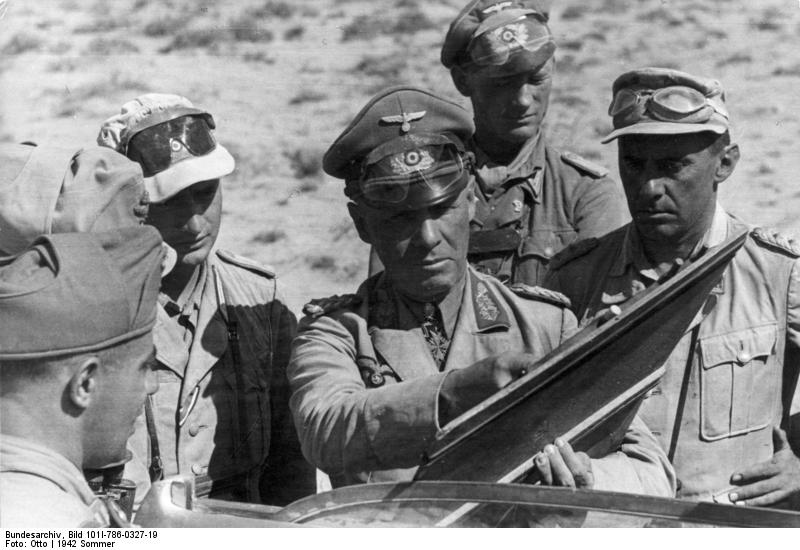
"
Worse still, these clumsy lorries easily became bogged. France had been ideal country for armoured forces, but Russia was the worst-because of its immense tracts of country that were either swamp or sand. In parts the sand was two or three feet deep. When the rain came down the sand turned into swamp"

Thoma added: "Africa was paradise in comparison. Tank troops who had been in Russia found it easy to adapt themselves to the African conditions. It is a mistake to draw lessons from the African campaign and apply them to quite different conditions. For you in future it is only Russia that matters-not the desert any more." It was a characteristic ending.

German Paratrooper with FG42 Assault Rifle by glider
Thoma emphasized that another great mistake of the Russian campaign was the lack of co-operation between armoured forces and airborne forces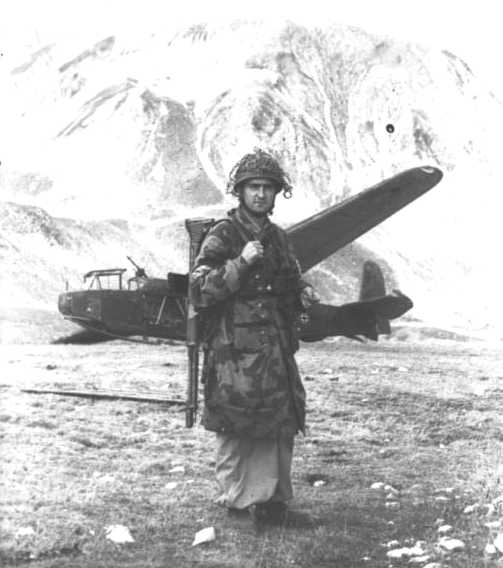
As Thoma was captured at Alamein in the autumn of 1942 he could contribute no evidence based on experience in the last part of the war. But in that period Manteuffel was the outstanding exponent of armoured warfare and his conclusions bore out Thoma's earlier views, on the whole, while supplementing them in certain respects. Manteuffel gave me his views at too great length to set forth here, for non-technical readers, but some of his main points are worth citing-"Tanks must be fast. That, I would say, is the most important lesson of the war in regard to tank design. The Panther was on the right lines, as a prototype. We used to call the Tiger a 'furniture van'-though it was a good machine in the initial break-through. Its slowness was a worse handicap in Russia than in France, because the distances were greater."
JS3 Stalin Heavy Tank
He considered that the Russian "Stalin" tank was the finest in the world. It combined powerful armament, thick armour, low build, with a speed superior to the Tiger and not much less than that of the Panther. It had more general mobility than any German tank.
Manteuffel then spoke of two avoidable handicaps that the German armoured forces had suffered. "Every unit in the division should have its own Mobile Workshop, which should accompany the tactical echelon. Our army made a grave error in thinking that these Mobile Workshops should be kept in the rear. They ought to be well forward, under the command of a tactical leader who is in wireless touch with them. This is essential so that repairs can be done during the night, except in cases of serious damage. Such a system saves many of the accidental casualties that cause wastage. It would have counter-acted the pernicious effect that our actual system had in leading the commanders to carry on with a dwindling tank strength because they could not afford to wait for tanks to be repaired. Too often they attempted tasks that were beyond their real strength-because the task was calculated on what a division should be able to achieve on its nominal strength.

JU-87 Stuka dive-bomber and cannon-equipped attack plane
"It is essential, too, for an armoured division to have its own air element -a reconnaissance squadron, a tactical bombing squadron, and a liaison squadron of slow-flying aircraft for the use of the commander and staff.
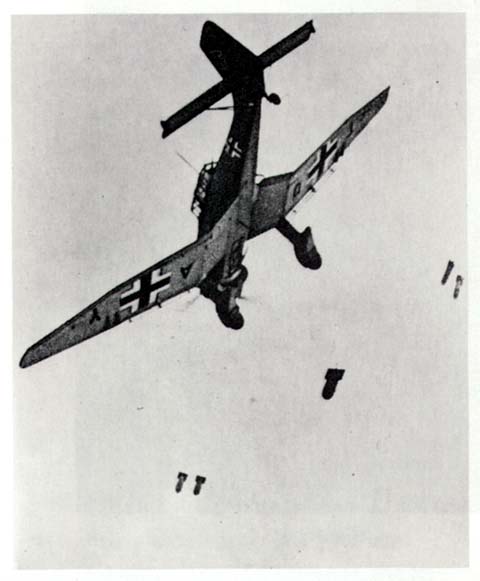
General Rommel in a Fieseler Storch STOL Grasshopper liaison plane
The commander of an armoured division ought always to direct from the air. In the early part of the Russian campaign, the armoured divisions had their own air contingent. But the High Command took it away from them in November, 1941, in favour of centralized control. That proved a grave mistake. I would also emphasize that the air squadrons should be trained with the divisions in peace time.
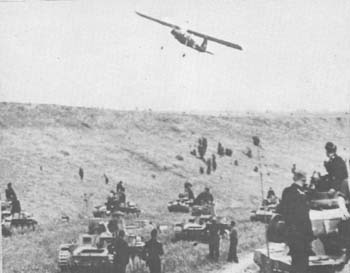
Me-323 Gigant delivering a Marder II self-propelled Howitzer
"Air transport is also essential-to carry supplies of ammunition, fuel, food and men. For armoured divisions will have to operate at much longer distances in future. They must also be prepared to make advances of 200 kilometres a day. Having read so many of your translated writings in the years before the war, I know what attention you gave to the development of this air side of armoured warfare. This warfare is a different language from infantry warfare-and infantrymen don't understand it. That was one of our great troubles in the war."
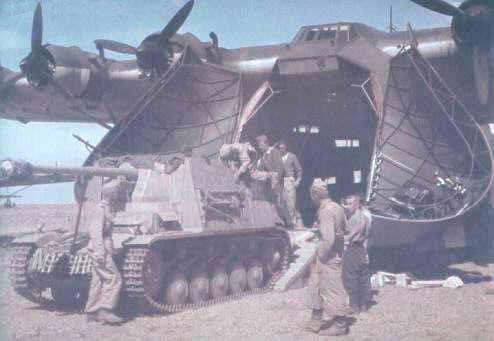
German STUG IV
Discussing tank design and tactics, Manteuffel spoke of the value of designing tanks that were low in height, and thus a less visible target. The difficulty was to combine low build with the necessity that the underside of the tank should be sufficiently clear of the ground to avoid becoming "bellied" in crossing obstructions such as bumps in the ground, rocks and tree stumps. "A slight handicap in ground clearance, however, can be overcome by a good eye for ground. That is the most vital quality in handling tanks"
Giving an example, Manteuffel narrated the story of a riposte he had delivered against the Russian break-through near Jassy, inside the Rumanian frontier, early in May, 1944. "A tank battle developed in which a total of some five hundred tanks were involved on the two sides. The Russians were repulsed, and only 60 of their tanks got away, most of them damaged. I lost only 11 of mine. It was here that I first met the Stalin tanks. It was a shock to find that, although my Tigers began to hit them at a range of 2,200 yards, our shells did not penetrate them until we had closed to half that distance. But Iwas able to counter their technical superiority by manoeuvre and mobility, in making the best use of ground cover." Manteuffel concluded his account with the emphatic remark: "In a tank battle, if you stand still you are lost." Recalling the memory of that piece of tactics gave him obvious professional satisfaction, and he added: "It would have given you a lot of pleasure to see this fight."
He went on to speak of the importance of the careful selection of tank crews, in order to ensure tactical aptitude and gain the advantage which this offers in modem battle. "With that condition fulfilled, tank design must aim at a careful balance between armour, weapons and speed, taking into account particularly the special risks introduced by air attack, parachutists, and rocket weapons"
I asked him what he considered to be the ideal composition of an armoured division. His reply was: "In the first place, a tank regiment of three battalions, each of 66 tanks-so as to ensure that somewhere about 150 would be available for action, allowing for mechanical troubles.
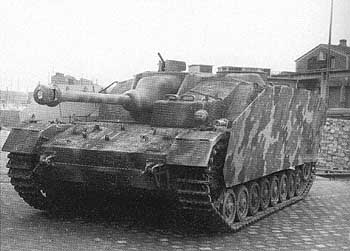
Up-Armored M113 Gavin Infantry-Carrying Light Tank
Secondly, two infantry regiments, each of two battalions carried in armoured half-track vehicles. In one regiment these should be well armoured-the 7mm. of armour which they had in the war was not enough when it came to bringing them up close under fairly heavy fire. In the other regiment, the carriers should be of a more lightly armoured type-so that they could move faster, and exploit opportunities of pushing forward where opposition was slight. Another essential element in the division is a strong reconnaissance unit, carried in full-track vehicles. In this war they had half-track vehicles, which were not good enough for a reconnaissance role, under the conditions met in Russia.
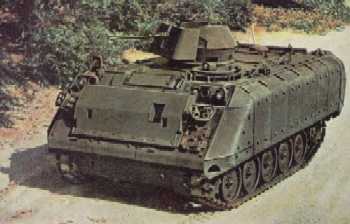
4-roadwheel "Mini-Gavin" Reconnaissance Light Tank
There should also be a pioneer battalion-what you call engineers. This need not be larger than the present scale, because every unit in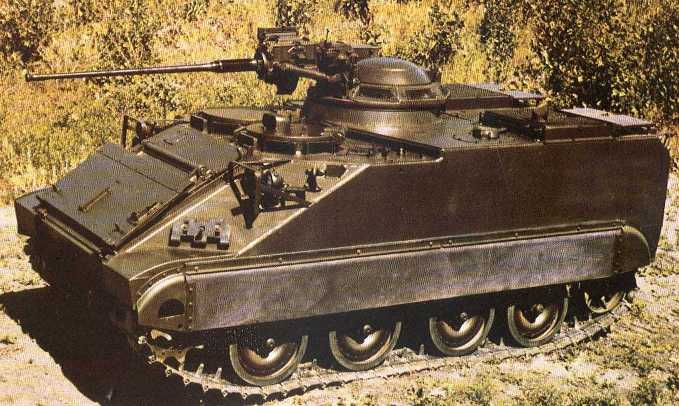
In another of our talks, Manteuffel gave his views on the question of how armies should be organized in the future. "Modem conditions, indicate that there should be two classes of army within the Army. The best policy would be to constitute an elite. A certain number of divisions should be picked out for this purpose, and they should be given the best possible equipment, ample money for training, and the pick of the personnel. A large country might be able to create an army of up to thirty divisions in this way. Of course, no country could equip an army of millions on this scale. But it is better to have an elite army for the main operational purposes than to have a much bigger army that is mediocrely equipped and trained throughout.
Future elite military forces must be both Airborne and Armored
That elite army would have an increased proportion of air support, airborne forces and rocket weapons. 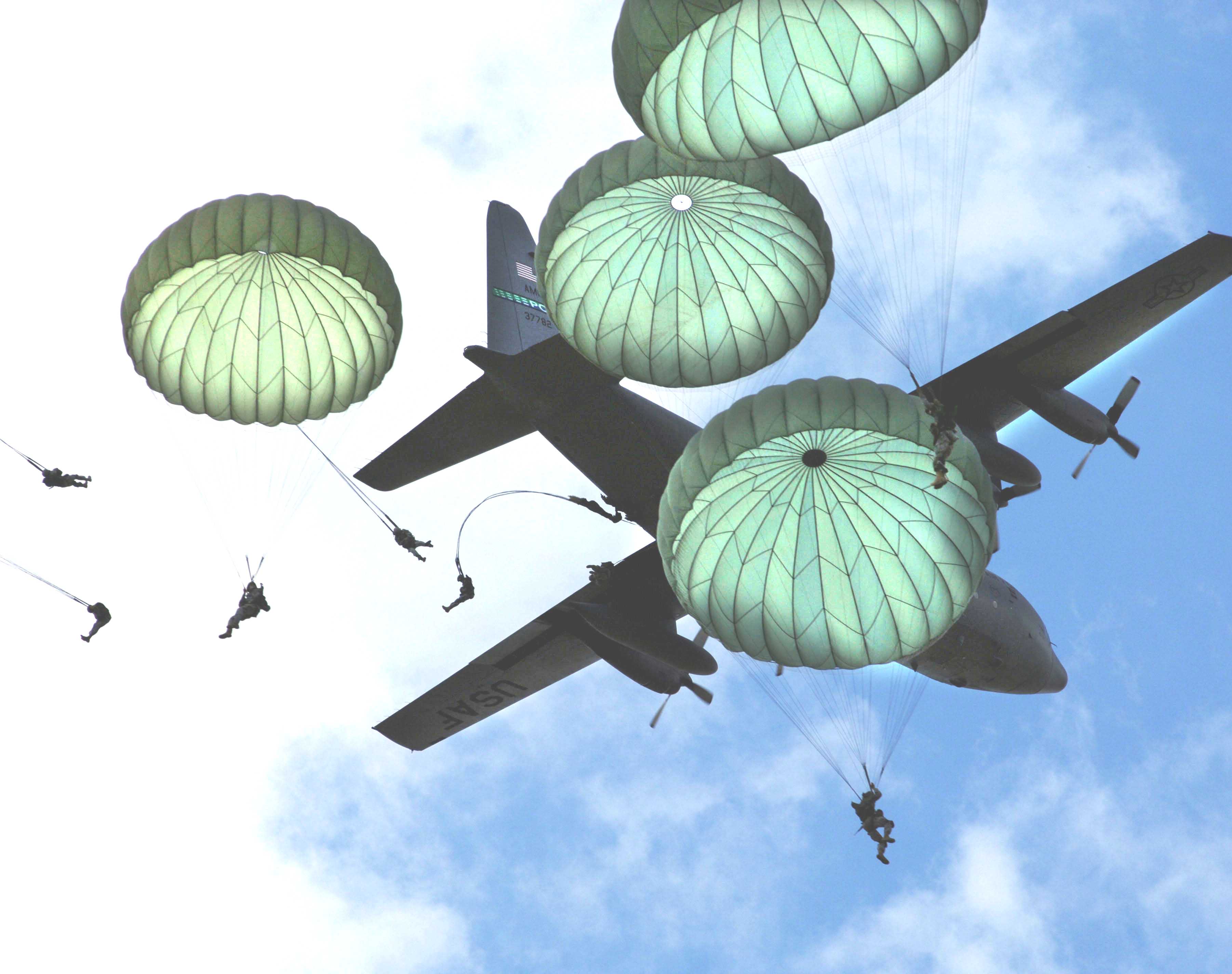
Manteuffel went on to say that he agreed with the view I had often expressed in my writings that the basic military problem of the present time was to diminish the proportion of auxiliary troops and vehicles in comparison with the striking arms. "But for such progress to be attained the High Command must learn the new language of mechanized warfare.
The new model army calls for the design of a new kind of strategy. For these ideas to win acceptance, it is important that all the new type of forces should be under a single chief of adequate status. At the same time in order to foster the esprit de corps of the troops composing this elite army they should not only have the best of equipment and training facilities--but a distinctive uniform-the smartest possible."
Elite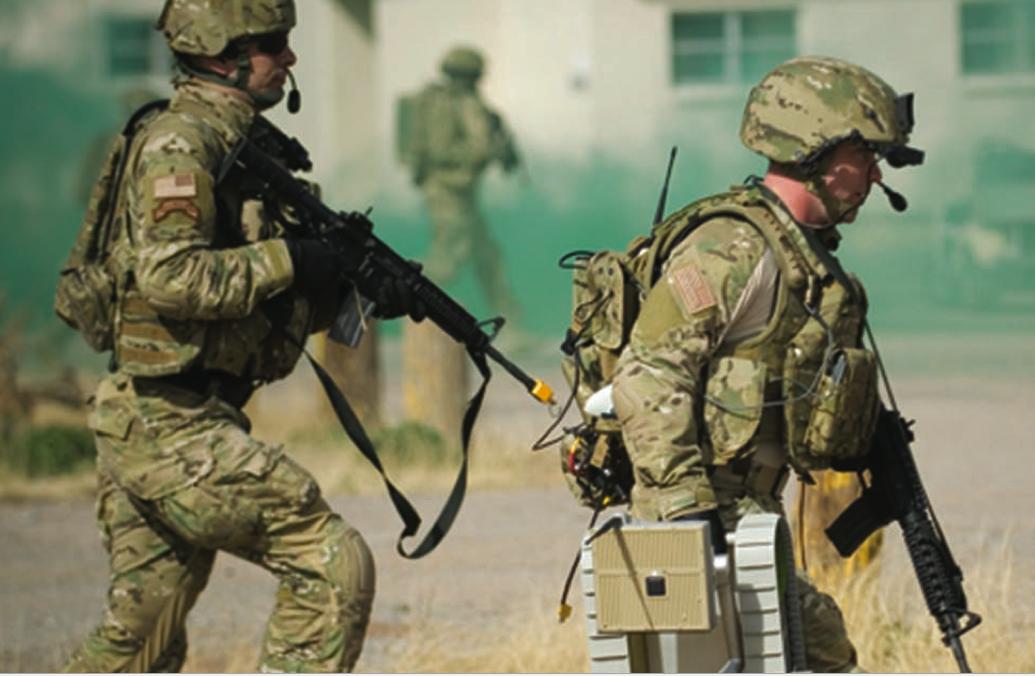
*********************************
"The two most dangerous weapons the Germans have are our own armored half-track and jeep. The half-track because the boys in it go all heroic, thinking they are in a tank. The jeep because we have so many God-awful drivers."
--General George S. Patton, U.S. Army; who ironically would later die in a traffic accident
*********************
NOTE: the U.S. military has yet to field even 15 elite mechanized divisions--much less 30!
We are at best half-tracked and half-wheeled.
And at worst, completely wheeled and foot-slogging.
We have no light tank cavalry for reconnaissance and no fixed-wing recon/liaison and observation/attack aircraft.
Our medium to heavy tanks have high silhouettes and are fuel hogs worse than the German Tigers.
Those in "heavy" brigades are looked down on as "mech pussies"--hardly anyone's elite thanks to their unimaginative, cowardly way of only wanting to stampede their tanks like a cattle herd--and not take any maneuver risks to attain surprise.
So much for learning from WW2.
"He who will not answer to the rudder, must answer to the rocks."
--Herv
Do you realize that in WW2 we fielded 100 U.S. Army divisions, yet in 6 decades since we have not even come close to fielding 15--much less 30--fully mechanized elite divisions as Manteuffel has called for? At best, American divisions (now 3 heavy brigade combat teams that wear the division patch for tradition's sake) are half-mechanized and the other half are still a Jessica Lynch underclass in wheeled, unarmored trucks demanding roads/trails--when America clearly has the industrial power to put every Soldier under armor in light tank tracks to go in the Patton-style bold, unpredictable, cross-country maneuver directions to unhinge any enemies. The German generals say they lost WW2 because they did not have fully tracked formations and their supplies in wheeled trucks got bogged down in Russian winter snow and mud. Does anyone in the U.S. Army read and study war? Is anyone in the U.S. Army a professional who thinks?
PART 2: What's Our Excuse Now?
The Whole Point of the Airborne Armored Multi-Purpose Vehicle Family AKA M113 Gavin was to be C-130 air-transportable
The U.S. Army has had EXCELLENT Light Tanks Since 1945--and Still Does!
In part 1, we saw that the U.S. Army had excellent light tanks AT THE END OF WW2 and every year thereafter--but failed to exploit them in concert with gliders and powered transports to attain decisive maneuver in the Korean war and many times since. One man who did something to correct this was LTG James M. Gavin who as Chief of Army Research & Development in the 1950s exploited aluminum alloy armor technology to build the world's greatest light tank chassis; the M113 to be a fully enclosed armored personnel carrier with cross-country, amphibious and C-130 airdrop mobility. The advent of the M113 which is justifiably named the "Gavin" in 1960 changed the face of modern warfare by providing unparalleled cross-country mobility for not just cavalry scouts--but mechanized infantry to surprise the enemy at all levels of war, from a surprise airdrop into rear areas down to avoiding road attacks and ambushing-the-ambushers, cross-country. The M113 Gavin is the greatest and most successful tank of all time and has been kicking ass in combat in Vietnam, the Middle East, Panama, Iraq, Afghanistan ever since. The problem is that the U.S. Army to date has failed to fully exploit the mass-produced, affordable M113 Gavin to make truly elite, 100% all tracked combat forces--as the Germans realized were needed to prevail in non-linear, fast-moving wars. Glimpses of what such forces can do were seen in the Armored Cavalry Regiments (ACRs) in Vietnam, but the Army as a whole was--and still is--stuck in WW2 doldrums of having either 50% of the force in wheeled trucks dependant on roads or even entire light formations that foot-slog and cannot even do WW1 without suffering heavy casualties.
One commonly heard pile-of-crap from heavy tankers is that light tanks like M113 Gavins are "not adequately armored against RPGs" etc. "Are not" isn't the same as CANNOT. Anyone who can read specifications knows the M113 hull is the basic 7.62mm AP bullet and HE blast STARTING POINT for your armor package. Even as-is, the M113's 1.5 to 1.75" thick hull is very sturdy and doesn't rust like the 1/2" think LAVs do. Watch how a Gavin hull below takes 30mm autocannon shell direct hits and stays intact. You wouldn't want to be in a LAV/Stryker when hit by these shells!
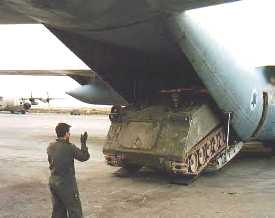
 www.youtube.com/watch?v=VFcFC1k8nD8
www.youtube.com/watch?v=VFcFC1k8nD8
M113 Gavin hulls are even stronger than Bradley hulls that are only 1" of 5083 aluminum alloy with belts of spaced laminate. To see what a M113 looks like with spaced laminate belts, see the Armored Infantry Fighting Vehicles (AIFVs) used by the South Koreans, Dutch and Belgians.
 www.youtube.com/watch?v=KlcIJZLvxg4
www.youtube.com/watch?v=KlcIJZLvxg4
 www.youtube.com/watch?v=ZKa3tK3zi4c
www.youtube.com/watch?v=ZKa3tK3zi4c
If you don't put the bar/slat armor on to pre-detonate RPGs as General Don Starry describes what happened in his book, Mounted Combat in Vietnam, what do you think is going to happen in those 1 out of 7 RPG misses that hits? What is moronic is the excuse at the time that the openings between the bar armor would "snag on vegetation". Were Soldiers of that era complete imbeciles who were unable to think-for-themselves accepting whatever BS fed them by the bureaucracy? Hadn't at least some of them passed metal shop class? So no one at the time thought of welding flat pieces of metal to streamline & cover the openings between the bar armor to make opaque skirts for any vegetation to slide off...sort of like the side skirts the Germans fitted to their tanks to defeat similar hollow charge weapons in WW2? So no one had ever read a WW2 book or seen any pictures of German tanks? Take a look at the M113 Gavins on-the-move in Vietnam in the picture below; notice the rolls of chain-link fencing that at stops would be unrolled and erected with engineer stakes to pre-det RPGs.
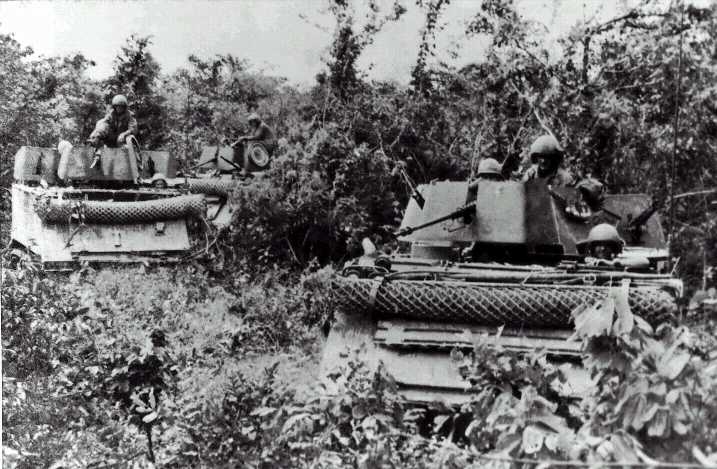
Tell me no one at the time thought of stretching these rolls like a scroll to cover the front and sides of their tracks to act as a RPG pre-det layer WHILE MOVING? As I asked in PART 1, does anyone THINK in the U.S. Army? The question still stands today.
Black Horses to Combat Airdrop into Panama
 www.youtube.com/watch?v=_sOEkhvntOk
www.youtube.com/watch?v=_sOEkhvntOk
11th ACR "Black Horse" Vietnam veterans who remembered what light tanks could do, employed them boldly by USAF airland and airdrop into Panama in 1989 so that when battle was joined, the PDF and dictator Noriega were already in "check" surrounded by armored task forces in M113 Gavins and M551 Sheridans. A year later, Iraqi dictator Saddam Hussein thought he could annex Kuwait and its oil fields so the American Airborne and its light tanks were strategically airlanded into Saudi Arabia to block him from taking their oil wells; 3rd Battalion 73rd Armor was later flown tactically by C-130s to the far west to be the left flank screen for the "Hail Mary" hook of Operation DESERT STORM. The Army generals running the war had a heavy force bias against the light forces and failed to drop the Airborne ahead of the Iraqi Republican Guard to block their escape, choosing instead a shallow helicopter movement of weak infantry in Humvee trucks into a pair of forward bases. Coupled with the slow pursuit of the Iraqi army by the heavier forces, Operation DESERT STORM had neither a "hammer" or an "anvil"--it was a mild push to evict Iraq from Kuwait leaving dictator Saddam Hussein in power which would require us to fight again to remove him a decade later.
A few years later, the 82nd Airborne was again ready to drop into Haiti with their light tanks--and the dictator there saw "check mate" and decided to take his "check" from the U.S. Government--and go into permanent exile.
Disaster in Somalia, Iraq and Afghanistan: The Army Bureaucracy Strikes Back--No Light Tanks For You!
 www.youtube.com/watch?v=pp24PPc2orA
www.youtube.com/watch?v=pp24PPc2orA
These operational maneuver successes by Army light units were upsetting to the heavy tanker mentality "graybeards" as well as the light infantry narcissists who want to fight wars on foot. In the latter's egotism, they deployed to Somalia in 1993 without any light tanks of their own which should have been an institutional improvement made after the success in Panama. What's tragic is that in the book, A History of Fort Benning, on page 406 it reveals that Combat Engineers--Sappers--deployed with M113 Gavins to Somalia in September, yet the light infantry bigots on the scene didn't bother to utilize their tracked, armored mobility; resulting in the debacle on October 3, 1993 where 19 Rangers and some Delta Force operators died needlessly when surrounded and pinned down by enemy fires.
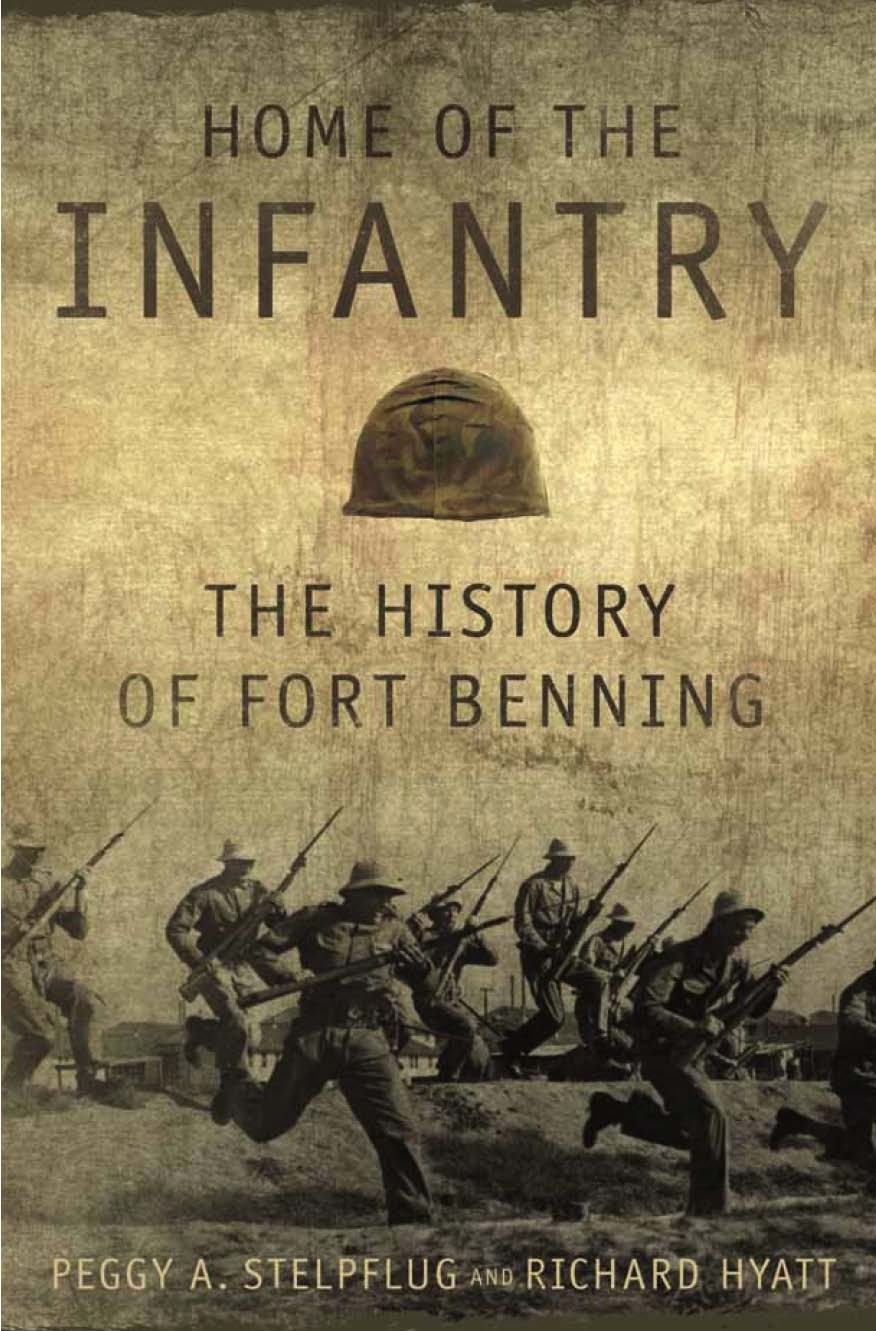
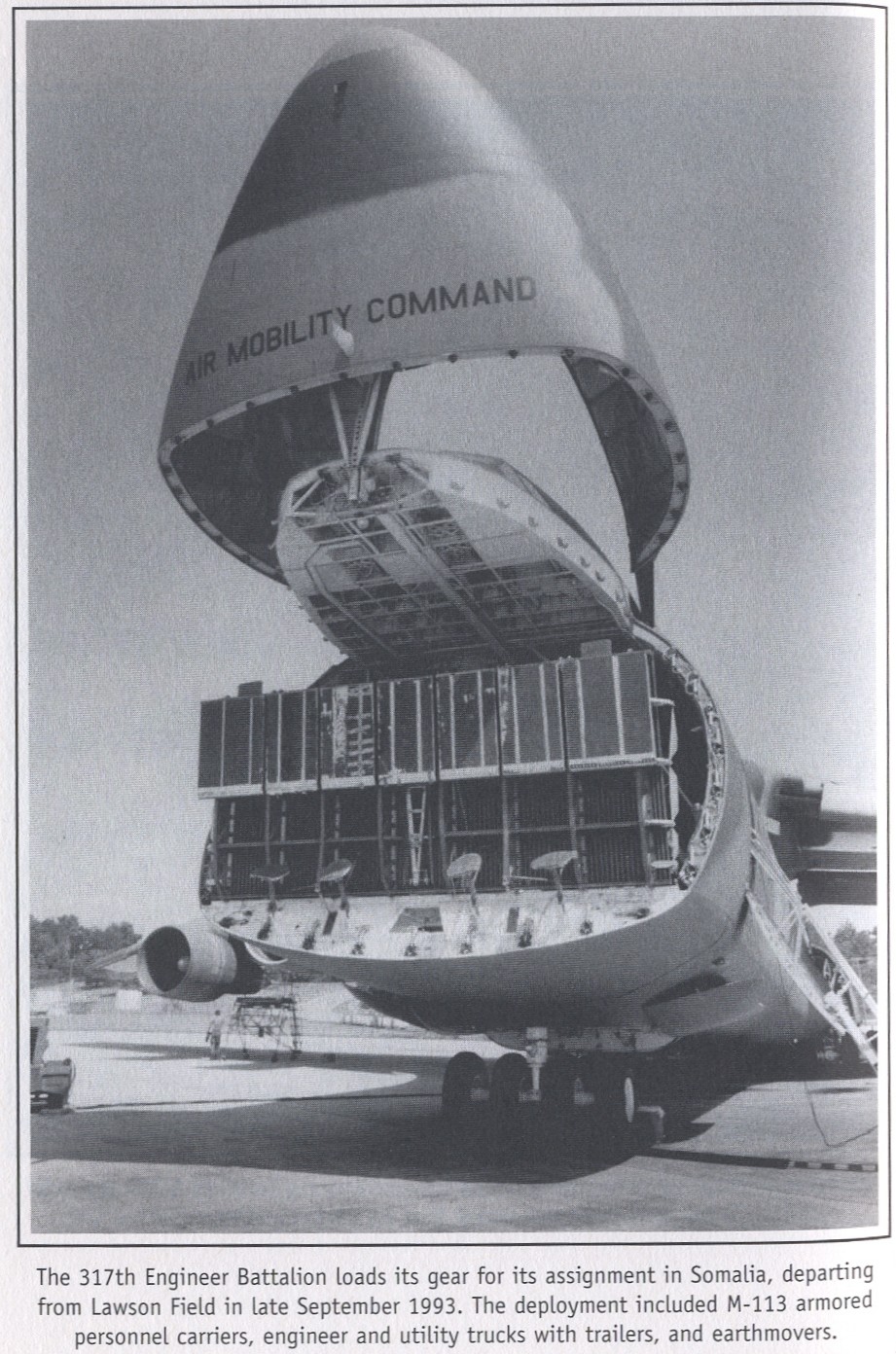
In late September, elements of 317th Engineer Battalion and other units of the 3rd Brigade, 24th Infantry Division (Mechanized), commanded by Lieutenant Colonel Kenneth S. Kasprisin, participated in a standard rotation deployment of troops to Somalia to provide combat and logistics support. The deployment included M-113 armored personnel carriers, utility trucks with trailers, earth movers, and other engineer equipment.
The question is what was the 317th Sappers doing on October 3, 1993 when their light tanks and them were needed to rescue the trapped Rangers?
 www.vimeo.com/20315000
www.vimeo.com/20315000
Surely there must have been some Delta operators--or Garrison himself--who were at Panama in 1989 when a Little Bird during the Kurt Muse rescue was shot-down after lifting off from the roof of Modelo Prison and M113 Gavins came to their rescue...or the armored task force with Gavins that hunted down Noriega...
So less than 4 years afterwards, despite the clear positive examples of light tanks bringing about victory (+) and preventing defeat (-), the brass at Headquarters Department of the Army deliberately lied to the Airborne to get them to give up their M551 Sheridan light tanks, sending them to NTC while promising purchase of the new M8 Buford Armored Gun System. Once the light tanks were gone, the Army lied again and cancelled the AGS purchases and then disbanded the Airborne's light tank unit in 1997 despite the fact they could easily have been equipped with M113 Gavins and fitted with recoilless rifles and/or TOW ATGMs for firepower.

Santa Barbara of Spain's TC7 twin-106mm Recoilless Rifle cupola available off-the-shelf
Scuttlebutt is that the main graybeard behind this treason was retired general Glenn Otis who was embittered because he had been promised command of the Army's only airborne light tank battalion but when he didn't get it, he decided years afterwards to get his revenge at the expense of America, her army and her Soldiers. The bad sociology in play was that if the Army Airborne had modern light tanks, they'd get all the action along with rapidly-deploying light forces--and the heavy tankers would have nothing to do and would sit on their asses in CONUS. They still do this, anyway--even though we have C-17s and rapid sealift that can move them anywhere in the world.
 www.youtube.com/v/BE5NkDia3bY
www.youtube.com/v/BE5NkDia3bY
When the American Airborne today goes somewhere in a hurry, the Army's non-jumping tankers are forced to come along in an uninspired way that neither taxes them nor surprises the enemy--as seen in the 173rd's jump into Northern Iraq in 2003 that failed to cut-off the escape of Saddam and subordinates from Baghdad to start a guerrilla war against us. The Sky Soldiers waited as USAF C-17s slowly airlanded the tankers and mech infantry, taking several days. Refusing to buy light tanks with big guns, the Army bureaucracy makes our Airborne obliged to take long runways just to land tankers who don't want to fight in anything less than a heavy 70-ton Abrams tank. And most of the time, they refuse to even do that--as seen by their failure to deploy even to the flat plains and valley areas of Afghanistan. Nevermind, that Army heavy units have M113 Gavins by the thousands that can act as small [machine] gun light tanks and infantry transports that can be parachute-dropped in the first minutes of a forced entry and then rapidly fan-out to seize objectives as was done in Panama in 1989. This is what should have happened after the "Herd" jumped into Northern Iraq. Instead they dropped BS Humvee trucks. The video below proves the point made to me years ago by the makers of the C-17--that vehicles could be airdropped from the center and then up to 54 Paratroopers on the side-wall seats. Imagine instead of 4 x BS Humvee trucks, 3 x M113A4 Super Gavin light tanks were dropped...followed by the 54 Paras immediately using rip-cord and AAD-activated parachutes with drogue chutes--if we can't figure out anchor-line cables on the C-17 extending out to the rear ramp for static-line jumps like C-130s have. They'd land closely together and de-rig their Super Gavins and put them into action immediately...
 www.youtube.com/watch?v=Y_tflYu0bfE
www.youtube.com/watch?v=Y_tflYu0bfE
While Army heavy units rotate to do tours in desert-urban Iraq over the years, its to just do absurd presence patrolling a little bit better protected when they should be in the Army's light tanks to do sub-national conflicts a lot better via cross-country maneuver into ambush positions (SCMs = security creating maneuvers) and as aircraft-mobile Quick Reaction Forces (QRFs).
The Army's light units are not innocent in this travesty; since taking over Headquarters Department of the Army (HQDA) beginning in the Army Chief of Staff General Eric Shinseki era to pander to liberals in Congress bent on nation-building, they have lied to the American people saying they need to spend $ BILLIONS of tax dollars in order to have C-130 air transportable armored vehicles--when we have had M113 Gavins all along since the 1960s and they could be upgraded at a fraction of these costs and be far superior combat vehicles. When Congress mandated tests of the wheeled trucks against modestly upgraded M113A3 Gavins, the tracks soundly defeated the wheels in every category of performance; but HQDA lied to the media, Congress and the American people saying the results showed a "draw". Then to add insult to injury, the LAV-III wheeled truck dubbed "Strykers" cannot even fly intact at all by C-130s and even stripped-down can't even fly overseas because they are still too heavy. HQDA recently admitted to its Stryker/C-130 lie that they can't fly.
 www.youtube.com/v/HhKPCeBXvgU
www.youtube.com/v/HhKPCeBXvgU
America's Army Bleeds--While Light Tanks That Could Save Them Sit Unused
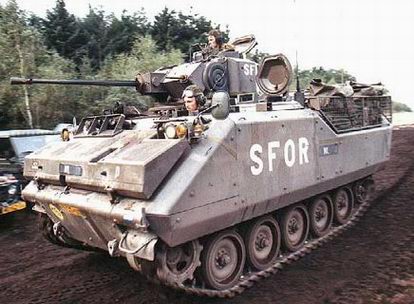
Our NATO allies are not so petty and stupid as we are. They have been using light tanks like upgraded M113 Gavins like the AIFV above to great effect in Afghanistan; but their pockets are not deep in debt like ours. They have added anti-RPG armor and counter land mine jamming devices but the absurd American-dictated CONOPS of not sealing the AFPAK border by a sensor-security fence to hold-the-enemy-by-the-nose and then trying to chase bandits all over mountain and desert the size of Texas has bankrupted our NATO allies, many who have left the mission. America has the technology to not only secure the AFPAK border with a security fence system but to back it up with QRFs in M113 Gavins upgraded with v-hull shaping, anti-landmine, RPG, ATGM and autocannon armoring, sensors and overmatching weaponry like 30mm autocannon so our infantry is not pinned-down and unable to move by enemy fire as what befell Combat OutPost Kahler during the Battle for Wanat village in 2008.
 www.youtube.com/v/9SPHgpLWPws
www.youtube.com/v/9SPHgpLWPws
America has the C-130s and the C-17s to parachute drop QRFs anywhere in Afghanistan to achieve surprise that kills/captures/secures--instead of kicking up dust clouds visible for miles away by the enemy by sending out herds of wheeled trucks from forward operating bases (FOBs) along roads/trails into ever increasingly-sized land mines. Gavins can even be reduced in size to roll-on/off from inside CH-47 Chinook helicopters.
Of course all of this costs money; and America is now broke because its military has squandered $ BILLIONS on BS like Stryker trucks--when it should have been adding NEW CAPABILITIES to the M113 Gavin light tanks we already have. The main reason the light infantry wants to be seen in wheeled trucks is so they can not look like the "mech pussies" who use tracks. Well, that's too damn bad. You should use what works BEST--and to hell with how it looks like. This isn't a TV fashion show. If being seen in a light tracked tank somehow means you are a "pussy who doesn't parachute jump", you prove that paradigm wrong by actually DOING THE DEED and airdropping with your light tanks. The proof is in the pudding--and right now we are not using our light tank "pudding" and our men are suffering and we are on the verge of strategic defeat in both Iraq/Afghanistan.
Future Success in War Requires Light Tanks for Decisive Maneuver and Firepower
combatreform.org/ARMORMAGmarchapril1998crisisofconfidenceHARMONfuturetank.jpg
America's incompetent ground force bureaucracies (U.S. Army and marines) are increasingly at risk of being soundly defeated in any war against any opponent who does a modicum of homework. While we are bleeding and losing in Iraq/Afghanistan when we should have already smothered these sub-national conflicts (SNCs), we are increasingly at risk of a Beirut bombing type of battlefield ass-whipping that results in strategic defeat in nation-state wars (NSWs). America has still failed to take heed of the German general's advice and make the progress that should have taken place in the aftermath of WW2 and create truly elite all-tracked combat forces. There are a few wise military experts calling on us to reform and be combined-arms forces--but their usual recipe ignores the need for a cavalry maneuver element to unhinge the enemy and ends up having a large main body slamming headlong into the enemy, Montgomery-style. We are definitely headed into WW1 style stalemate as British general Francis Tuker warned us in The Pattern of War because we refuse to value and earn maneuver.
Light Tanks for Decisive Terrain Maneuver Leverage (TML)
combatreform.org/vonkarmanwantsAMS.jpg
Even as far back as 1945, von Karman understands there is no excuse for Airborne forces not to have their own mechanized mobility and superior firepower means; to not have these is a deliberate crutch. We have the airlift to deliver enough light tanks for every Paratrooper. To obtain that decisive maneuver that unhinges the enemy, we must have light tanks that can be flown en masse or go cross-country unpredictably with stealth to act as terrain maneuver levers like seizing a port city on a Sicily so the enemy cannot escape to the boot of Italy fight another day. Or capturing a dictator fleeing his capital city. The enemy is not stupid and realizes these are high value targets (HVTs) and often heavily guards them such that we cannot just send light commandos-paratroopers on foot to take them down. To crack these nuts, we need a nutcracker---light tanks to accompany these men so they have armor protection and superior firepower. It seems only in America that weak egos refuse to employ light tanks and try to do everything on foot or in a wheeled truck according to the absurd U.S. military light vs. heavy sociology. Let's get past this stupidity and look at the kinds of light tanks we need to do "Air-Mech-Strike".
I avoided discussing turrets or no turrets earlier to show that we should have kept using the M18 Hellcat after WW2 and modernized it, exploiting its ability to fly by C-130s--had we thought of trying it. One of the whines the heavy tankers have against the Hellcat and other light tanks is their lack of armor protection. 1-800-OBVIOUS. Part of this condition is a result of INSISTING ON A 360 DEGREE SWIVELING TURRET ON TOP--which squanders 50% of payload potential in any design. In other words, get rid of the turret and you become a far smaller target to even be seen by the enemy--much less get hit--and the weight savings can be used for greater armor. Bottom line: a turret-less light tank can be as well armored as a medium tank. Even better--if that medium tank has a turret and is being inefficient and offering a high silhouette. If medium tank protection in a light tank package is not good enough for you, then you are indeed a "mech pussy" and need to leave the service and go be a civilian doing something safe where no courage is required.
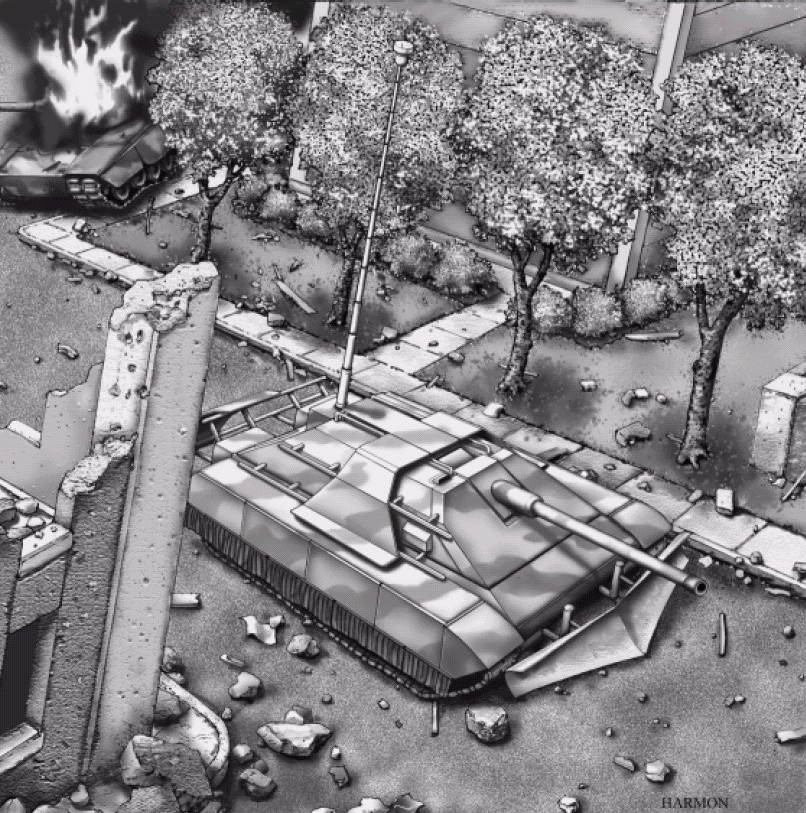

 www.youtube.com/p/9009D1B2E5929BCD
www.youtube.com/p/9009D1B2E5929BCD
The Germans knew the power of being turret-less in their STUGs--which were light tanks--and were the most feared and successful tanks of WW2. The great British armor futurist Kenneth Macksey realized this and came to this conclusion in his book Tank vs.Tank where he details his turret-less "Goliath" tank. So even if tank dueling is what you want to do, on the modern battlefield you had best be turret-less so you are not seen; because if you can be seen, you can be hit, if hit, killed. Nothing follows if your turret has been popped off and you are in flames as fuel and ammunition cooks off. The video below shows this happening after an ATGM hit at the vulnerable turret/hull junction:
 www.youtube.com/watch?v=Wk61LxejXnk
www.youtube.com/watch?v=Wk61LxejXnk
Turret-less light tanks are needed for the most powerful 3D air-mech forces possible in order to unhinge the enemy by decisive TML maneuvers in concert with 2D mechanized forces approaching from flanks, front "holding by the nose".
We should develop a turret-less, M113 Gavin STUG with a 105mm gun learning from the Swedish "S" tank and applying shoot-on-the-move technologies and a 30mm autocannon remote weapon system and infantry in back with firing port hatches and transparent armored gunshields for close-in security.
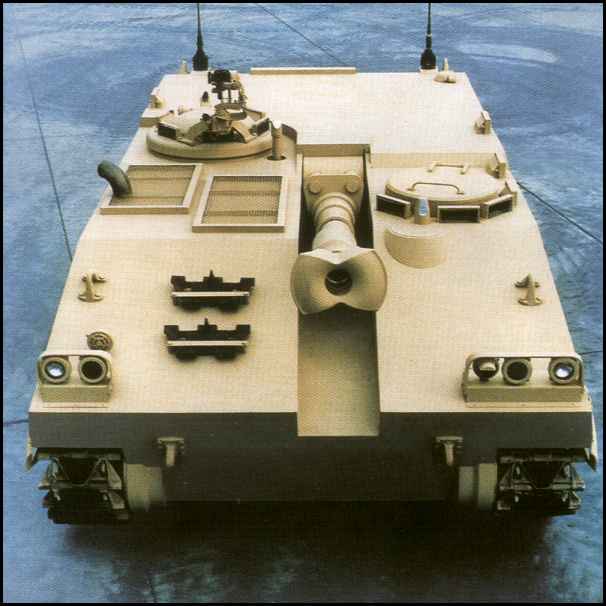
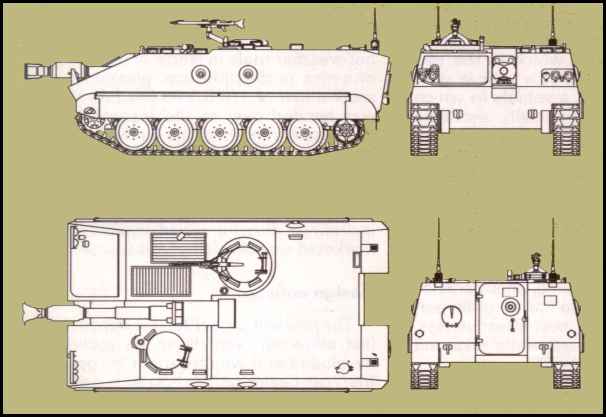
Light Tanks for Decisive Terrain Firepower Saturation (TFS)
Once the U.S. Army realized in WW2 to first saturate the terrain with firepower (TFS) using its SPH Assault Guns and if this were not enough air strikes and naval bombardment, its weak maneuvering infantry could advance and clear-out enemies to establish a "line" on a map. As this line was advanced, eventually the enemy nation-state capital would be over-run, and the war/peace switch would be thrown and victory attained. TFS and linear war was also successful in Korea against the NORth Korean (NORKs) and CHInese COMmunists (CHICOMs) hiding deep in the ground and well-camouflaged--once we obtained the necessary SPH defacto assault guns in addition to lots of light and medium tanks.
Videos
 www.youtube.com/watch?v=wWfgoKOazzg
www.youtube.com/watch?v=wWfgoKOazzg
 www.youtube.com/watch?v=nT4pM-Fc_3Y
www.youtube.com/watch?v=nT4pM-Fc_3Y
However, as the bitter lessons of Korea were forgotten in the mad rush to meet the tank maneuver armies of the Red Army at the Fulda Gap in Europe, artillery branch gravitated to indirect fire roles and "heavied up" their SP howitzers to the current M109A6 "Paladin" which is too big to accompany light troops in a city fight or up steep mountain closed terrains.
The result is today, the U.S. military has LESS TFS FIREPOWER THAN IT HAD IN THE KOREAN WAR! Now that wars are non-linear, without mobile TFS, the enemy is free to hide and ambush us at will--even in our FOBs and Combat Outposts--like during the 2008 battle for Wanat village.
There is no reason why we couldn't put a
 www.youtube.com/v/-Y-j4KCNqKM
www.youtube.com/v/-Y-j4KCNqKM
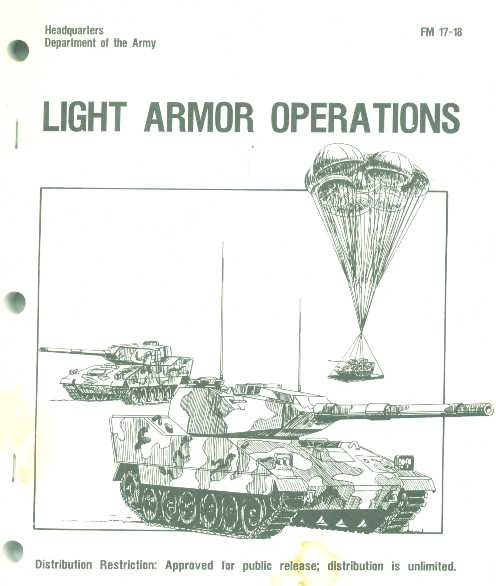
FYI the Army has already a field manual online outlining how to employ a light armor platoon using M8 Buford Armored Gun System light tanks, called FM 17-18 Light Armor Operations:
Army Digital Library
www.adtdl.army.mil/cgi-bin/atdl.dll/fm/17-18/f1718.htm
However the Airborne will need infantry to accompany and escort the M8 AGS light tanks and these can moved in conjunction by employing 11-ton M113A3 Gavin light tracked armored personnel carriers which were flown into Northern Iraq by 3D maneuver and were very effective during the 2D maneuver drive into Baghdad:
The Army has thousands of M113 Gavins in storage and they are certified for parachute airdrop. The easiest way to employ M8 AGS light tanks and M113 Gavins would be by designating an infantry battalion's "Delta" Weapons company to use M8s/M113s instead of vulnerable HMMWV trucks. Details:
 www.youtube.com/watch?v=9BxrSVW6IRA
www.youtube.com/watch?v=9BxrSVW6IRA
Lastly, the reason the Airborne desperately needs light tracked armored vehicles is best shown in the power point presentation we made for the 20th Airborne Combat Engineer Brigade:
The Saga of the M551 Sheridan Light Tank: Proof of the Paradrop Tank Concept
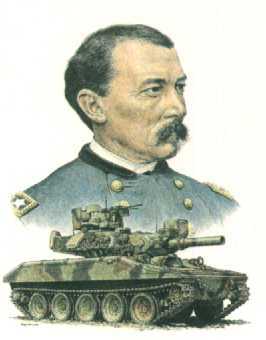
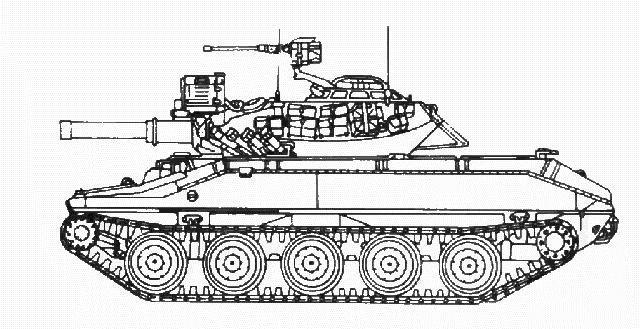
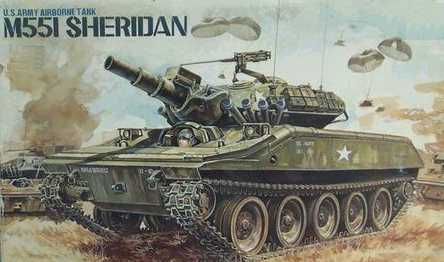
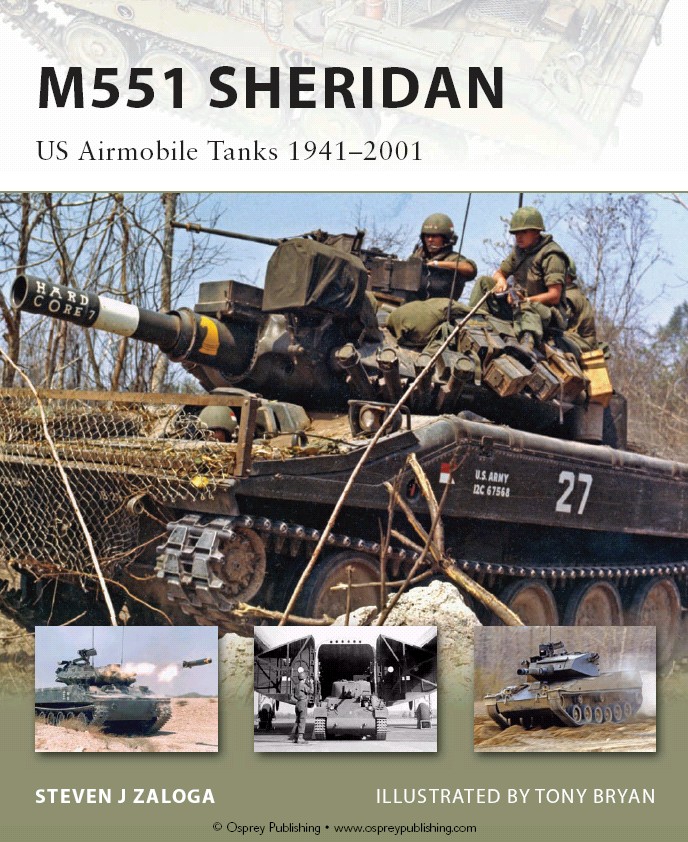
Read Steven Zaloga's Sheridan: U.S. Airmobile Light Tanks 1941-2000:
 PANAMA 1989
PANAMA 1989
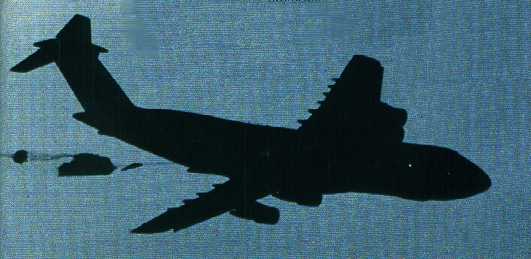
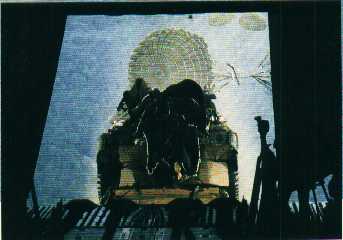
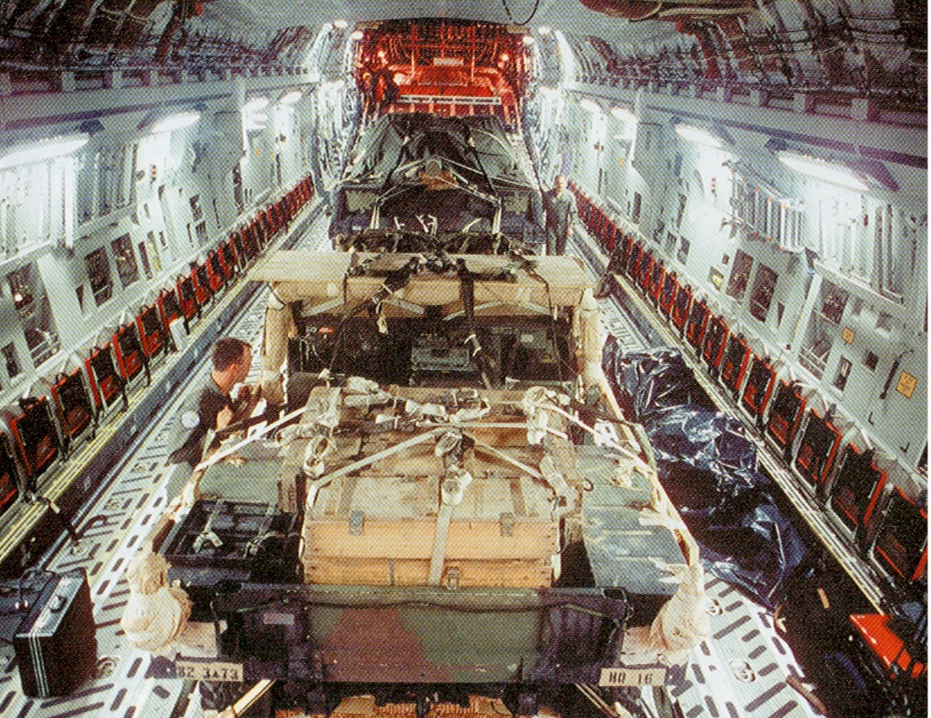
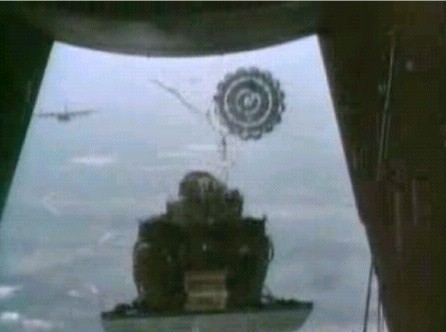
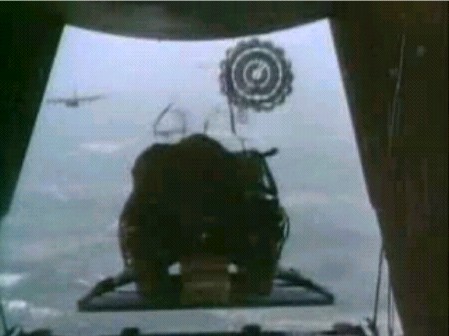

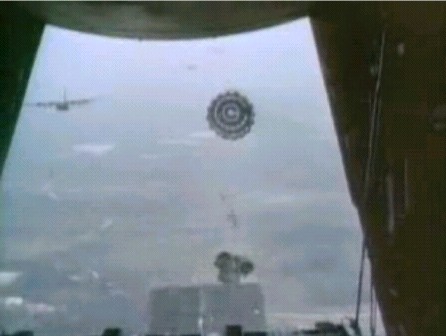
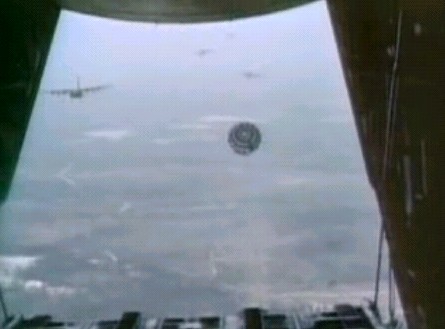

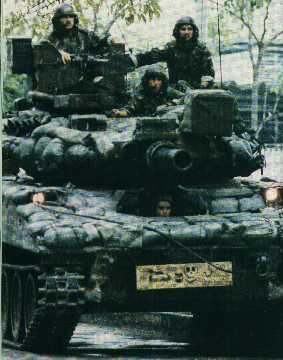
M551 Sheridan in modernized form used to airdrop/airland in to defeat the PDF for Operation Just Cause, the invasion of Panama and capture of dictator Manuel Noriega (still in Florida prison cell)
 VIETNAM, PANAMA, PERSIAN GULF, HAITI: U.S. ARMY LIGHT TANKS VICTORIOUS
VIETNAM, PANAMA, PERSIAN GULF, HAITI: U.S. ARMY LIGHT TANKS VICTORIOUS
CPT Frank Sherman, U.S. Army "C" Company Commander of 3rd/73rd Armor who parachute airdropped in his light tanks to support the 82nd Airborne Division writes; "Our first encounter with the Panamanian Defense Force (PDF) occurred as the infantrymen of 1st Battalion, 504th PIR were establishing a supply route from Toucumen International Airport to their initial objective of Tinajitas. The convoy had only moved a few kilometers when it stopped to clear a roadblock located on a bridge. As the Sheridansmoved to the edge of the highway to support the infantry, SSG Troxell, the lead tank commander, called me on the radio and stated, 'This is hell of a place for an obstacle, buildings all around and no cover. It looks like swamps on both sides of the road'. As the infantry dismounted and began to execute their obstacle drill, they began receiving automatic weapons fire from the buildings no more than 50 meters away. The lead tank commander opened up with .50 caliber fire as the wing tank commander screamed to his gunner to identify the threat. A moment later, SFC Freeman, 1st Platoon sergeant, yelled, 'I got 'em, concrete building, second floor, fourth window from the right'...He fired a 152mm heat round at the target, ripping through the room, collapsing the right side of the building. The enemy fire stopped and the infantry finished clearing the roadblock..."
LTC John Barker, U.S. Army, former XO of 3rd/73rd Armor Battalion says:
"The Sheridan with its 152mm main gun was the near-perfect light infantry support vehicle. It could swim. It had thermal sights. It had long-range armor destruction capability equal to or greater than a Hellfire missile (check your PH/PK classified data!) The Shillelagh with its 152mm HEAT round could blow a hole in a reinforced concrete wall large enough for infantry Soldiers to walk through side by side. An infantry leader could use the external phone, it boasted a flechette' round that could blast 17,000 one-inch nails into enemy infantry as close support, and oh by the way, you could parachute it into combat for those nasty 'forced entry' missions typically laid at the feet of the Paratroopers of the "Devils in Baggy Pants", "Panthers" and "Falcons" of the 82nd....."
Quotes from U.S. Army Armor magazine:
 www.youtube.com/v/50cpPAVoxJQ
www.youtube.com/v/50cpPAVoxJQ
"Sheridans in Panama", Mar-Apr 1990 page 15, CPTs Kevin Hammon and Frank Sherman;
"We gave away our seat on a planeload of Warriors" Jan-Feb 1997, page 3, LTC John Barker
EXCELLENT ACCOUNT OF THE MIGHTY M551 IN PANAMA COMBAT:
Operation Just Cause: The Armor-Infantry Team in the Close Fight
by Major Frank Sherman, U.S. Army ARMOR magazine, 1996
 Vietnam: Teething Troubles
Vietnam: Teething Troubles
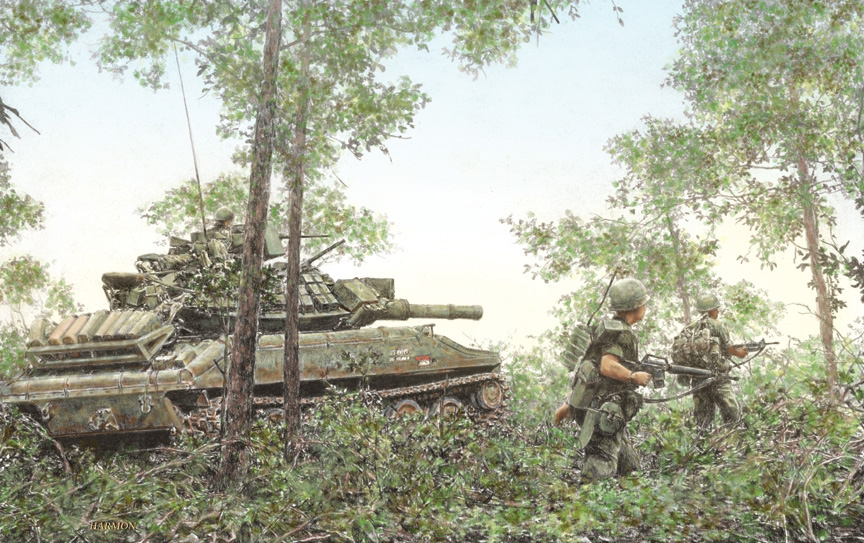
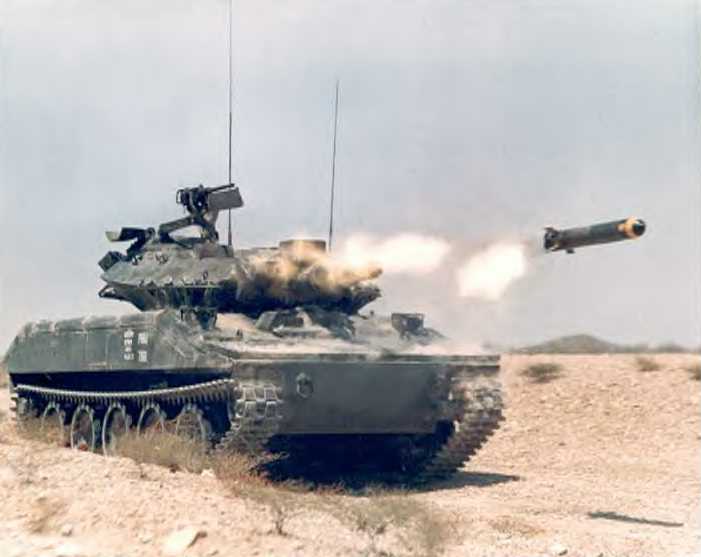
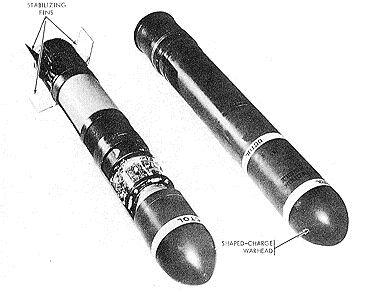
A Sheridan Memoir: The Early Days
by Lieutenant Colonel Burton S. Boudinot (Retired), U.S. Army ARMOR magazine, January-February 1997

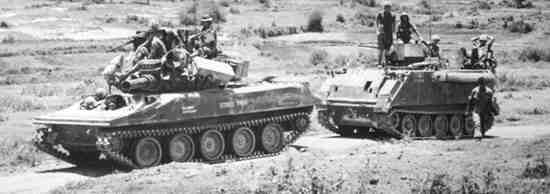
Sheridan kicking VC/NVA derriers in Vietnam configuration
 HELICOPTER SLING-LOAD
HELICOPTER SLING-LOAD
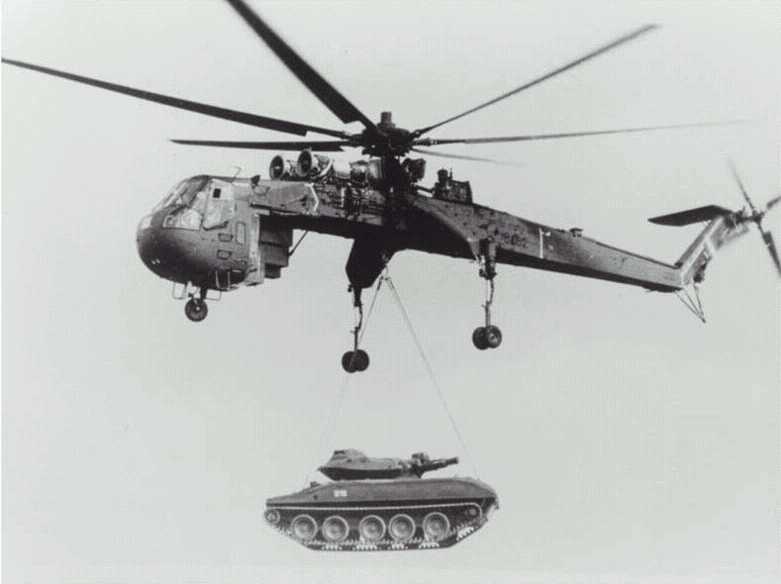
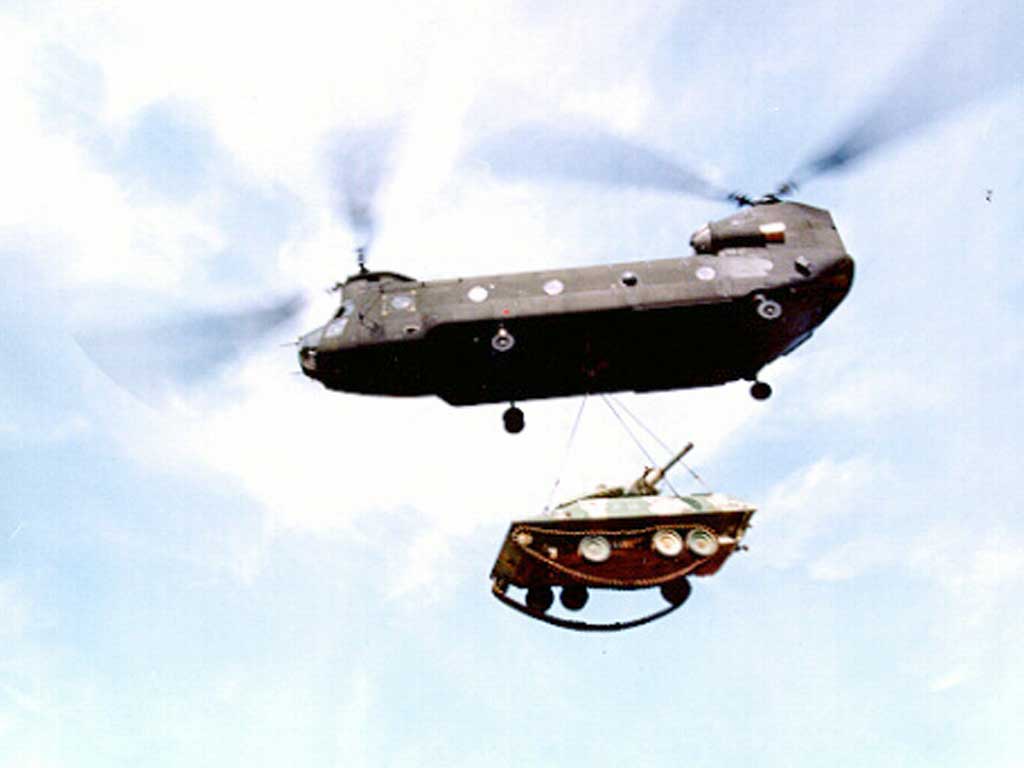
1960s-era M551 Sheridan light tank slung under a CH-54 helicopter...why not hold it more closely under the landing legs for a streamlined fit so the helicopter can fly faster? Why wasn't the CH-54/M551 Sheridan and lighter M113 Gavin APCs used in combination for Air-Mechanized maneuvers during the Vietnam war?
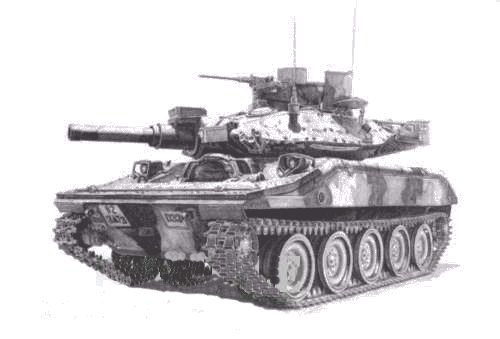
 LAPES: LOW ALTITUDE PARACHUTE EXTRACTION SYSTEM FROM 5-10 FEET
LAPES: LOW ALTITUDE PARACHUTE EXTRACTION SYSTEM FROM 5-10 FEET
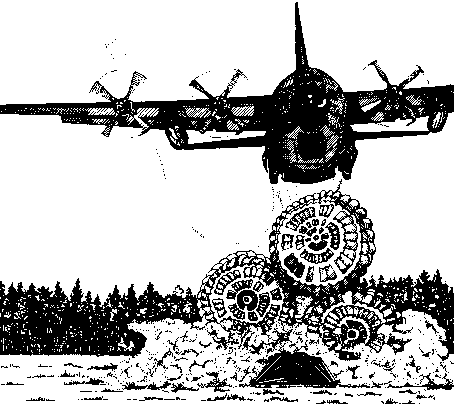
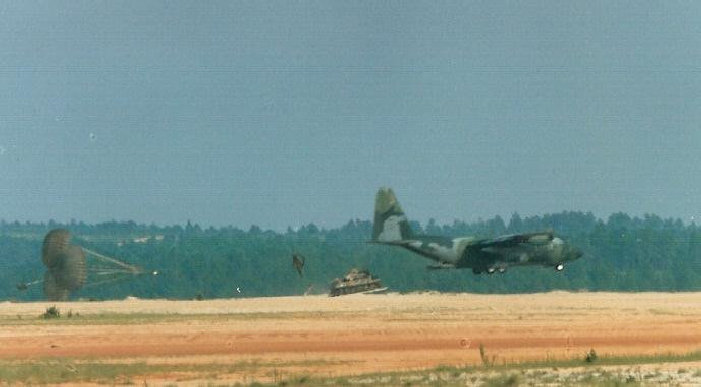
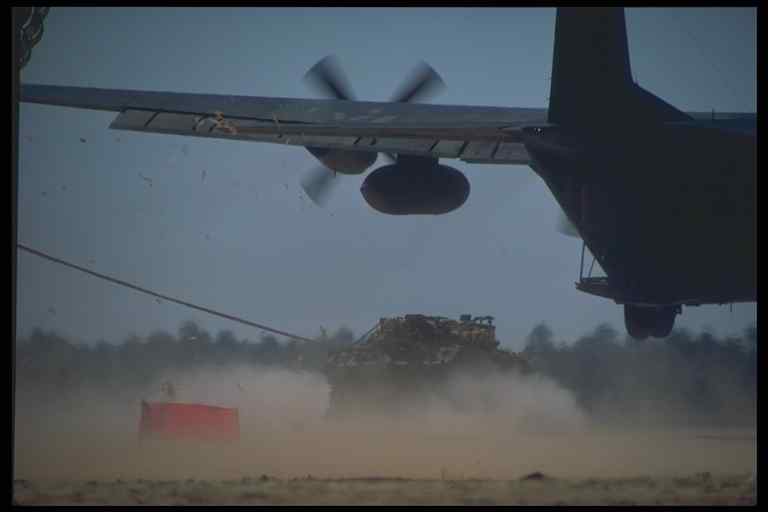
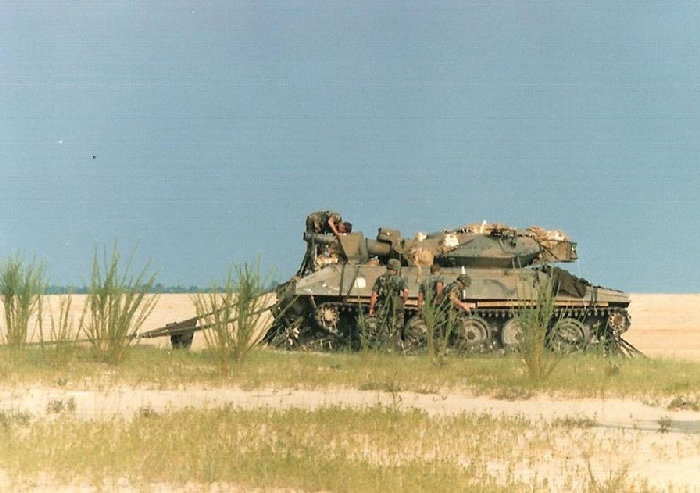
 AIRLAND: BY STOL FIXED-WING AIRCRAFT
AIRLAND: BY STOL FIXED-WING AIRCRAFT
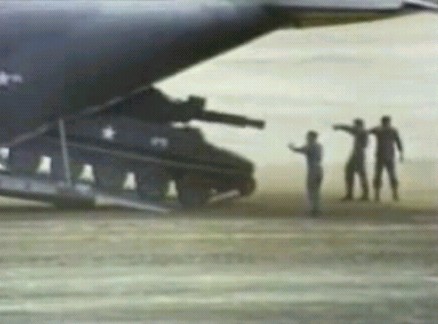
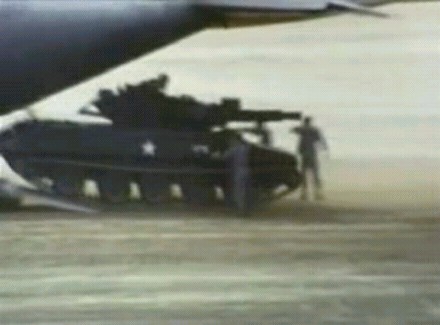
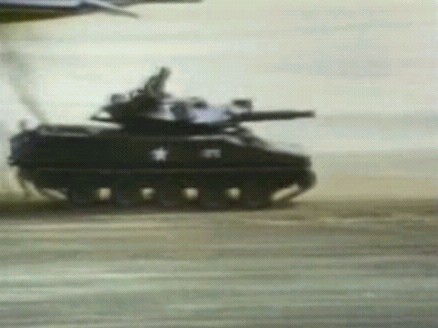
During Operation DESERT SHIELD, Sheridans and Gavins were flown by USAF C-130 Hercules STOL aircraft out west to take part in the "Hail Mary!" left flanking envelopment of the Iraqi Army for Operation DESERT STORM.
The Army's light tanks got to Saudi Arabia by mighty USAF C-5 Galaxy aircraft....
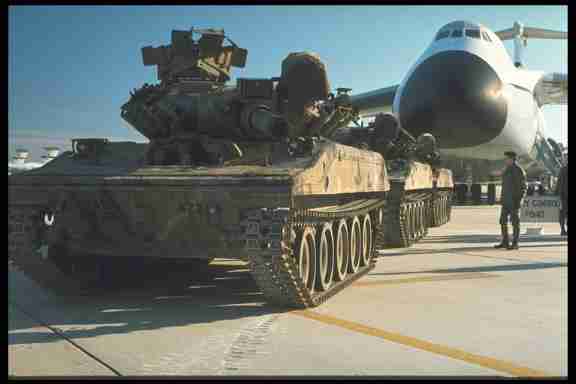

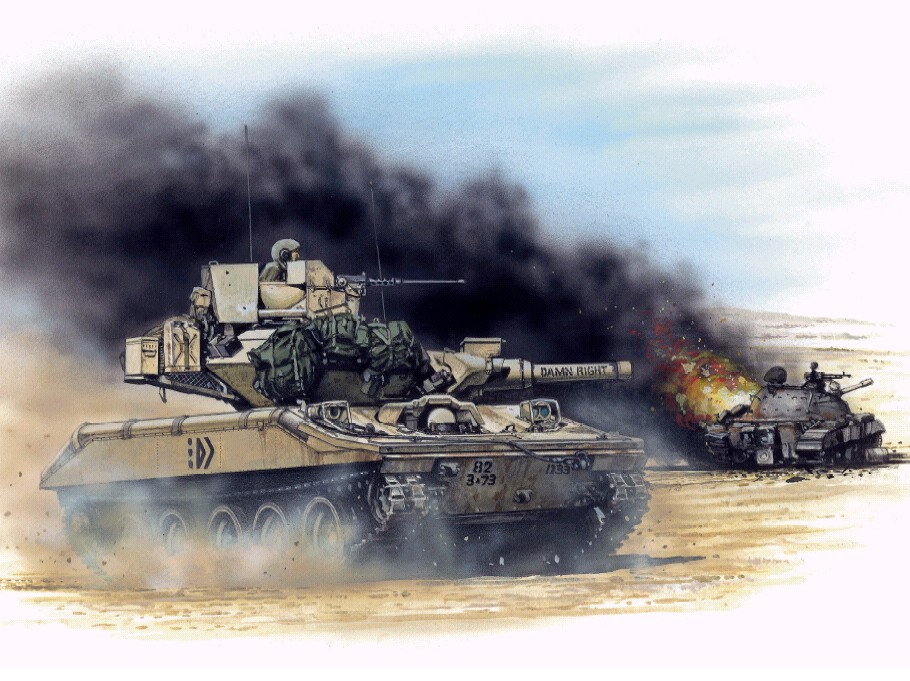
Zaloga reports on page 43 of his book the Sheridans performed well without mechanical break-down and one of these light tank crews even destroyed an Iraqi T-59 or T-55 medium tank with a Shillelaugh missile while 3/73rd Armored was over-running the 45th Iraqi Infantry Division. See artwork of this above.
 AMPHIBIOUS WITH PREPARATION: THE SHERIDAN CAN SWIM!
AMPHIBIOUS WITH PREPARATION: THE SHERIDAN CAN SWIM!
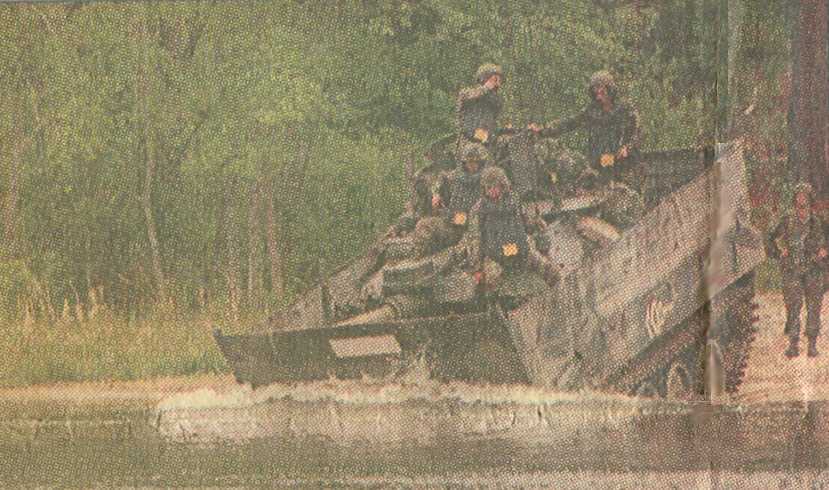
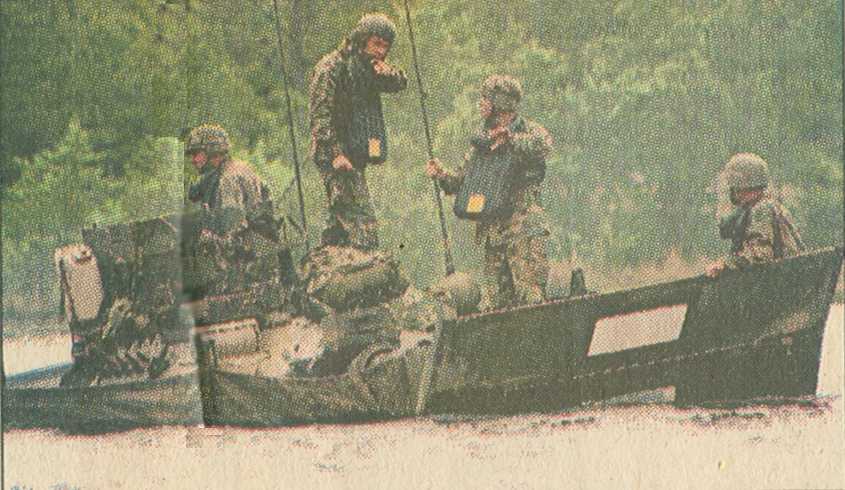
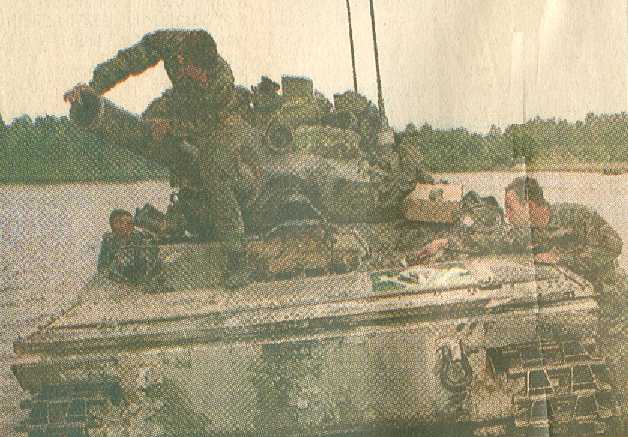
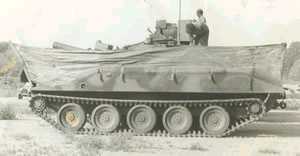
"I liked the Sheridan. It's missile was way ahead of its time. For a time it was the only missile in the world that could defeat reactive armour and the T-80. The last time I jumped with the Airborne armour guys(1982), they LAPESed in a company, drove to the range and all fired a missile which all hit at 4,000 m. Not too shabby in those days. It was better than nothing and could have saved some lives in Somalia.FK--writing in to a www. Military News GroupIMHO
"Within this evolutionary climate, fiscal realities and the aging of existing systems have resulted in a significant gap in our forced/early entry capabilities. The deactivation of the 3rd Battalion, 73d Armor, coupled with the termination of the Armored Gun System (AGS), has created a critical need for enhanced direct fire assault support and anti-armor capabilities for forced/early entry forces".
Official U.S. Army ACTD web site statement
 MIGHTY M551 SHERIDANS AND M113 GAVINS ROLL TO VICTORY IN DESERT STORM!
MIGHTY M551 SHERIDANS AND M113 GAVINS ROLL TO VICTORY IN DESERT STORM!
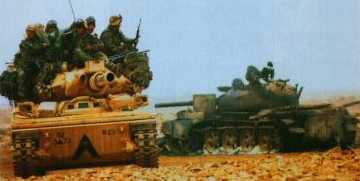
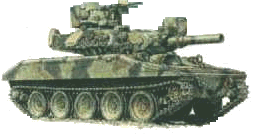

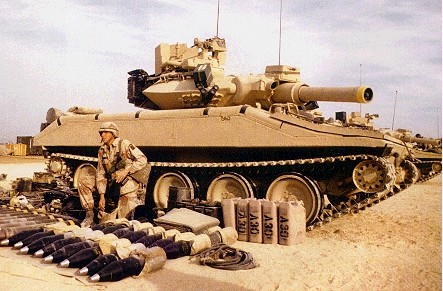
One of the things that REALLY PISSES us off is this BS that the 82nd Airborne deployed to do Desert SHIELD without ANY tanks. Not true.
A fu*king lie.
3rd Battalion, 73rd Armor deployed with 56 x M551 Sheridan 17-ton light tanks and a number of M113 Gavin 10.5 ton light personnel carrying tanks. These were flown into battle positions by USAF C-130s, which is a little known fact.
Both the Sheridan and Gavin are better combat vehicles (lighter, more mobile, more armor protected, better armed) than overweight 20-ton piece-of-shit lav3stryker armored car rubber-tired deathtraps. Or "armored HMMWVs".
So much for Army "transformation" as it stands today.
The above is a very good picture I stumbled on of a M551 Sheridan with a fireteam of infantry on top passing by a burned out Iraqi T-62? tank during Desert STORM. And a mighty Sheridan getting loaded up during Desert Shield.
AWESOME!
However, now imagine its 1997.
STRIKE #1
Despite (change that TO SPITE) all the success U.S. Army light tanks have recently had with the Airborne, U.S. Army CSA General Dennis Reimer knuckles under to pressure from other General officers, stupidly cancels the M8 AGS out of anti-Airborne petty jealousy (real reason not money). A light tank getting all the action might mean no action for M1 heavy, defensive tankers. A light tank requiring tankers to parachute after it, implies personal risks that the 2D, wants-to-fight-risk-free-war-in-invincible-tanks-or-nothing type narrow-minded Armor branch person cannot accept. These are the folks who only call something a "tank" if its over 40 tons and has a revolving 360 degree turret ansd a big gun in it. These platform-centric types don't accept the REALITY that there are heavy, medium and light tanks that operate on planet earth by human beings, they see the U.S. Army is the center of the universe and defines all reality. This is how they marginalized the M8 Buford by calling it an "Armored Gun System" when it really is a LIGHT TANK. What these heavy tank or nothing types don't want to accept is that light/medium tracked armored fighting vehicles CAN DO WHAT TANKS DO; which is attack the enemy with shock action and overwhelm them. They think that if they acknowledge that lighter tanks can do tank missions they will be out of a job with their American-made M1 Abrams "Tiger tanks". The fact is when the tank was born in WWI, they didn't have turrets. Some even carried infantry. The truth is ANYTHING THAT IS TRACKD AND ARMORED IS A TANK, PERIOD.
The modern battlefield is a battle against the earth itself and man. The earth itself is either open terrain or closed terrain types. To optimized for open terrain you need heavier tanks for 2D maneuver; in closed terrain you need lighter tanks which can swim, go cross-country at-will, and even by flown OVER closed terrain vegetation/buildings for 3D maneuver. What we have just explained goes way over the head of most narcissistic military people who just want the most ego-gratifying platform money can buy.
The M8 AGS has already been Army-type classified for production.
6 x M8 AGS fully-combat-ready prototypes have been made.
Cost is just $3.5 million each.

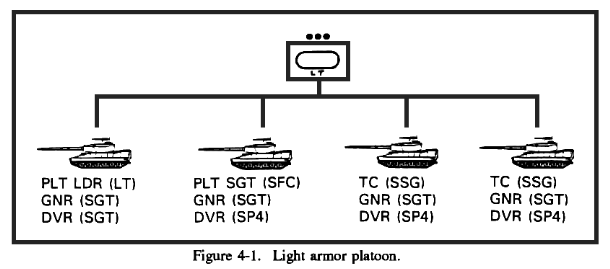
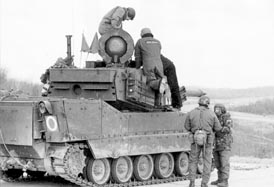

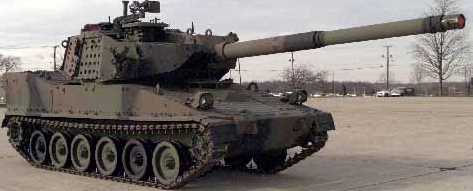
Its Field Manual, FM 17-18 Light Armor Operations is written and distributed.
The 3rd/73rd Armor Battalion at Fort Bragg, NC and 2nd ACR at Fort Polk, LA are ready to receive the M8 AGS light tank.
STRIKE #2
The Army then retires 3rd/73rd's M551s to be war-toys at NTC.
Ok, 2 stupid mistakes.
STRIKE #3
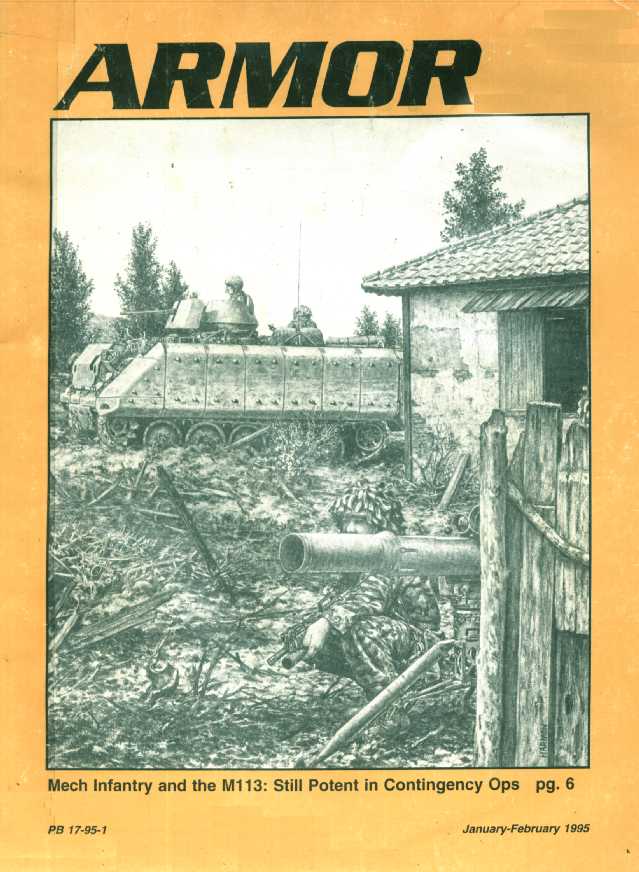
Ralph Zumbro's Armored Expeditionary Forces, U.S. Army ARMOR magazine, Fort Knox, Kentucky, September-October 1995, pages 14-16
Both Vietnam combat veteran and noted author Ralph Zumbro, Mike Robel, Mike Sparks and Stan Crist had written numerous articles starting two years before in the January-February 1995 U.S. Army ARMOR magazine outlining how available M113A3s can be used as contingency airdrop AFVs. Despite numerous articles with do-able, zero-cost options that have never been challenged in print (because they are true), the Army continued with its drive to self-destruction.
WHY DIDN'T HQDA SIMPLY SUPPLY 3/73rd ARMOR BATTALION WITH 56 x M113A3s TO REPLACE THEIR SHERIDANS AND USE THEM AS TROOP TRANSPORT/FIRE SUPPORT PLATFORMS?
This is exactly what Stan Crist proposed...and what Mike Robel had proposed 8 years before!
Too Late the XM8, Alternatives to the Armored Gun System
by Stanley C. Crist, U.S. Army ARMOR magazine, Fort Knox, Kentucky, January-February 1997, COVER article

As a member of the 1st Tactical Studies Group (Airborne) Stan went to the trouble of writing in good faith to the Heavy tanker lunatics at Headquarters Department of the Army (HQDA) and asked them why not re-equip the 3rd Battalion, 73rd Armor with M113 Gavins and 106mm recoilles rifles since both are available?
Here's how HQDA non-answered him:
PAGE 1
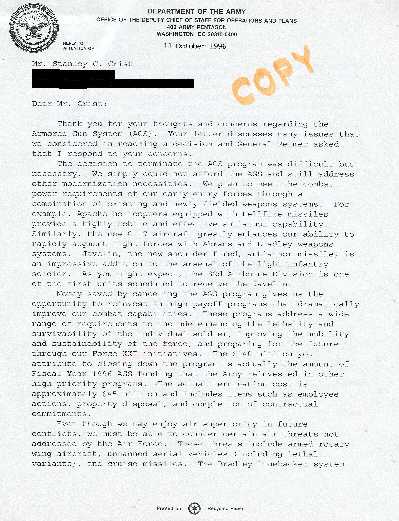
PAGE 2
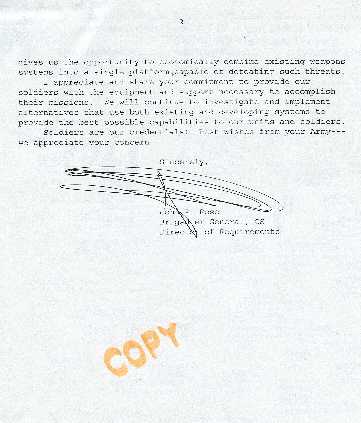
Notice the bullsh*t response from a HQDA General who conveniently IGNORED THE QUESTION OF WHY NOT EQUIPPING THE 3/73rd ARMOR WITH M113 GAVINS?
The real reason is clear. Because the Army was then run by heavy tanker egomaniacs who DID NOT WANT THE AIRBORNE TO BE ABLE TO PARACHUTE IN WITH ITS OWN LIGHT TANKS. It was NEVER about money and budget, it was ALL ABOUT EGO. Who was going to get the glory and how to keep the Airborne down-trodden lest it get all the action. Yes, the Airborne is populated by some intolerable loud-mouth egomaniacs who call people "legs". Fire those fu*kers. However, America NEEDS AN AIRBORNE, a 3D maneuver force that can be there by fixed-wing planes and parachutes THAT HAS ITS OWN LIGHT TANKS with them so they can locate and encircle the Bin Ladens of this world and counter the Red Chines nation-state bastards that want to gobble up nearby free countries. We had this in Panama and we got Noriega. We don't have this now, so Saddam escaped to start a guerrilla war that bleeds us to this day in Iraq and Bin Laden remains on the loose preparing to nuke an American city. The Army brass always has its own selfish agendas that come first and GETTING THE JOB DONE SUFFERS in this heavy vs. light bullsh*t whipsaw/pendulum effect of which faction is running HQDA at the time.
Strike 3, you are out!
Why?
Because the Army is led by gutless cowards who are afraid to parachute jump to take risks to gain positional advantage if they are "heavies" and if they are light narcissistic egomaniacs their manhood size suffers if they have to admit they need tracked armored vehicles the "mech pussies" use---so kiss DECISIVE MANEUVER by 3D goodbye. And an American city in the near future.
Further research shows that about $100 million of the money that should have bought us TANGIBLE M8 Buford light tanks went to a PAPER STUDY OF ENHANCEMENTS for the M1 heavy tank!
Ok, fine. You are a heavy tanker egomaniac. Then use the !!@@#$% money to TANGIBLY IMPROVE THAT TANK with things like a fuel-miserly diesel piston engine to replace the turbine engine. Nadda. No can do. That would mean being more ready for combat when the truth is WE DON'T WANT TO FIGHT. We want to play bullshit garrison games on middle class wages from the U.S. taxpayers.
So when war in Iraq came again, we still had the 7 gallon-per-mile turbine engines in our M1 heavy tanks that are unguarded in the rear so RPG shots can take them out. A lot of good being a 70-ton heavy tank if you leave your "back door" open in the rear. There are no gunshields on top so commanders and loaders get killed by snipers. After 1, 800 dead and 20, 000 wounded in Iraq NOWWWWW HQDA "sees the light" and upgrades our M1s with rear grill RPG pre-det screens and gunshields. Replace the 1500 hp turbine engine with a 1500 hp Europack diesel that sips fuel at 1 mpg so we can have less of our Soldiers blown up in fuel truck convoys?
Nope. No can do.
Tankers want to be able to "hot rod" in heavy tanks and we like having a "Jessica Lynch" underclass of "support" Soldiers drive us our fuel and water so we can feel sooo superior to them.
The Army has no Cavalry Branch---it created "Armor" branch in 1940 to work-around the Chief of Cavalry who didn't want to give up horses and its been almost downhill ever since (except for General Gavin's Vietnam-era ACRs using M113A3 ACAVs).
Later on, they borrow from discounted civilian sociologists, Alvin and Heidi Toffler's "Third Wave" techno-centric world-view and created a BS bombard & occupy digital firepower "RMA" construct so they don't have to 2D maneuver, either!!!! Instead of building forces to meet real global threats, DoD and the Army pursue technology for technology's sake; anticipating to fight a narcissistic mirror image of themselves (symmetrical foe--not asymmetric enemy) with their favorite war toys and methods. Red China is lying in wait to fight the U.S. just like Germany set up to ambush France/Britain in the 1930s while they tragically went about fighting small wars in the preferred manner and ignored the threat until it was too late. It looks like WWIII will begin just like WWII did--with the West's military leaders in self-imposed fantasy land.
Fast forward to 2001...
STRIKE #4
America has been struck by al CIAduh-concocted "suicidal terrorists" on September 11, 2001 because we are physically asleep on duty in a make-believe world of virtual unreality to protect our own borders from hostile saboteurs and protect our airspace. We know the al CIAduh terrorists are based in Afghanistan. The 82nd Airborne as usual, is ready to parachute drop into Afghanistan to cut-off the terrorists escaping our predictable airstrikes. Thanks to a courageous Commanding General named Montgomery Meigs in Europe, a M113A3 Gavin Immediate Ready Force-Medium (IRF-M) is ready to fly in with the 82nd Airborne to give it light tank shock action.
The Rangers jump into the Southern Afghanistan airfield, and then leave.
Details:
All the World's Airborne Operations
What happened?
The airfield is not held to be a Forward Operating Base (FOB). The 82nd and M113A3 Gavin IRF-M are not sent in. In fact, the Army's own operations staff presented plans to CSA General Shinseki, that included using 4 of the M8 AGs light tanks. Shimseki rejected sending the IRF-M into Afghanistan because it would highlight how great M113 Gavins are and remind everyone that LAV-III/Strykers that cannot fly by C-130s into dirty, dusty areas, SUCK. Shinseki deliberately sent in our men ill-equipped into danger just to protect his pet Stryker budgetary cash cow. Details here:
"How far are you willing to go?"--Sean Connery in The Untouchables
That's a question we should be asking our leaders to get today's terrorists....but our firepower/RMA/Tofflerian leaders DO NOT BELIEVE IN MANEUVER..just mouse-clicking some bombs and "media spin" later...They rejected Airborne operational MANEUVER to stop terrorists from escaping out of Afghanistan out of service politics (can't send M113A3s from Europe would endanger multi-billion-dollar LAV-III armored car purchases)...and jealousy over who gets the "glory" not a concern over human casualties....the 82nd could have dropped right behind the Rangers, held the airfield and THEN....forayed to the border...MSNBC reports:
GROUNDING THE AIRBORNE: Missed opportunity: How bin Laden got away
The result: al-Qaida's leadership, along with senior Taliban officials, live on to fight another day. It is just one of the war's missed opportunities now coming to light"
"In early November, as the first strongholds of the Taliban and its al-Qaida allies began to fall in northern Afghanistan, officers of the U.S. Army's two Paratroop units - the 101st and 82nd Airborne Divisions pleaded with the generals running the war to have their men dropped along the Afghan-Pakistan border region to cut off the retreat of al-Qaida and its leader, Osama bin Laden. To the fury of these officers, their pleas went unanswered, turned aside because of the high probability of casualties.
.
(MSNBC.com, 18 Feb 02)
Oh, I forgot after the Al CIAduh and Taliban escaped, we sent some token marines in to draw attention to themselves and pretend like we sent ground forces into action since we already had 10th Mountain Division and SF Soldiers in country for weeks beforehand but in a low-key manner, however they must have not been in much danger since they ran around without helmets and body armor on. The majority of the enemy was long gone, headed into hills/mountains to wait and regroup.
Why?
Because positive CNN media publicity of M113A3s and god forbid, M8 AGS light tanks kicking-butt in Afghanistan would mean the world would know the multi-billion dollar LAV-III/IAVs General Shinseki says are needed to create a C-130 air-transportable force is not needed and a waste of tax dollars.
THIS IS WHY "AL QUEDA" TERRORISTS ESCAPE.
Because Army politics come before VICTORY IN COMBAT.
So now in 2002, still in the middle of a "war on terrorism" the Army wants to instead of upgrading its M113A3 Gavins and buying some Army tested and certified M8 Buford AGS light tanks and getting into the fight...they want to waste $$$BILLIONS on inferior LAV-III/IAV armored cars that cannot airland by C-130s let along parachute airdrop and will not be ready for months and months. Syndicated columnist of the Pittsburgh Post-Gazette, Jack Kelly and Frank Tiboni of Defense News have courageously taken on the Army's lies publicly.
Combat Veteran Jack Kelly exposes the Army's "Heavy Metal" Problem
2006: Light Infantry Narcissists Running U.S. Army to ruin: Non-Linear Battlefields Require FULL armor protection: tracks are 28% more capable of armor protection--and can go cross-country to avoid ambushes in the first place than wheeled trucks...but light egomaniacs can't afford to look like the "mech pussies" in tracks
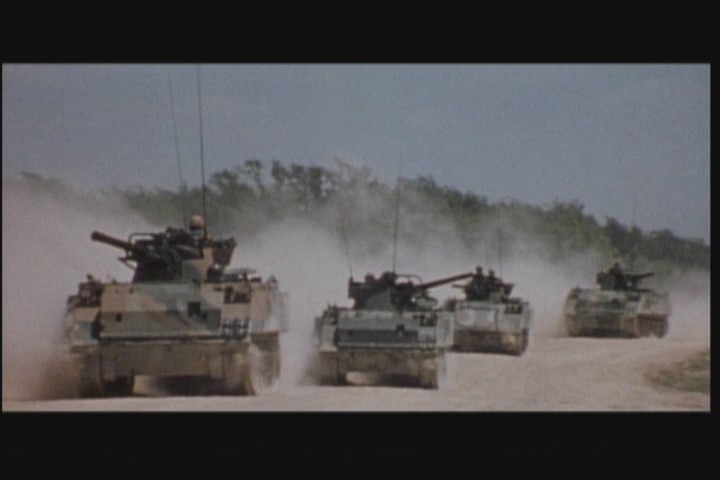
General James M. Gavin as Army Chief of Research & Development created the Airborne Armored Multi-Purpose Vehicle Family (AAM-PVF), the amazing M113 in the 1950s for maximum mobility over nuclear devastated, non-linear battlefields.
The official history of the U.S. Army for that time period says the following:
www.army.mil/cmh-pg/books/amh/AMH-26.htm
The seven divisions stationed in the United States constituted the strategic reserve. Four of these-two airborne and two infantry-were designated in 1957 the Strategic Army Corps (STRAC) and were maintained in a high state of readiness for quick deployment in event of an emergency. The other three were earmarked as STRAC reinforcements and as a training base for expansion of Army forces should the crisis become prolonged or develop into a full-scale war.With the emphasis on mobility, even the larger and heavier weapons and equipment were designed to be air-transportable.
A program to produce ground and air vehicles with the necessary battlefield mobility led to the development of armored personnel carriers, such as the M113 with aluminum armor, that could move troops rapidly to the scene of operations while providing greater protection for the individual Soldier. Since
585
highways and bridges might be damaged or destroyed, dual-capability amphibious vehicles that could travel on rough terrain and swim across rivers and swamps freed the fighting units from total dependence upon roads.
What today's planners don't realize is that what was required for a nuclear battlefield is required today with PGMs in a Surveillance Strike System (SSC) that can be as equally devastating but in a more localized way: units ON TRACKS not wheels. We need GREATER PHYSICAL mobility, firepower, protection and livability features not less regardless if tied in to a "Mother May, I?" computer network to alleviate the anxieties of senior officials.
Thus, the M113's purpose was armored, amphibious cross country mobility for LIGHT, AIRBORNE units. In 1960, America's Airborne should have been the first ones to have "air-mech" capabilities organic but the ill-conceived ROAD reorganization plan reverted back to the paratroopers foot slogging and their armored tracks went to heavy units instead. Mass-produced and inexpensive, there was and still is enough M113s to supply BOTH light and heavy units. The old saying if you don't get it right, you spend the rest of your time trying to get it right comes to mind.
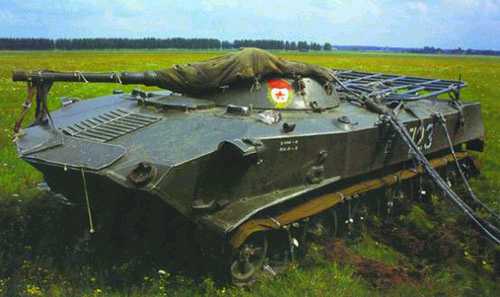
BMD-1 after parachute airdrop; note kneeling landing gear
Compare the U.S. Army in 2006 to the Russian Army of today...8 years after we revolutionized ground maneuver tactics with the M113 but sat on its potential, they created their own BMD and fielded one to every paratroop squad. They are already on their 4th Generation BMD and we are still trying to get "GEN I" M113 Gavins IN light units. What a disgrace to the memory of our great Airborne leaders, Gavin, Lee, Ridgway, Yarborough, Hackworth, Moore that we are not having American Light and especially Airborne forces---live up to their full potential.
U.S. Army TALKING about Light Units with M113 Gavin tracked armor (still after 4 decades of using them on & off)
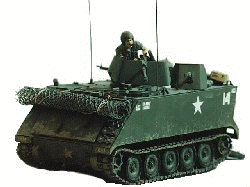
U.S. Airborne/Light units would be lucky just to have M113 Gavins with machine guns, much less autocannon...this wasn't always the case...the 82nd Airborne actually had M551 Sheridans and M113 Gavin light tanks in the 3rd Battalion, 73rd Armor until 1997.
VIDEO: How the U.S. Army Airborne should Power Project by Parachute Airdrop
www.combatreform.org/USARMYAIRBORNEpowerprojection.wmv
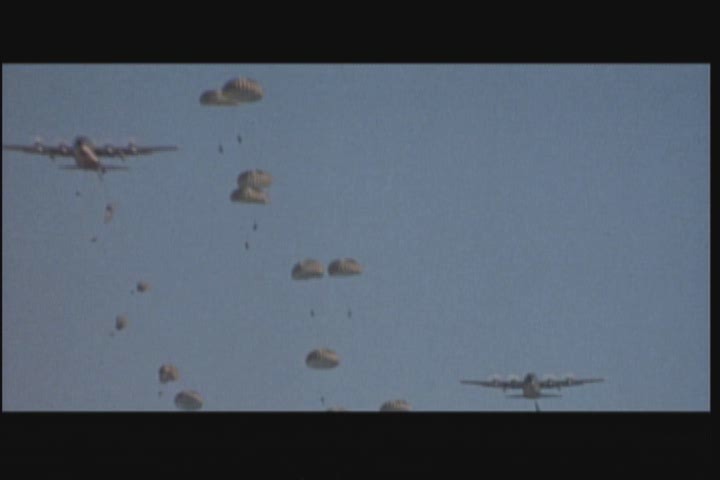
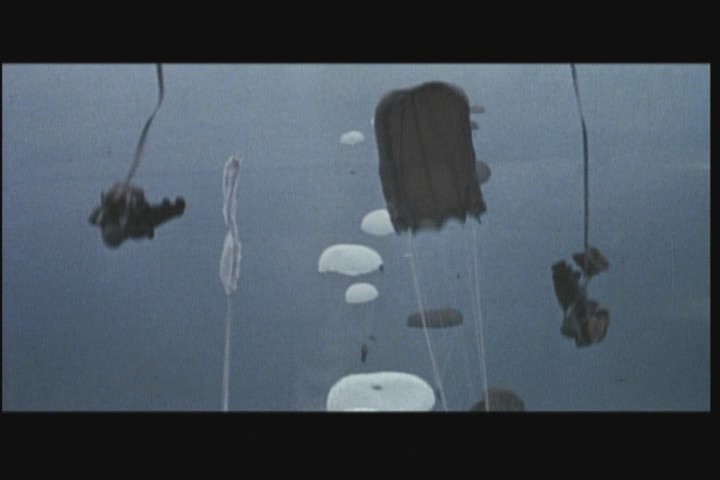
LAPES = Low Altitude Parachute Extraction from 5-10 feet

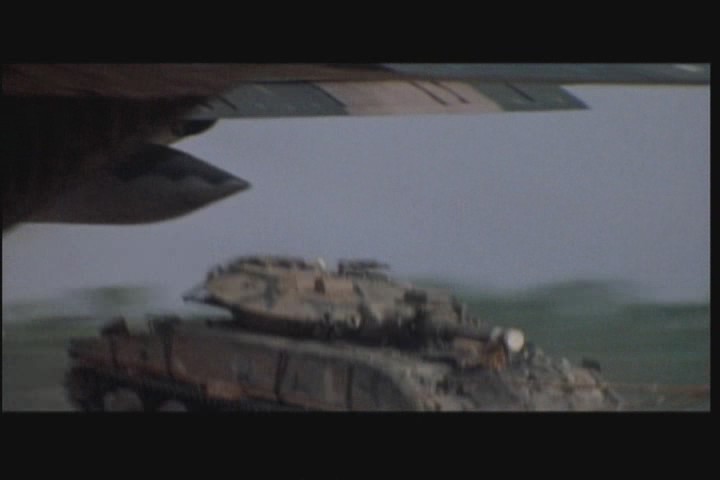
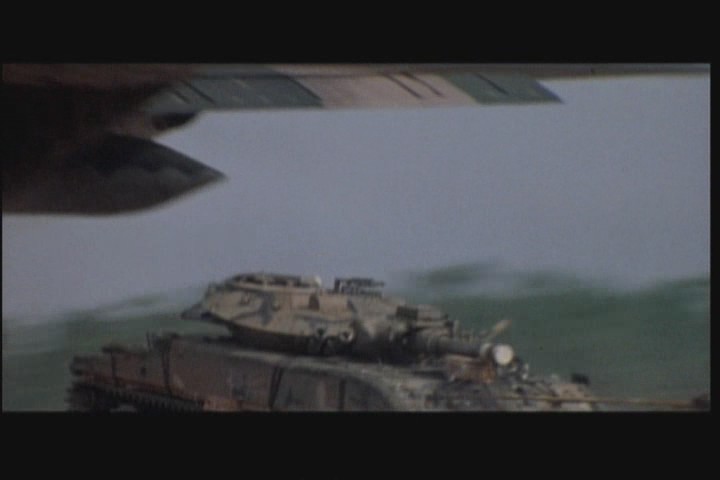
LVAD = Low Velocity Air Drop from 600-1200 feet
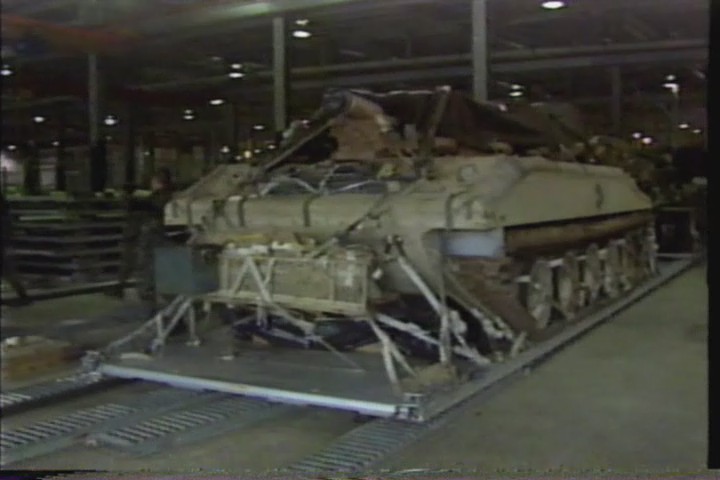
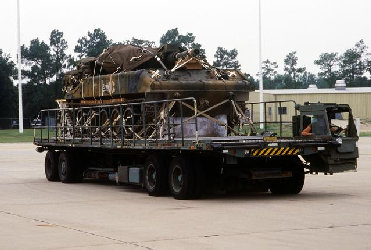
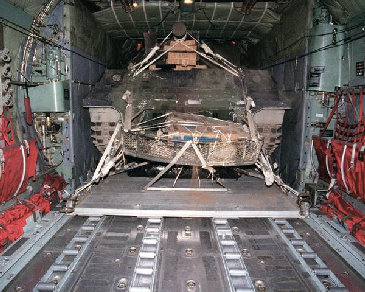

Picture above of C-17 interior with a M551 Sheridan light tank and HMMWV truck rigged for low velocity airdrop shows 54 sidewall seats and walkways to the side jump doors are still available; yet Airborne still inefficiently loads C-17s with either all people or all equipment, then offers the lame excuse that "they do not have the airlift" to bring tracked armored vehicles to the fight below. How convenient. Current "can't-do" U.S. Airborne is a disgrace to the CAN-DO spirit of all the Paratroopers who have gone before us and created the American Airborne in the first place.
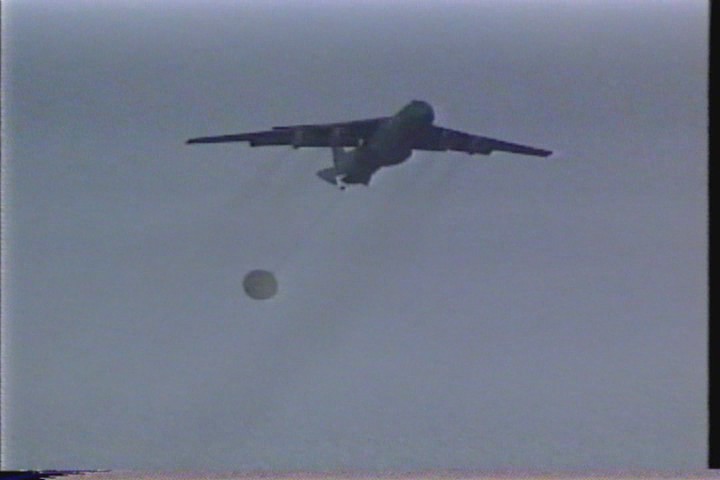
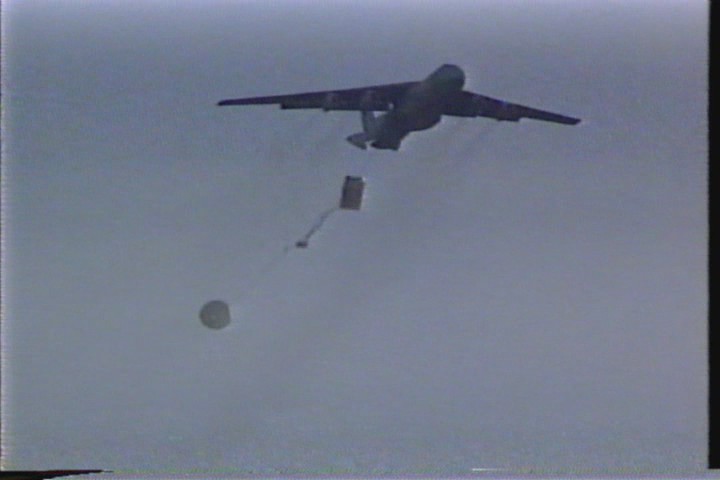
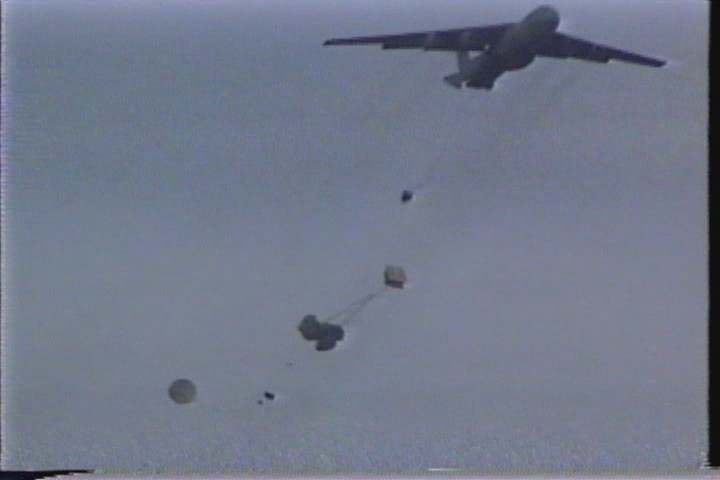
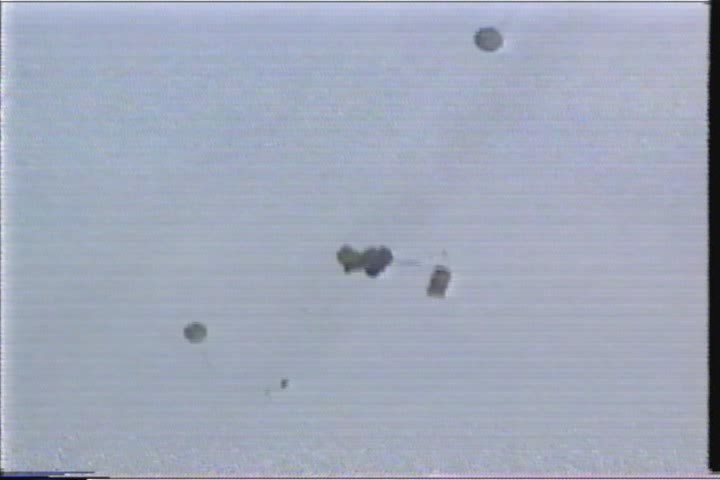
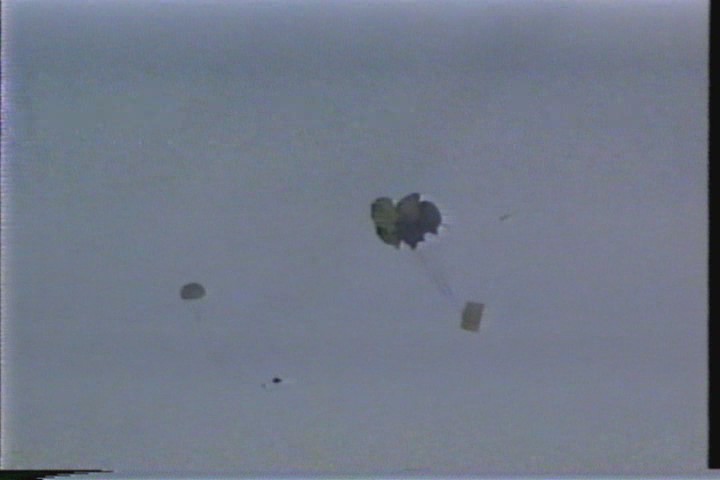
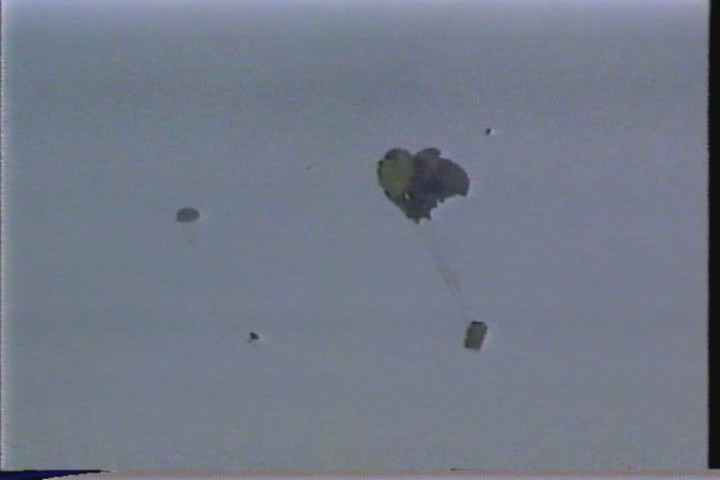
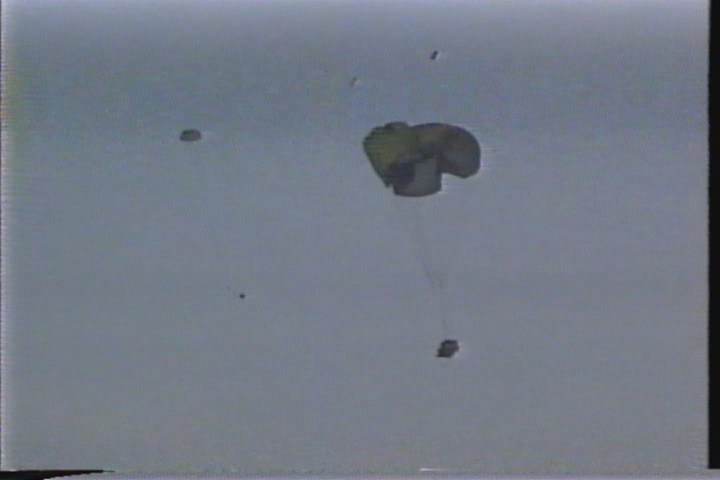
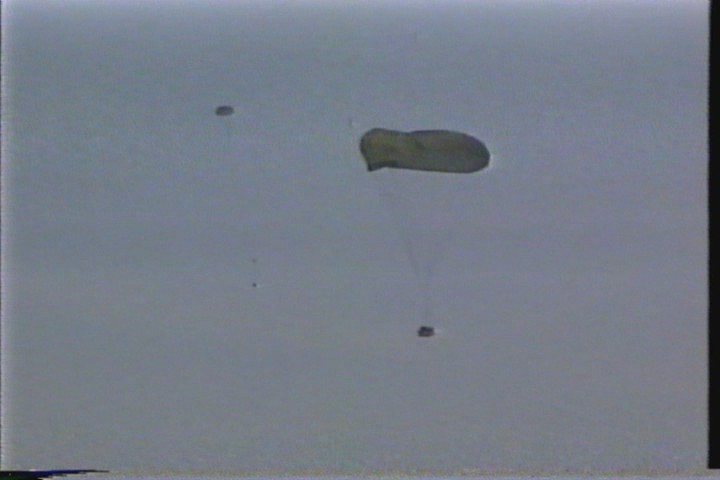
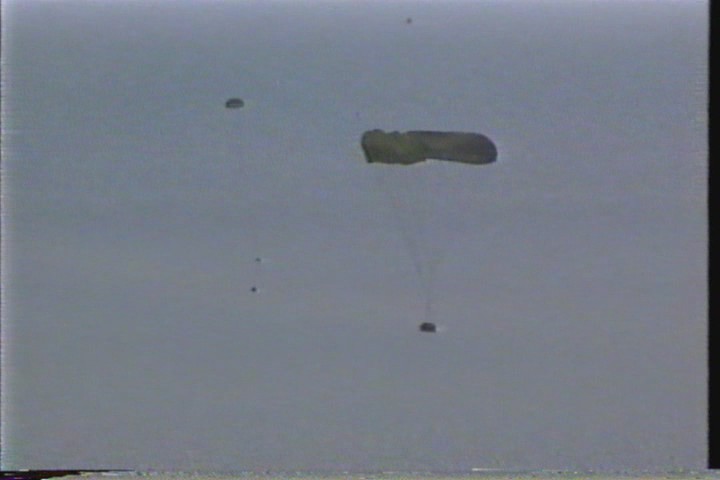
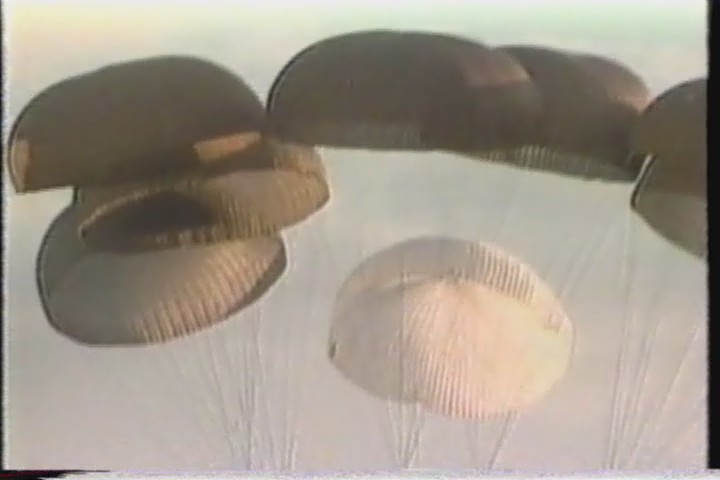
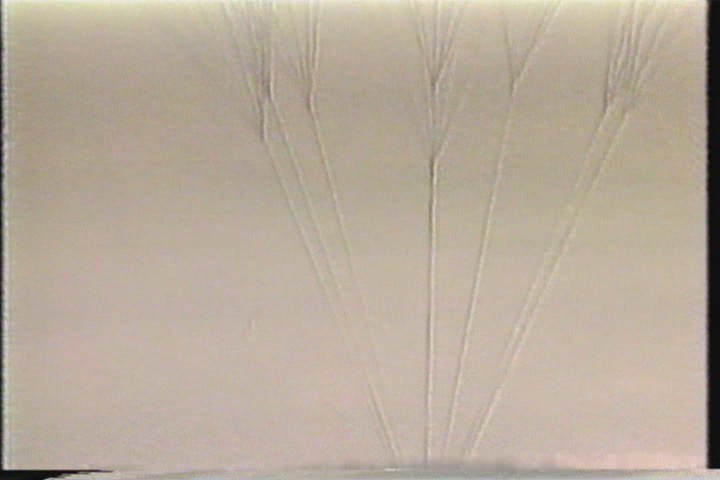
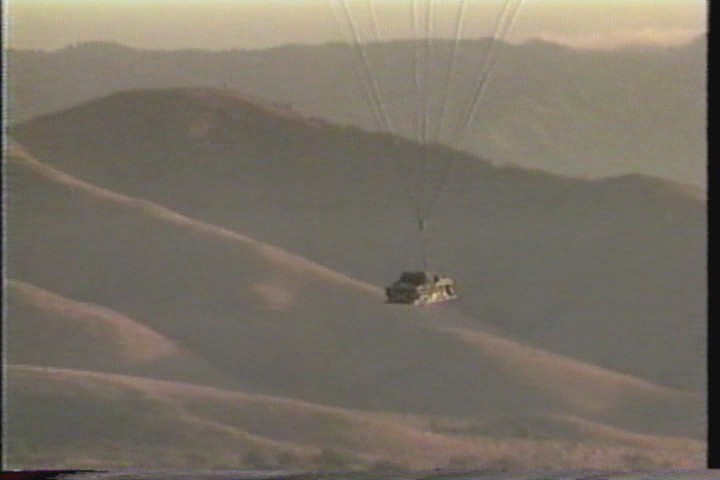
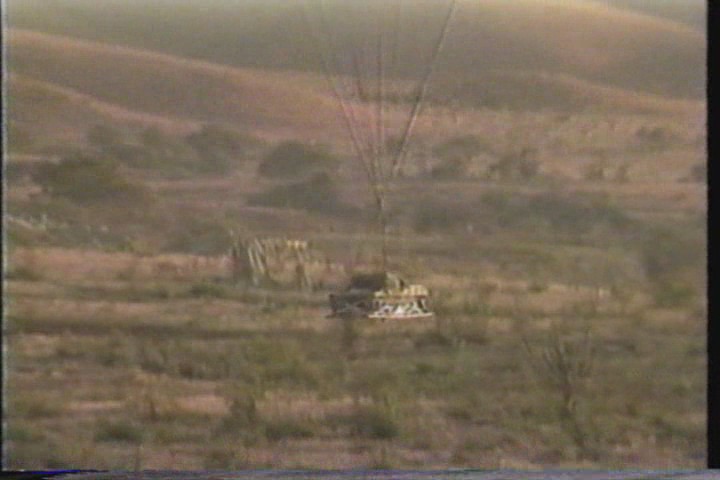
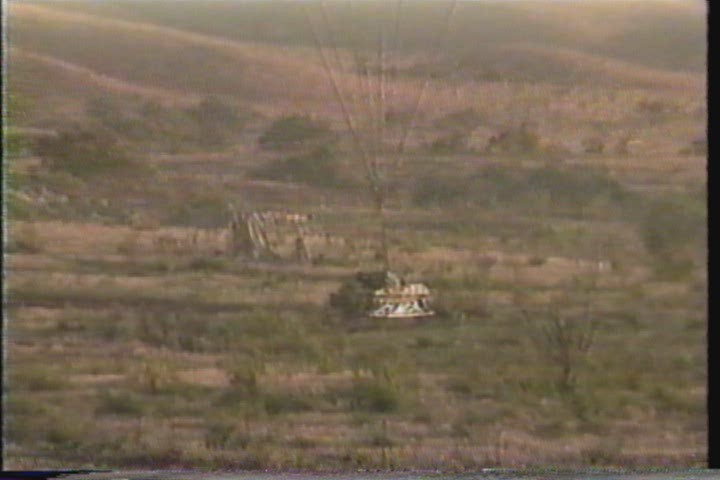
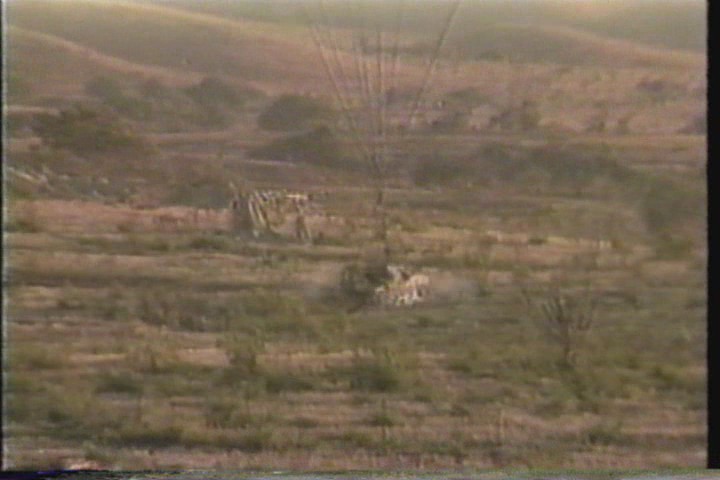
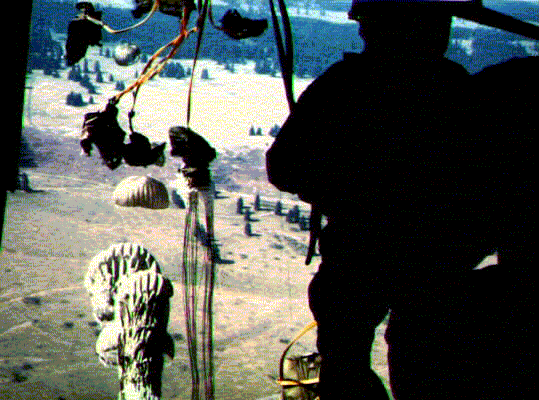


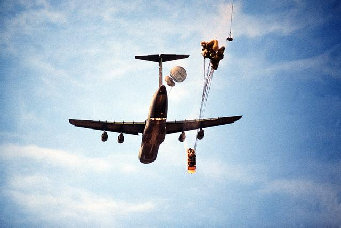
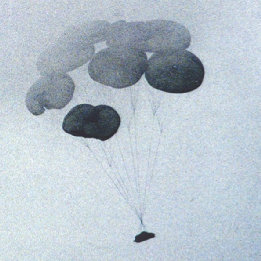

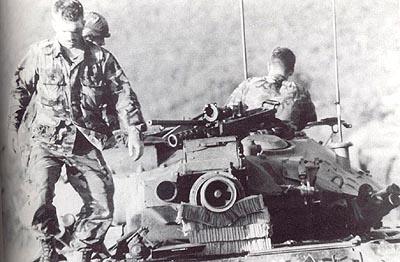
 www.youtube.com/watch?v=BcSwXW49J_I
www.youtube.com/watch?v=BcSwXW49J_I
www.stormingmedia.us/46/4652/A465262.html
Light Infantry, Augmentation, and the M113A3 Armored Personnel Carrier: A Step in the Direction of Versatility
Authors: William K. Sutey; ARMY COMMAND AND GENERAL STAFF COLL FORT LEAVENWORTH KS SCHOOL OF ADVANCED MILITARY STUDIES
Abstract: This paper examines a proposal to create M113 Armored Personnel Carrier support units (vehicles, drivers, and service support) to provide protected tactical mobility augmentation for light infantry forces. Light infantry divisions are a crucial component of the Army's force structure to meet potential challenges across the spectrum of conflict. They lack, however, the tactical mobility assets to be of any utility beyond the lowest intensity conflicts in the most restrictive terrain. This limitation constrains the Army's versatility as a whole. This monograph first considers tactical mobility as an element of combat power, establishes an analytical framework for the analysis of the infantry mobility systems, and considers the heavily armed and mobile nature of potential world threats. Next, the light infantry concept is explored focusing on the intended purposes for which light infantry divisions were formed and an evaluation of their actual tactical mobility capabilities. Following this examination of today's light infantry, this paper looks at the Pentomic Era in the late 1950's in which M59 armored personnel carrier companies were consolidated at division level and sent vehicles as attachments to augment the tactical mobility of infantry units. Finally, this monograph conceptually outlines a proposal to use M113 APC's to augment deployed light forces and evaluates how this might enhance their utility. Although there are philosophical objections to, and practical problems with, augmenting light infantry with armored personnel carriers, this paper concludes that today's demands for maximizing the versatility of all forces merits reexamination of such a concept.
To read Sutey's study: It Maneuvers a Battalion
BY AIR: Russian Airborne VDV has BMD-4 tracked armor with 100mm guns
 www.youtube.com/watch?v=ZuUN7IVPjpQ&NR=1
www.youtube.com/watch?v=ZuUN7IVPjpQ&NR=1
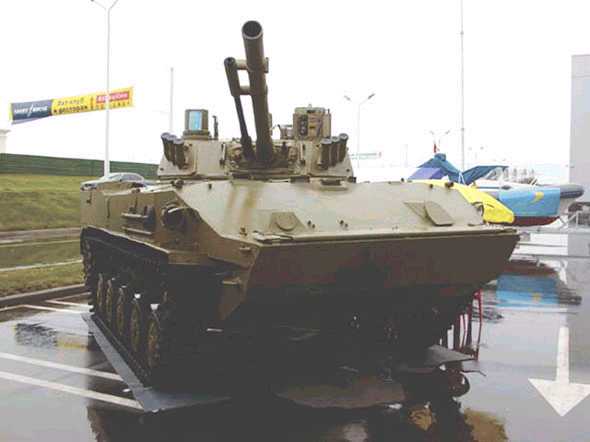
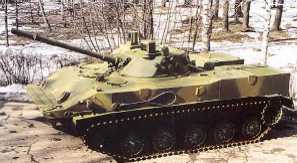
BMD-4 uses an improved version of the powerful 100mm main gun, 30mm autocannon, 7.62mm medium machine gun turret first fielded with the BMD-3M shown above
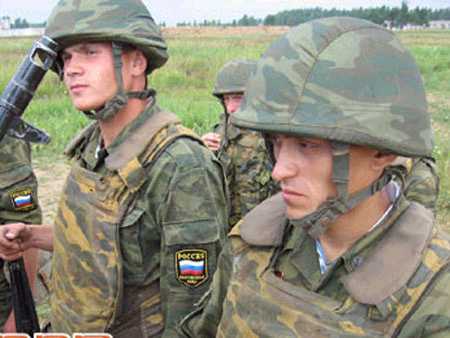
The Russian Paratroop crew of the BMD-4 ride INSIDE it during airdrop to save time de-rigging and getting it in action on the ground. Dismount paratroop infantry squad jumps out in FRONT of the IL-76 jet's engines SIMULTANEOUSLY with their mother BMD-4 exiting the rear ramp in order to land closer together. Their D-8 parachutes deploy only a stabilizer chute upon aircraft exit in order to jump in front of jet engine; U.S. old-fashioned static line and deployment bags leave a tangled mess streaming outside the plane as paratroopers exit.
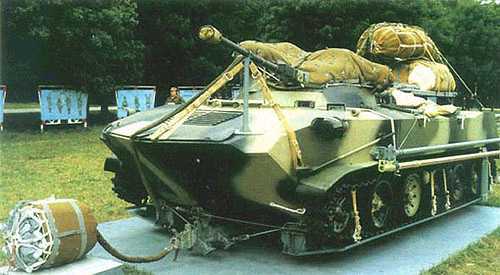
Note the minimalist approach to getting the BMD-4 to slide out the floor of cargo planes; runners under the tracks conserves weight and payload of the plane compared to the U.S. Type V airdrop platforms that each take up about 2, 000 pounds of payload and are a pain to recover on the drop zone for re-use.

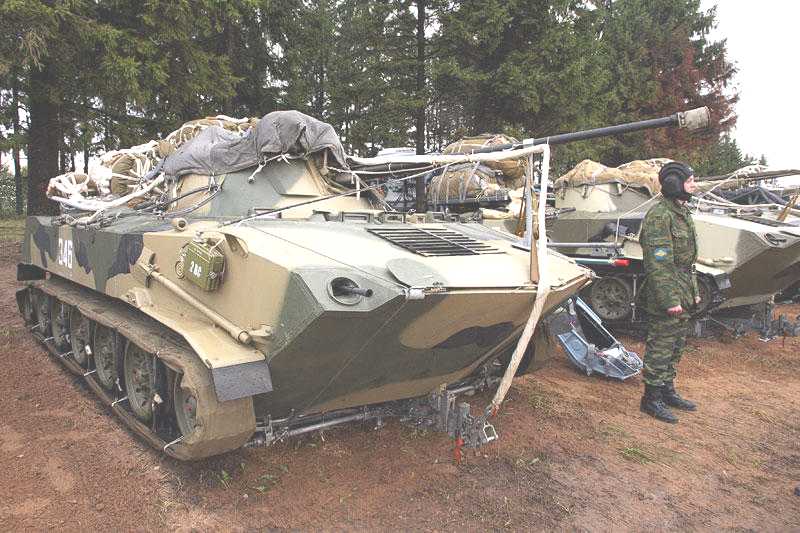
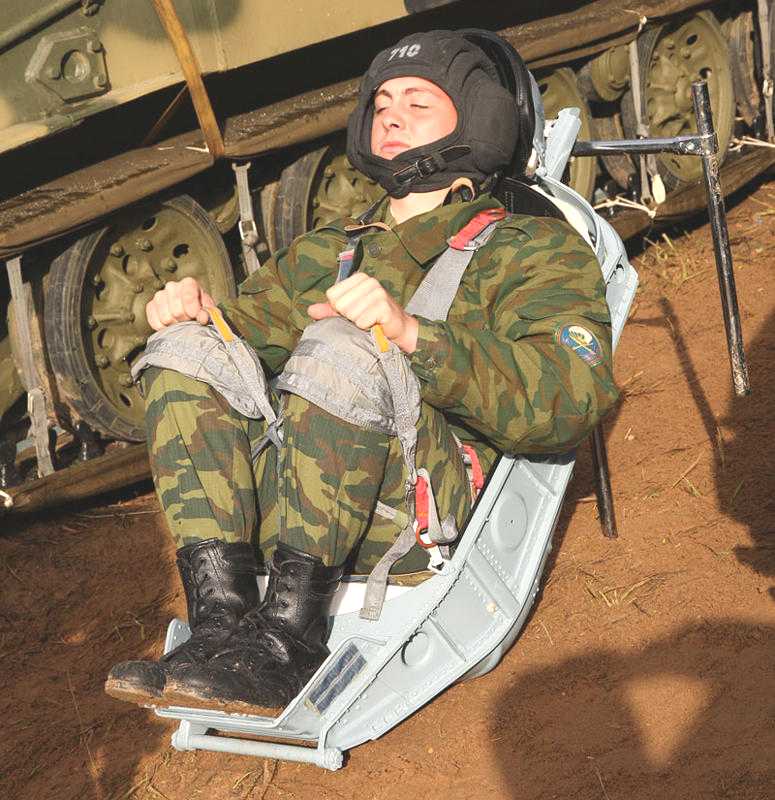
YES, amazing as it seems, the Russians have Paratroopers INSIDE their light tanks during parachute drops to speed their de-rigging and being placed into action. This Paratrooper demonstrates the special cushioned seat he would use. The Russians are light years ahead of us.
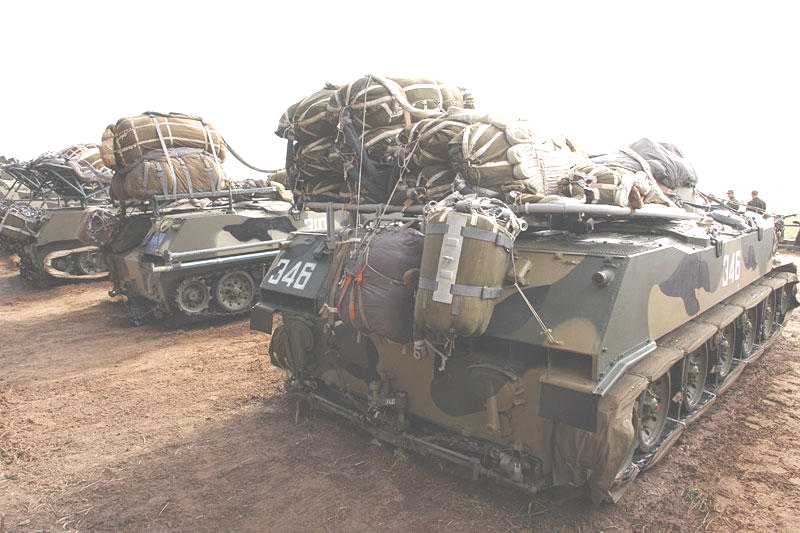
Note the minimalist Russian approach to getting vehicles to slide off rear ramps: two runners under each tracks so there is no large flat Type V airdrop platform underneath that must be recovered. Cargo parachutes are on top of the light tank not on a platform.

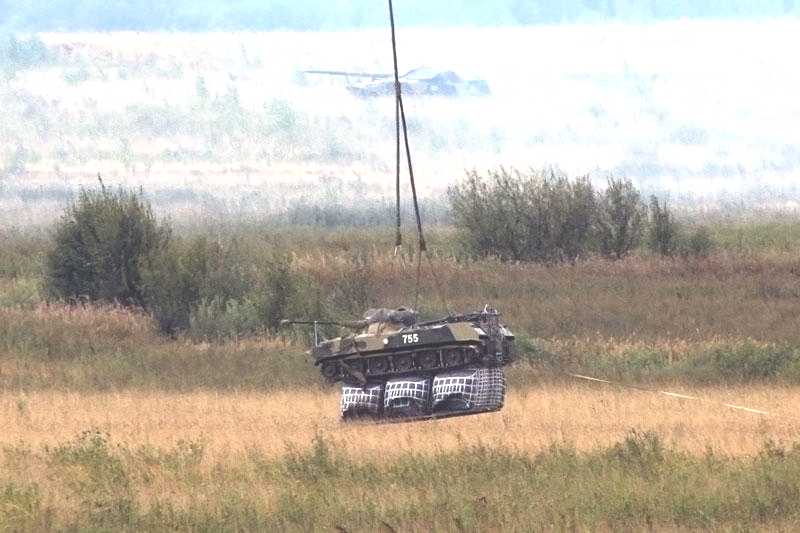

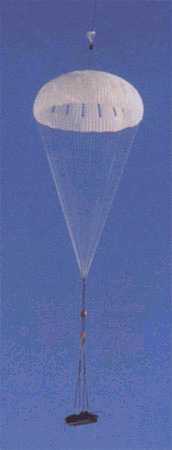
The BMD-4s under canopy--some with air bags for cushioning!
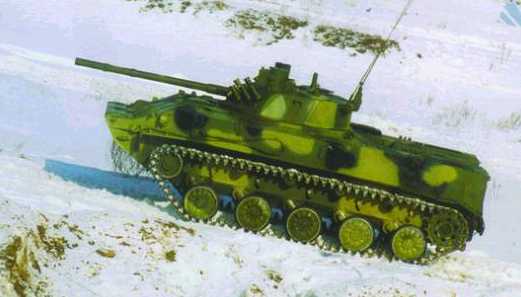
The BMD-4 has low ground pressure cross-country mobility like the M113 Gavin first pioneered
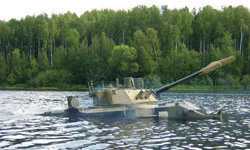
The BMD-4 has waterjets to swim in the ocean like the M113 "AmphiGavin" with the ARIS GATOR kit
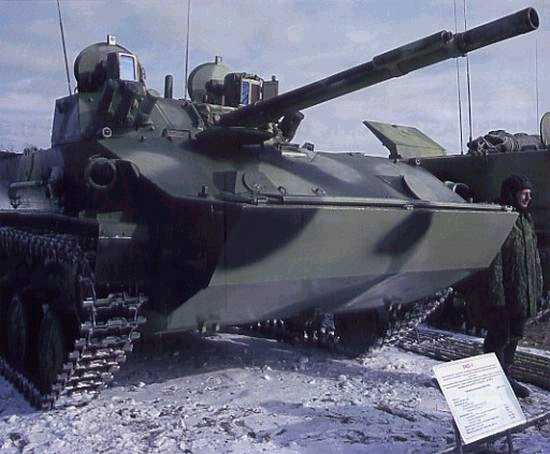
The BMD-4 has stabilized optics and gun mounts to shoot-on-the-move; a capability our M113 Gavins could have if they were OWNED BY LIGHT/AIRBORNE/AIR ASSAULT UNITS and improved on by ownership; ad hoc temporary load of M113s to units will not result in their full potential being achieved...and could result in the enemy killing a lot of Americans in battle because we chose to be inferior.
http://en.rian.ru/russia/20060616/49637256.html
New combat vehicles on way to Russian airborne units19:24 | 16/ 06/ 2006
MOSCOW, June 16 (RIA Novosti) - Russia's Airborne Forces will receive the first batch of a new armored airborne combat vehicle on June 21, an army spokesman said Friday.
The BMD-4 airborne combat vehicle is amphibious, light and well armed. Like its predecessor, BMD-3, it has a hull made of special alloys and a turret, but features many modifications. In addition, it is equipped with a 100-mm gun.
"The start of deliveries of the BMD-4 marks a new era in the development of the Airborne Forces and will significantly raise the combat strength of Russia's most mobile units," Alexander Cherednik said.
The vehicle will be shown off during an exercise on June 26 that senior officers are expected to attend.
BY SEA: BMD-4s (as well as 2S5 Sprut-D 125mm gun light tanks) can SWIM, too
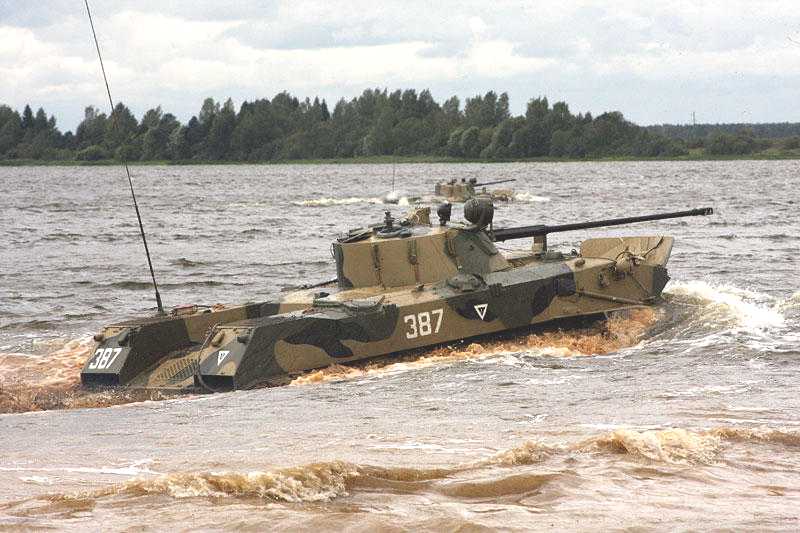
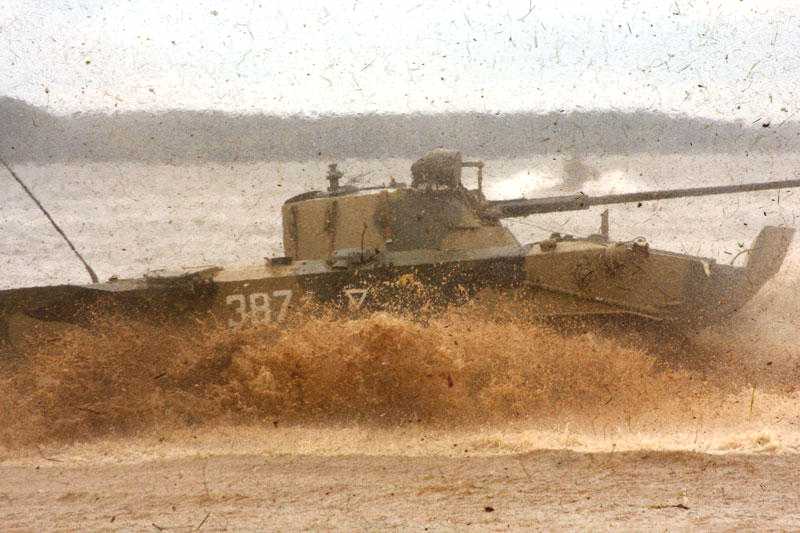
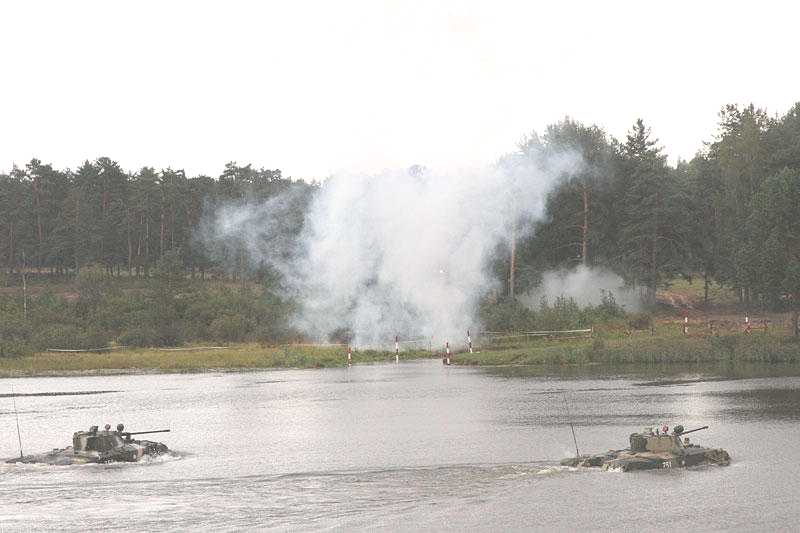
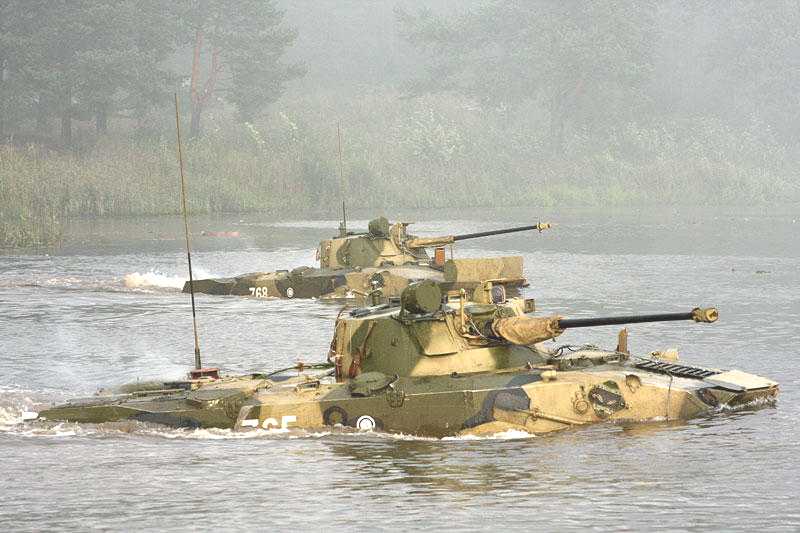
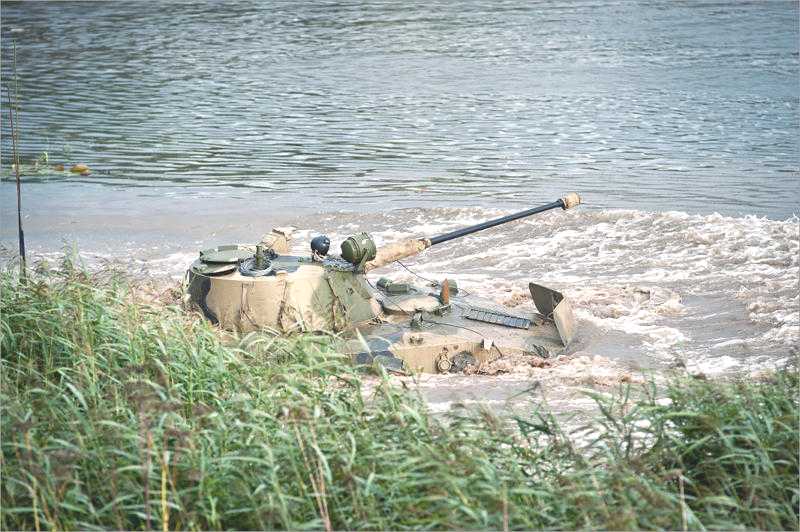
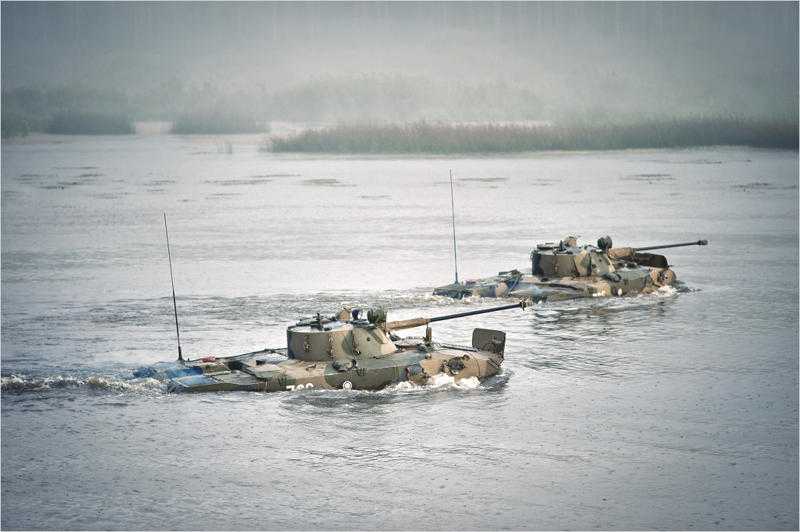
2S5 Sprut-D 125mm Gun Light Tank
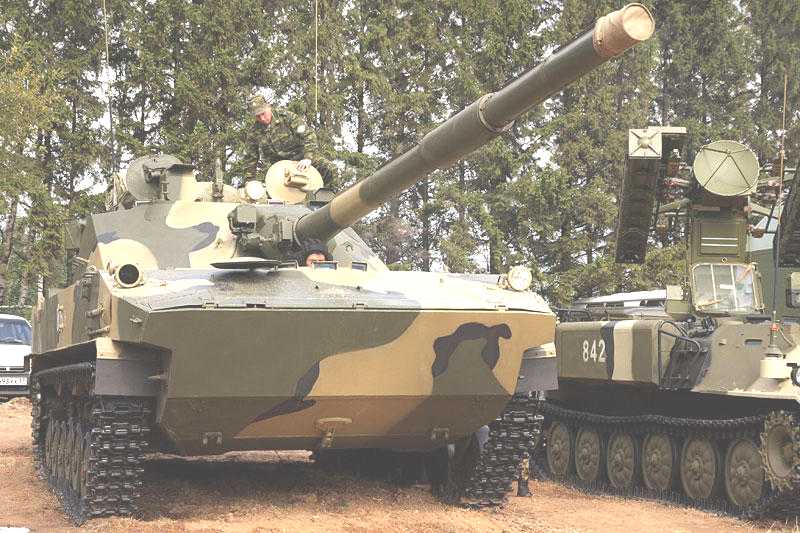
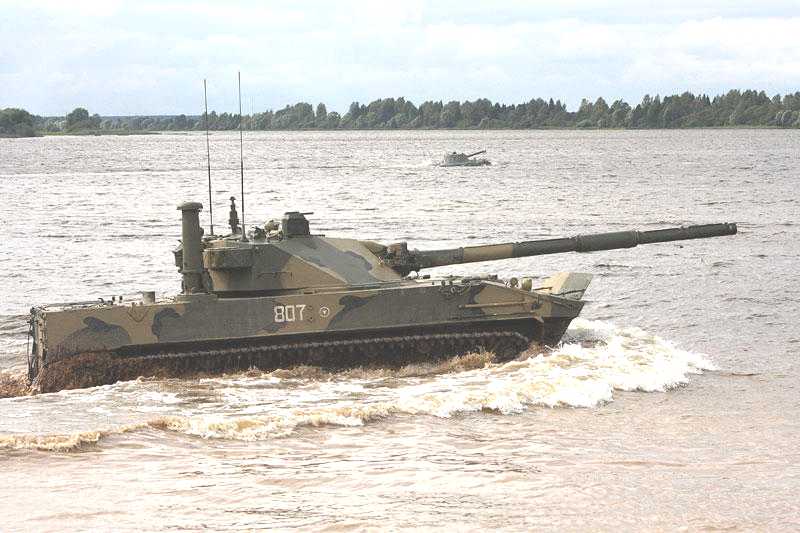
Legendary Tanker Ralph Zumbro asks the question:
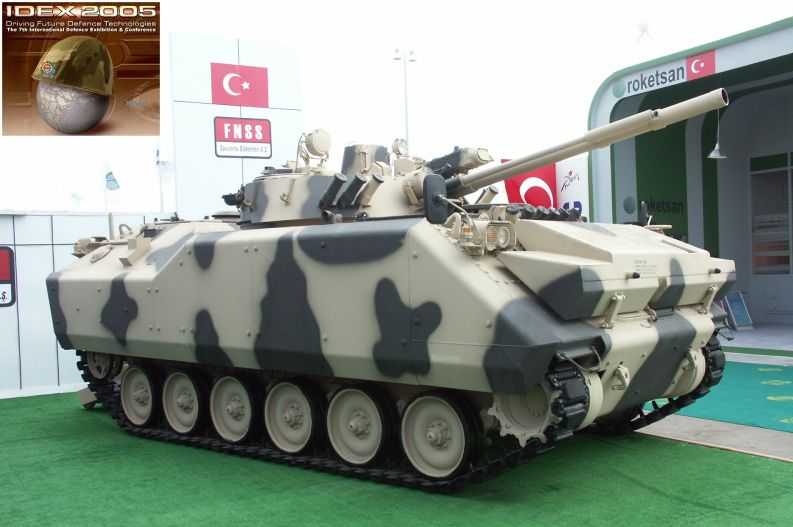
Nurol of Turkey has a M113-based AIFV with a BMD-3 type turret
"Gents;
That turret sounds like a development of the BMP-3 turret which at lease one ex Russian/Soviet country has adapted to the M-113. Maybe we ought to just BUY them and adapt them to our vehicle????"Ralph
MEN AND MACHINES? OR MEN WITHOUT MACHINES? OR MACHINES WITHOUT MEN?
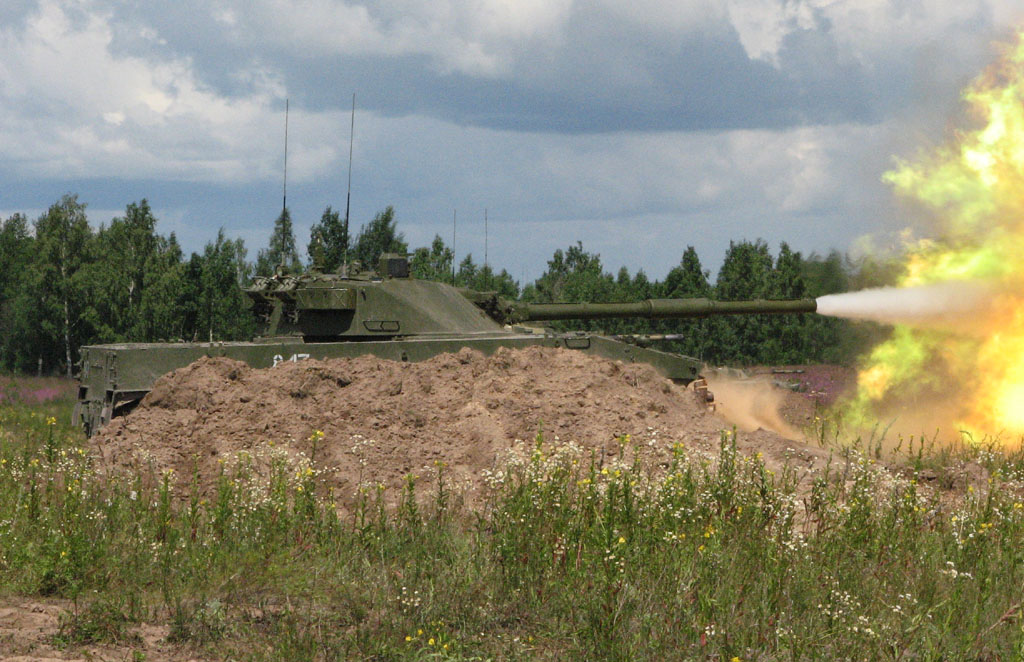
The quote by Col. Boyd comes to mind, "Machines don't fight wars, men fight wars, and they think!"
Emery Nelson writes:
I saw first hand in an Armor Battalion what the overemphasis on machines could do. We used to Aggress against them all the time and we would just kick their asses all over the FRG. We would do things like steel their antenna's at night and then attack them. Their excuses were they wouldn't get caught like that in war time,,,, but you know that's BS. All there time spent on gunnery tables would only help them on the range, not on the Battlefield. The Gunnery Tables were a joke, meant to fight one tank at a time on a fixed (and known after your first run) road.I got this quote from Inside the Third Reich by Albert Speer. Just something I've been thinking about. It has to do with Hitler insisting on heavier armor and a bigger gun for tanks. The Army and the armaments Industry wanted to make a smaller lighter tank with more mobility. The regions of Italy they're talking about is very mountainous just like Kosovo. Speer writes:
"In October I tried once more to win Hitler over to the idea of light tanks: on the southwestern front (Italy) reports on the cross-country mobility of the Sherman have been very favorable. The Sherman climbs mountains which our tank experts consider inaccessible to tanks. One great advantage is that the Sherman has a very powerful motor in proportion to its weight. Its cross-country mobility on level ground (in the Po Valley) is, as the Twenty-sixth Armored Division reports, definitely superior to that of our tanks. Everyone involved in tank warfare is impatiently waiting for lighter and therefore more maneuverable tanks which, simply by having superior guns, will assure the necessary fighting power (page 542)."
All tankers like to talk about the superiority of the Tiger Tank.
This is a quote from the same book on what happened the first time the Tigers made contact with the Russians.
"In the early summer of 1942 he [Hitler] personally ordered the first six of our Tiger Tanks to be thrown into battle. As always, when a new weapon was ready, he expected it to turn the tide of battle. He regaled us with vivid descriptions of how the Soviet 7.7 Centimeter anti-tank guns, which penetrated our Panzer IV front armor even at sizable distances, would fire shot after shot in vain, and how finally the Tiger would roll over the antitank gun nests. His staff demonstrated that the terrain he had chosen made tactical deployment of the tanks impossible because of the marshy subsurface on both sides of the road. Hitler dismissed these objections, not sharply, but with a superior air. And so the first Tiger assault started. Everybody was tensely awaiting the results, and I was rather anxious, wondering whether all would go well technically. There was no opportunity for a dress rehearsal. The Russians calmly let the tanks roll past an antitank gun position, then fire direct hits at the first and last Tiger. The remaining four thereupon could move neither forward nor backward, nor could they take evasive action to the side because of the swamps, and soon they were also finished off (240)."
A noted British historian writes:
"OK - in my view with just one exception (the Gulf) there is no evidence for an Army with a few good tanks winning against an army with lots of mediocre ones. Thus 50,000 Shermans and 70,000 T-34s are bound to win over a handful, just over 1,300 Tiger Is and about 500 Tiger 2s. Look when we concentrated our rubbish in the desert we even beat Rommel in some battles. The same was true of the Cold War; nothing NATO could have done in Germany, never mind how good the tanks, could have prevented the Russians from rolling west, there were simply too many of them and not enough of us, and they don't stop just because they take casualties.
I'm by no means convinced about air power against tanks, at least not in WWII, but if you check the book 'Tiger A British View' there is an account of how the Germans lost all but two Tigers from a battalion through breakdown and stupidity. They lost one other to U.S. Artillery and got one back to Rome in one piece. I suspect that was typical but also see Tom Jentz on the Tiger (his series of books for Schiffer).
From what I am hearing the U.S. Army has sounded the death knell of the 'MBT', and probably rightly so. There is also said to be talk of replacing the gas turbines with diesels which would make sense. The trouble is that both British and American governments got a lot of stick from veterans and the public after the war for sending men out to fight in inferior tanks. This has a kind of knock-on effect and both countries have gone for the biggest gun and best armour, it is a typical reaction. Note though that the Germans, who in a sense lost because their armour was too good but too few, gave priority post-war to high mobility instead of armour in Leopard and have probably got the balance just about right. The Russians, who got the balance right as long ago as 1941 stuck to it in post-war years until they were seduced by technology with T-64, T-72 et al.
Please bear in mind these are merely the ravings of a civilian with a bit of interest in history, no professional qualifications, no service background; lots of important people would disagree with me. Just instinct on my part, like the one that says if you want to see intelligence applied to tank design (and APC design come to that) watch the Israelis."
In fact, years later in the Korean War (KW), the M4 "Easy-Eight" Sherman proved itself more mobile and battle-ready than its newer, heavier M26 Pershing tank! The Superb Korean war weapons/history web site states:
"At the outset of the KW, to its tremendous disadvantage, the U.S. had no tank in the Far East capable of engaging the obsolescent T34/85. The light M24, primarily a reconnaissance vehicle with thin armor plate and a light 75mm cannon, was augmented during August and September, 1950, with various medium tanks such as the M26 Pershing, mounting a 90mm gun. Gradually the old M4A3 "Sherman IV", the WWII workhorse fitted with a new high-velocity 76.2mm gun, became the principle U.S. battle tank. It had a high silhouette, light armor, and an inadequate gun, but it was more maneuverable in Korean terrain than more modern tanks, such as the British Centurian III. Failure to produce a good main battle tank, concentrating instead on anti-tank weapons, was one of the Army's principal weaknesses during the KW."
The web master Bert Kortegaard elaborates;
"RE: Armor in the 2d ID
Posted by Bert
Friday, July 23, 1999 at 23:42:20Message:
72d Medium Tank Battalion, 2d ID, landed at Pusan on 8/16/50, about at the same time about 5 other Medium Tank Battalions landed. The tank distribution among all battalions was initially about equally between M26 Pershings, and M4A3E8 Shermans.I don't know the ratio for the 72d -- they did use Pershings at Agok (8/31) -- but they seemed to use only Shermans at Heartbreak Ridge (10/51).
The 73d was originally an M26 battalion, but used Shermans at Baldy and Porkchop. In fact, with its newer high-velocity 76mm gun, the Sherman gradually became the main battle tank used by all our armor forces. High-silhouette, light armor and with the inadequate gun, Easy-8 was nevertheless more maneuverable than our more modern tanks, and better suited to the terrain."
Sounds like 'Deja-vu all over again' today with the Army cancelling the M8 Armored Gun System light tank and buying Javelin anti-tank missiles instead when we need BOTH.
A light infantry fire-support tank with a good high velocity gun would have saved many lives in Korea. Even our AT weapons were never really good enough. If we fought in Korea tomorrow morning we would not be able to deploy our heavy defensive M1s at the point of infantry attacks. We would be forced to sit and wait for the NKA with very little room to maneuver making them highly vulnerable. In that situation old fashion AT 'guns' (they could fire the 120mm tank round) would be just as valuable (maybe more so because of it's lower silhouette and the ability of the crew to dig it in) and one hell of a lot cheaper. As urbanized as the border is, the need for an assault gun and light tank with great mobility is ten times more important than an heavy armored 'mastodon' designed to be invincible to tank gun impacts while dueling other tanks that could be attacked at our enemy's leisure.
ORPHANS?
Vietnam combat vet and noted author Ralph Zumbro writes:
When I pulled up to any infantry platoon in RVN, I was usually asked, "what's yer loiter time." These people were used to jets and choppers that could only
stay around for a few minutes. When I told them, "about two WEEKS," they literally shorted out.
I say again, THE TANK'S JOB IS INFANTRY SUPPORT, Not killing other tanks. The only way a war gets won, is to put an 18 year old kid with a bayoneted rifle in the enemy's TOC. Any tank that cannot support the infantry once the opposing tanks are taken care of, does not contribute its fair share to the battle. Just like a fighter plane armed with missiles cannot strafe.....Some of the best air support we got was from Vietnamese pilots driving old SkyRaiders....Them little sucker got down between the trees.
I have had infantry riding my fenders and have had my back scratched by cannister rounds from my platoon SGT and have SEEN an NVA cold-cocked by the muzzle of a 90MM cannon. THAT is wot a tank does for a living.
The Sherman got a bad rep for not being able to shoot down a Tiger.....But the sucker WON the WAR, and is still fighting in odd corners of the world... The
Tiger and Panther are only museum pieces. Get a hold of an MS called "a bigger hammer" by LTC Alphin, from the Armor School Library, at Ft Knox....Ask for X. The Ms has all the ammo usage and combat vignettes needed to make the point".
Zumbro"
"The tank's job is to cross trenches, smash bunkers, and kill grunts. PERIOD. Any design that can kill only other tanks is severely limited. The end result is that once all the tank battles are over, the killer tanks cannot break bunkers and machine gun the **** outa the opposing infantry. Not only that, check the endurance of any heavy gun, turbine driven vehicle. They can't stay the course. I rode with 3/69 in November 2000 at the NTC and they had to refuel at LEAST once a day, sometimes twice. I also rode with OPFOR and they went the whole cycle on one, repeat ONE, refuel.
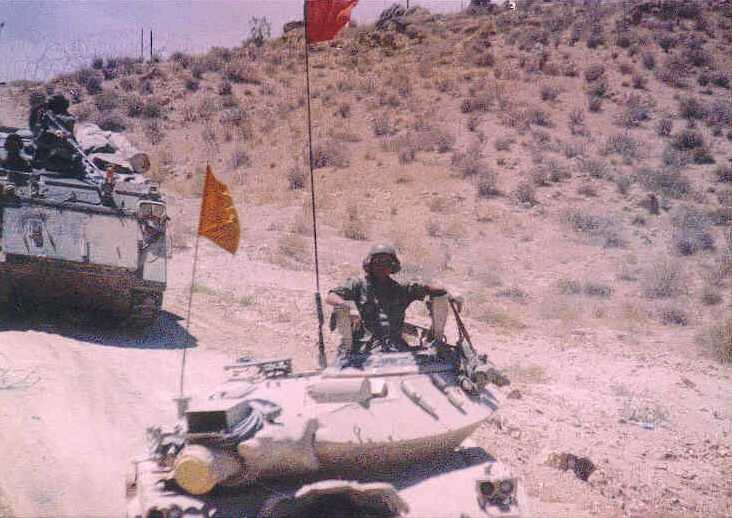
Read Zumbro's excellent common-sense article calling on the Army to heed the call for infantry fire support, Cavalry tanks:
The entire purpose of the light tank or "Assault Gun" is to be agile enough to "be there" to give direct fire support heavier than what the infantry can carry on its backs. If 70-ton "Land Mastadons" [heavy, defensive tanks designed to destroy other tanks in a WWIII doomsday scenario] can't get to the fight, we lose by default. Better is a light or medium tank that can GET THERE with a 90-105mm gun than a 120mm gun Heavy tank akin to the German Tiger tank and only more mobile via excessive force and fuel cost. Their second mission is to kill other enemy tanks when encountered---by main gun/missile attack using terrain agile ambushing. Why the U.S. Army doesn't have light tanks with big guns today is because WITHOUT A CAVALRY BRANCH there is a "feast or famine" cleavage in mindset in the existing factions part of Infantry branch wants to only fight "light pure" on foot or go to the other extreme of taking forever to deploy so there is no surprise and the enemy has dug in or moved via "Mech heavy", not accepting the desirability of something in-between. Then there is the Armor Branch community, in love 90% of the time with tank-on-tank duels and only with a passing interest in Blitzkrieg operational maneuvers into the enemy's rear to collapse him totally from within by dislocating his lines of communication. They see themselves as TANK DESTROYERS. Since Armor Branch doesn't want to fight other Armor at any perceived disadvantage, so the light tank---what should be in a Cavalry Branch or Sapper tank corps to support infantry operations---is discarded just like the M551 Sheridan being retired to NTC as a moving armor recognition aid and the M8 Buford-Ridgway Armored Gun System is cancelled. Few voices heard in protest. That's because there are no Cavalrymen in the U.S. Army today.
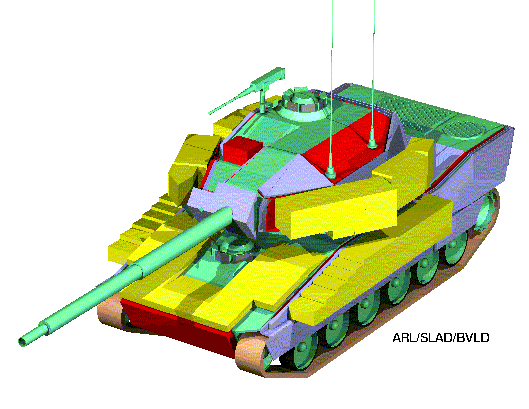
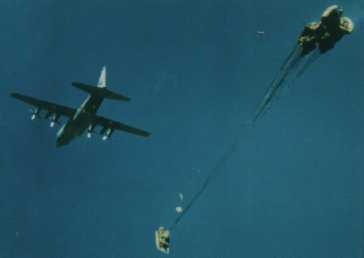
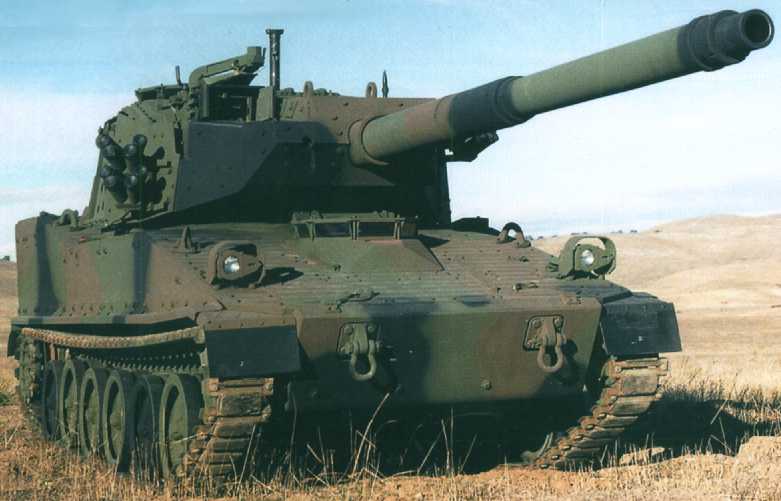
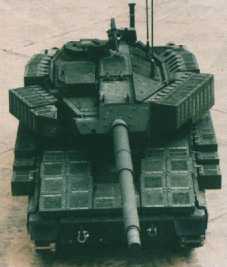
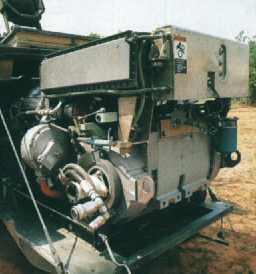
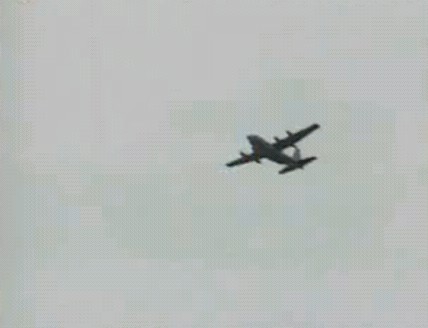
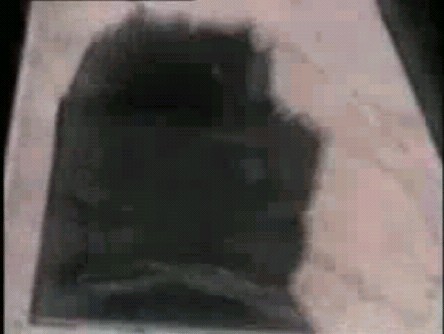
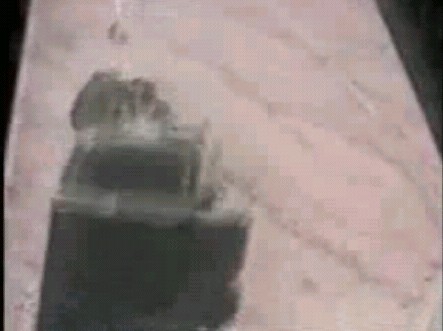
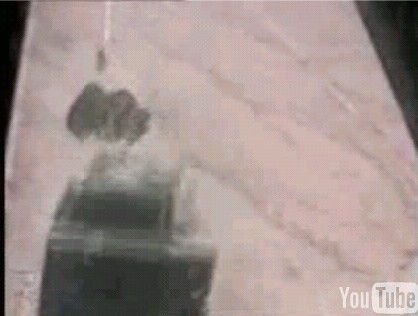
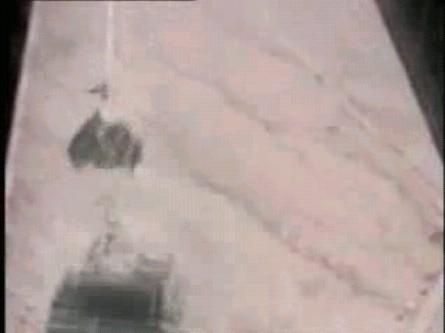

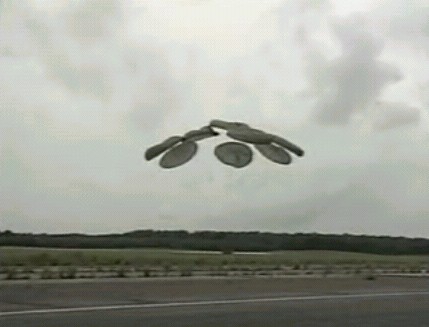
Noted best-selling military techno-thriller author, Tom Clancy writes:
In his book, Airborne, page 213, discussing the M8 Armored Gun System (AGS):
"Unfortunately, the need to support the expensive peacekeeping operations in places like Bosnia, Haiti, and Rwanda caused the top leadership of the Army to cancel the AGS program, and reprogram the funds. Frankly, given the small size of the AGS program, this was a bad decision. Unfortunately, without any replacement for the M551, the same Army leaders moved from bad decision-making to outright stupidity when they decided to stand down the 3rd/73 Armored, thus denying the 82nd even the services of 56 thirty-year-old light tanks."
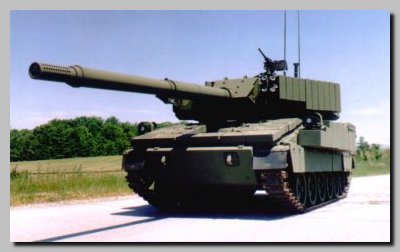
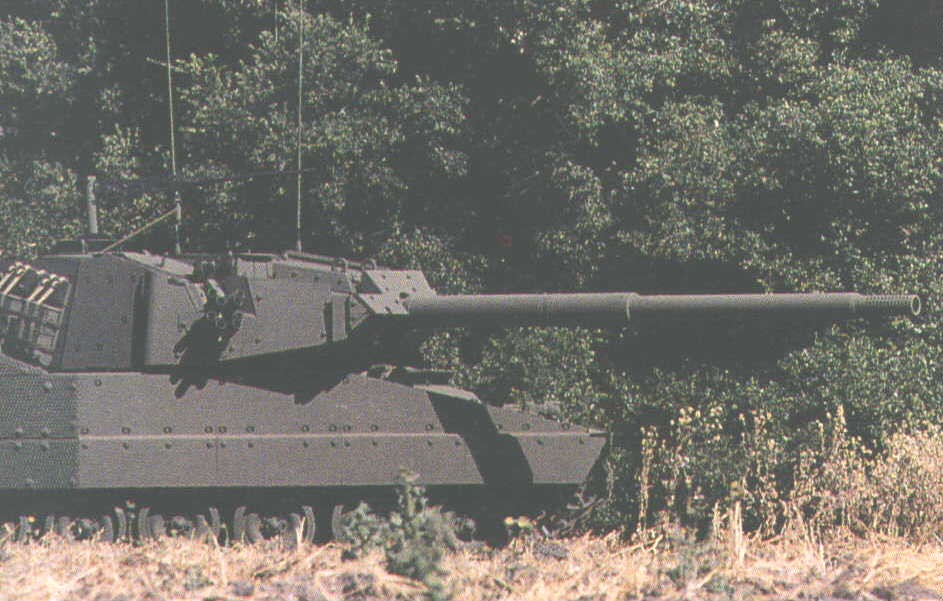
A commentator in a military news group writes about the Armor versus Armor inferiority complex used as an excuse to dismiss light tanks:
For example, let's imagine that we had to fight DESERT STORM (DS) over again, with M8 AGS instead of M1A1 Abrams. One of the results of DS was that a vast majority of our tanks were never hit by any AT weapon at all. Detect your enemy first, fire first, kill first from long-range and he can't even engage you before you kill him, much less penetrate your armor. Except in a few tactical situations, you could have had 120mm guns on unarmored trucks (with good thermal sights) and won the battle, albeit with more casualties from the hits that were taken.
The AGS is armored enough to keep out any non-anti-tank weapon, so you can't get cheap kills against one, and when armored to full fit-out (Modular armor packages) it can absorb a significant amount of AT hits, too, if far from the sort of survivability the Abrams shows.
We know the 105mm gun can kill T-72s (Israeli experience in Lebanon, some shots in DS). The AGS has less ammo on board, but also is lighter and burns less fuel per mile than an Abrams, so overall logistics would have been easier and resupply of ammo would have been proportionally easier to accomplish. We probably would have lost on the order of 100 tanks instead of 10, but that would not have stopped us from winning the war, nor would the casualties involved in that (assume 1 DOA 1 WND per killed tank on the average, for arguments sake--the AGS has a 3 man crew instead of the 4 on the Abrams) have been completely unreasonable in the overall campaign's casualties.
Now, you can't assume that in every tactical situation, superior sensors, weapons range, and tactics and crew skills will be enough to evade return fire. That was not true in all battles in DS, and most future battles are likely to occur in terrain less condusive to such tactical wizardry. However, at least some of the time, light tanks with good crews and sensors and guns can defeat heavier tanks, and the difference in deployability is immense.
For example, the 82nd ABN Division spent a month on the Saudi border deterring Iraqi armored corps with LAW/AT4 rockets, Dragon and TOW ATGMs (latter on HMMWVs) and 56 x M551 Sheridan older-technology light tanks that cannot shoot on-the-move. In that sort of situation, being able to "airfreight" a couple of hundred AGS a day in would have been a godsend. If there had been an attack, the shoot-on-the move AGS would have been more vulnerable than M1's, but much less vulnerable than foot-mobile Airborne infantry in the desert..."
"I'm not sure that light tanks don't make a certain amount of sense in some strategic applications.
An Army field-grade officer stated:
The M1 tank's weight and limited main gun elevation reduce its effectiveness in the urban, mountainous and wet terrain typically found in potential theaters of operation such as Korea. Heavy armor often requires extensive engineer assistance to cross natural and manmade obstacles. For example, it took three days of intense bridging efforts to get M1 tanks across the Sava River in Bosnia. Finally, the heavy division, with limited infantry and helicopters, is seldom tasked for operations other than war because it has difficulty projecting presence beyond road networks or valleys."
"...the U.S. Army has fielded the world's heaviest and most thickly armored tank and infantry fighting vehicle combination: the 70-ton M1 Abrams tank and the 30-ton M2 Bradley Fighting Vehicle. These vehicles are designed almost exclusively for dueling with other armored vehicles. The M1 mounts a massive 120mm high-velocity direct-fire cannon and the M2 Bradley carries a high-velocity 25mm autocannon and direct-fire heavy antitank missiles. All to fight the WWIII massed Soviet medium offensive tank armored hordes in Europe.
Military Review, March-April 1997, Air-Mech Strike: Revolution in Maneuver Warfare by Major Charles A. Jarnot, U.S. Army
"Perfect is the enemy of good enough"
The light tank in the U.S. Army is orphaned with its light infantry... But not in the SMART British Army!

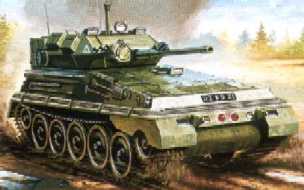
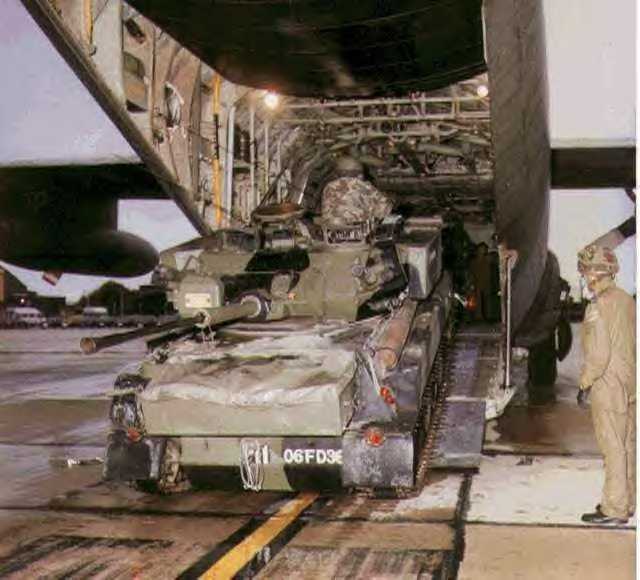
 www.youtube.com/watch?v=_qpN1VECZX4
www.youtube.com/watch?v=_qpN1VECZX4
C-130 and CH-47 helicopter-transportable British Scorpion/Scimitar Light Tank: tracked low-ground pressure, go-anywhere vehicle victor in the Falklands war; defeating Argentine Panhard wheeled armored cars...U.S. Airborne/Light Infantry Divisions have NOTHING like this in their force structure! Read how British light tanks were decisive in the Falklands War in 1982!
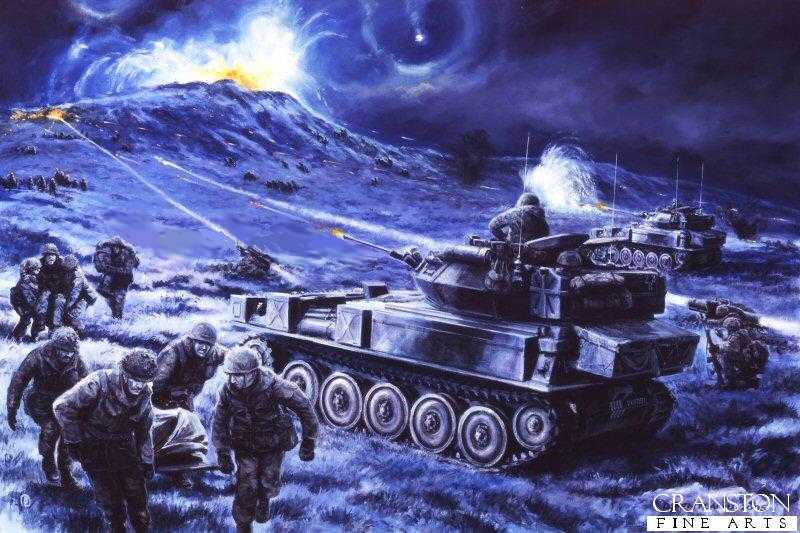
www.directart.co.uk/mall/more.php?ProdID=8517
Battle for Wireless Ridge, Falklands, 13th June 1982 by David Pentland.
Captain Fields 2 Scimitar and 2 Scorpion light tanks of 3 Troop The Blues & Royals along with the Milan ATGM platoon, provide vital covering fire for 2 Paras assault on the North Spur Wireless Ridge (Apple Pie) Following lessons learned at Goose Green additional support was available from artillery, mortars, machine guns and even HMS Ambuscade naval guns. Despite the attack being conducted at night, with frequent snow flurries, and minefields, all the objectives were taken, and at first light the road to Port Stanley lay open and unopposed.
Signed limited edition of 1150 prints. Image size 25 inches x 15 inches (64cm x 38cm) Available from October 2005.
Battle details:
The 2nd Parachute Battalions War in the Falklands
by Captain Daniel T. Head, U.S. Army ARMOR magazine, January 2000

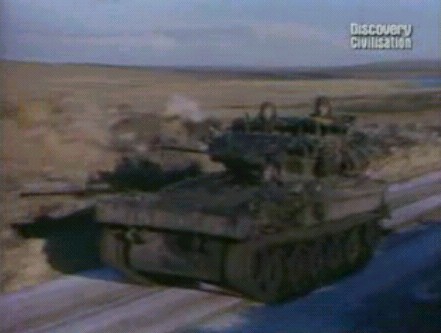
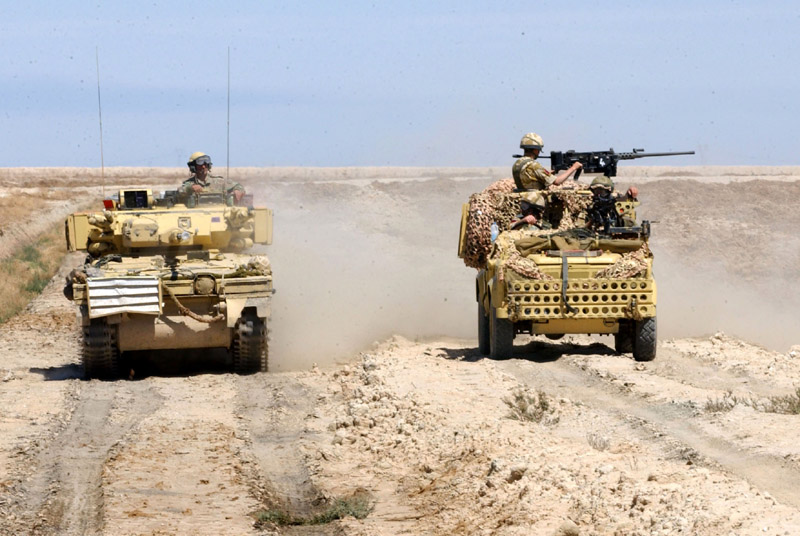
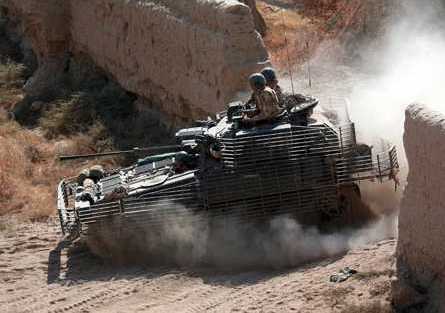
We need to change this because U.S. Army forces must be able to get to anywhere in the world quickly and in large numbers by AIR--for our world moves by the speed of the AIR and requires quick decisions. Again, a Cavalry mission.
These light forces need an air-droppable light tank to give them the advantage over Third World Country light fighters with AKMs, RPGs and "bargain basement", but lethal Russian BMP and T-62 series AFVs. We cannot afford to fight these folks "even", or we will lose like we almost did in Somalia in 1993. We could have had light AFVs and light tanks from the very beginning of the Airborne in the 1940s but we have only our own stupidity to blame and no excuse. Australian Paratroops are clearing East Timor today with air-delivered M113s with MG turrets they got from US, and our Airborne doesn't even have ANY light AFVs in its force structure. Other countries with a fraction of our resources have better equipped Airbornes! They have a Cavalry, we do not.
Next, the world is URBANIZING, and what the light infantry Soldier carries in his hands is not enough explosive power to reduce cities and "reach" bad guys firing behind cover. People fight wars and people live in cities. We still need BIG GUNs for this, since air power, artillery, naval guns cannot reach into cities, and pummeling thugs with $100 RPGs in buildings by $75,000 missiles will make us go broke.
The signatureless, "smart" top-attack Anti-tank Guided Missile (ATGM) and shells have finally arrived and out-ranges the tank main gun. Having heavy armor to defeat a main gun direct hit will not be as important as getting undetected into ATGM FIRING POSITION FIRST. Thus, ABSOLUTE BEST MOBILITY is essential---which means ability to swim, be silenced and small to be "stealthy", and enough armor to keep going if hit by small arms fire, and have the crew survive if hit by an ATGM, not a fuel-guzzling 70-ton heavy, defensive tank monster. A perfect example of light AFVs saving the day was the Tet offensive in 1968, M113s with gunshield protected machine guns were able to rapidly move into Tan Son Nhut airbase to save it from being over-run by several thousand enemy foot Soldiers by overwhelming protected firepower. These same vehicles flushed out the die-hard Viet Cong from Saigon, saving hundreds of American lives that would have been lost in infantry-pure assaults. We had a Cavalry in Vietnam, today we don't.
All of these factors point to an agile light tank/assault gun---the closest things being the "magnificent 7": the Russian BMD-2, BMP-3, American M551, M113A3 with 106mm RR/120mm mortar turret, M8 AGS (though it cannot swim), British Scorpion family and the German Wiesel All described in detail by clicking their links. The future Main Battle [Area] Tank (MBT) should be a medium, (no more than 40 tons) not a heavy tank with some of the features of these agile light tanks.
HOW DID WE WIN WWII, KOREA ANYWAY?
 www.youtube.com/p/9009D1B2E5929BCD
www.youtube.com/p/9009D1B2E5929BCD
In WWII, the U.S. Army was faced with a very lethal opponent in the German Army. The Germans learned at Stalingrad fighting the Soviets, street-by-street, that they needed even more Assault Guns (Sturmgeschutze) AKA "STUGs" mounted on old light tank chassises that could accompany the infantry than they had when they started the war since their Panzers were incredibly busy combating T-34 Russian tanks. When not giving infantry fire support, the low silhouette STUGs were the most successful tank killers, too. This battlefield wisdom was followed in the U.S. by the creation of the Self-Propelled Howitzer (SPH) when Artillery branch realized it had to offer direct-fire support to be helpful in most cases. A current U.S. Army LTC and weapons expert writes in:
"I still think that the 105mm Howitzer on a light tank chassis has merit, and the M113 with a turreted 120mm breach loading mortar could also carry a reasonable HE warhead. Both could be made with autoloading automatic fire capability, too. But wait, this is an old idea. In WW II, the tank battalion had a HHC howitzer section. First, we used the Howitzer Motor Carriage M8, an M5 Stuart tank with an open-topped turret armed with a 75mm howitzer. Later, we had M4 Shermans with 105mm howitzers. Too late for WWII, in Korea, we had the M45, a 105mm howitzer on an M26 Pershing.What we have is in essence an Assault Gun under the control of Field Artillery Branch.Another approach would be to use large diameter (perhaps 18-24 inch), thin walled barrels to project thin skinned cannisters filled with proportionally tremendous volumes of HE filler. The launcher would look something like an MLRS, but with shorter barrels and perhaps twice as many of them. Oops, that sounds like WW I 'Lewis Projectors' used for lobbing gas-filled canisters. Range was about 1 or 2 kms.
Darn, I just can't seem to think of anything that hasn't already been invented, tried, and proven successful."
Terrain Firepower Saturation (TFS) Techniques for Linear and Non-Linear Wars
Once the U.S. Army realized to first saturate the terrain with firepower (TFS) using its SPH Assault Guns and if this were not enough air strikes and naval bombardment, its weak maneuvering infantry could advance and clear-out enemies to establish a "line" on a map. As this line was advanced, eventually the enemy nation-state capital would be over-run, and the war/peace switch would be thrown and victory attained. TFS and linear war was also successful in Korea against the NORth Korean (NORKs) and CHInese COMmunists (CHICOMs) hiding deep in the ground and well-camouflaged--once we obtained the necessary SPH defacto assault guns in addition to lots of light and medium tanks.
 www.youtube.com/watch?v=wWfgoKOazzg
www.youtube.com/watch?v=wWfgoKOazzg
 www.youtube.com/v/nT4pM-Fc_3Y
www.youtube.com/v/nT4pM-Fc_3Y
However, as the bitter lessons of Korea were forgotten in the mad rush to meet the tank maneuver armies of the Red Army at the Fulda Gap in Europe, artillery branch gravitated to indirect fire roles and "heavied up" their SP howitzers to the current M109A6 "Paladin" which is too big to accompany light troops in a city fight or up steep mountain closed terrains.
The result is today, the U.S. military has LESS TFS FIREPOWER THAN IT HAD IN THE KOREAN WAR! Now that wars are non-linear, without mobile TFS, the enemy is free to hide and ambush us at will--even in our FOBs and Combat Outposts--like during the 2008 battle for Wanat village.
There is no reason why we couldn't put a 120mm DF mortar turret on a M113A3 Gavin or create a SP howitzer/assault gun by cutting its chassis to accept a M119 105mm light howitzer. The South Vietnamese Armor Corps used M548 (M113s cut down) cargo carriers to carry and roll-on/roll-off towed old M102 105mm howitzers for a "hip shoot" artillery capability. We have enhanced M548A3 cargo carriers in use today to dispense the VOLCANO mine system. Certainly some M548A3s with clear cargo beds could be joined with M119 towed 105mm howitzers to create a "hip shoot" capability today. Simply deploying our M1064A3 Gavin units with mounted 120mm mortars to Afghanistan for their 7km long-range, high-angle mortar fires would be a huge improvement.
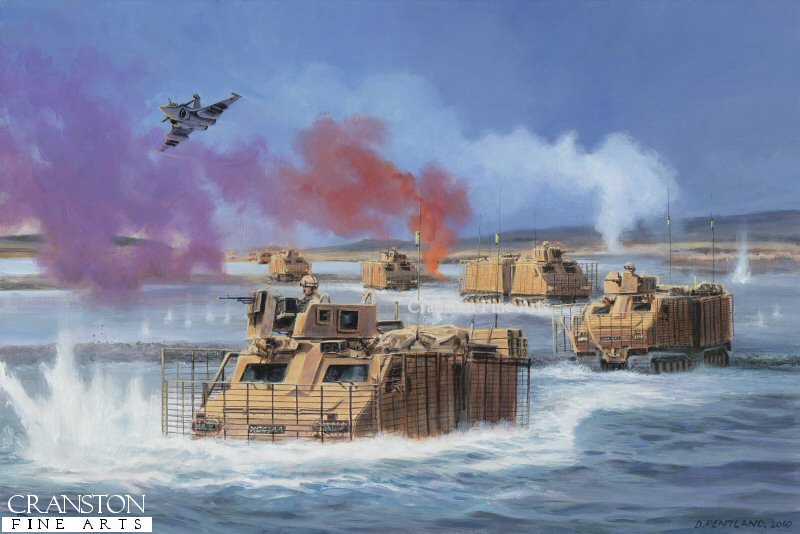
The Brits use their BV derivative light tanks in combat today; where are ours? Why is our light infantry being allowed to be creamed by a lack of cross-country mobility, armor protection and vehicle firepower?
Or tow M119 105mm light with tracked BV-206 SUSVs with armor panels added like the Arctic Paratroopers of the 172nd BDE in Alaska do or was done by the U.S. Army and Canadians in Afghanistan to transport mortars.
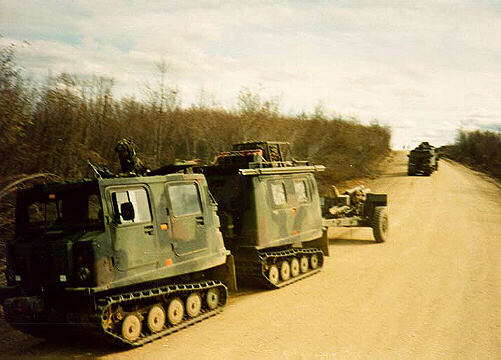
The British Royal Marines use armored BV10S Viking variants in addition to Scimitar 30mm light tanks in use by the Army and Paras in combat in Iraq/Afghanistan....while American tanks sit unused...
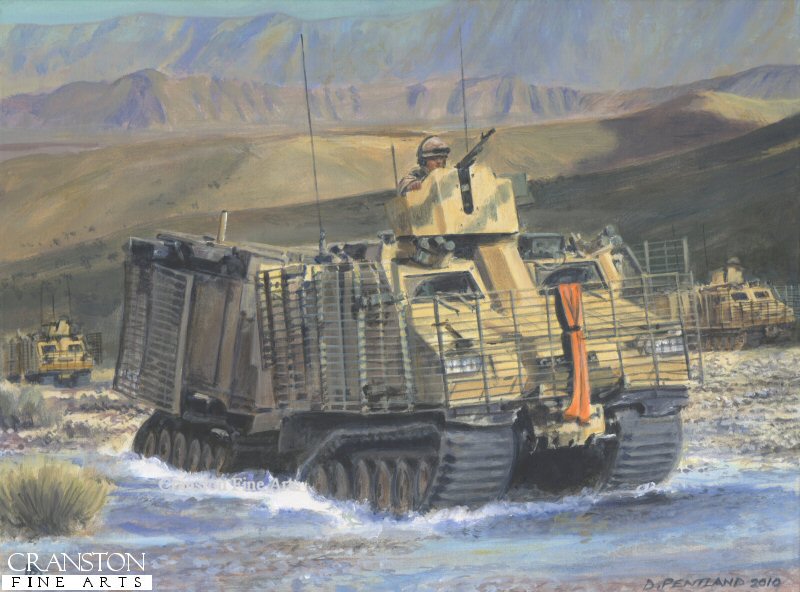
 www.youtube.com/v/yPkugOmfn9g
www.youtube.com/v/yPkugOmfn9g
Until then, the U.S. light infantry is orphaned again, the pre-quel. Light infantry was better force-structured during the Vietnam War with M113 Gavin ACAVs than it is today in 2011! Again, we have no Cavalry branch in the U.S. Army!
LIGHT TANKS IN THE FAR EAST: VICTORY
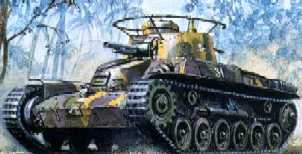
Wily Japanese General Yamashita with the help of a "studies group" came up with a way to beat the British from Malaya/Singapore though outnumbered 3 to 1. By using highly mobile, infiltrating light infantry on bicycles followed by light tanks, he was able to bypass the road-bound British Army through jungle trails. The Japanese bicycles when they went flat, were ridden on their rims which made sounds the British troops thought were the tracks of light tanks and withdrew from many positions by intimidation. The myth of the invincible "Japanese jungle fighter" was born when only months before a studies group was needed to study jungle warfare because the Japanese Army had no experience in jungle fighting! The mind, like a parachute, works best when its OPEN.
Later in the war, the Japanese light tanks were not much good fighting as part of a confined island defense where their weak machine gun armament and armor were no match for U.S. Army/marine corps (mc) M4 Sherman medium tanks and Amphibious Assault Vehicles (AAVs) like the LVT-4 which had a 75mm gun system. Had they been with a 50mm gun or larger and a little bit thicker in construction, we would have had even higher casualties than we had.
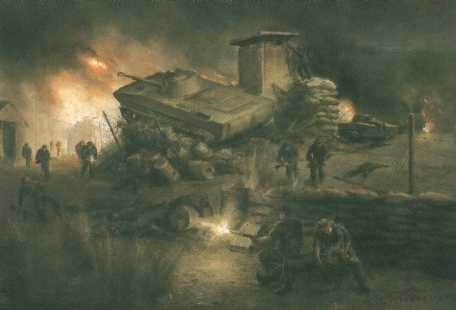
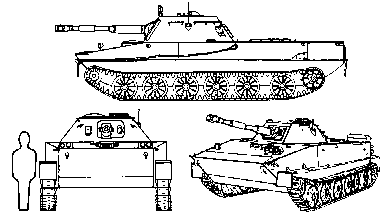
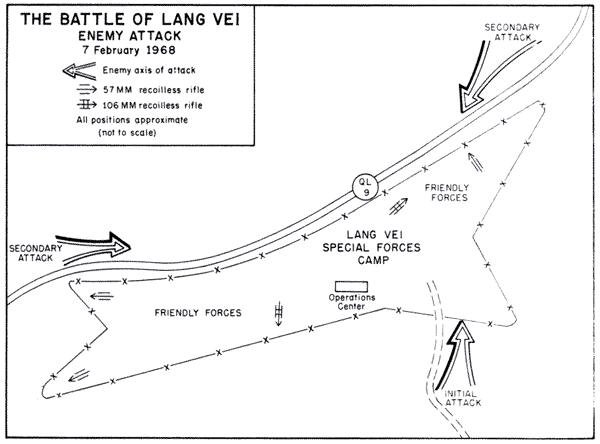
In Vietnam, the NVA used PT-76 light tanks to over-run Lang Vei Special Forces camp in a surprise attack---we had assumed that tanks couldn't operate in jungle terrain, and the mobility of the light tank proved us wrong at a high cost in lives lost.
PT-76 light amphibious tank details
Today's mc is adamant about putting a mere 25mm "pop gun" 2-man turret on the next generation AAV and refuses to mount 105mm turrets on its LAV 8x8 McArmored cars after millions of R & D dollars were spent perfecting them. Though the armored car is the wrong platform, at least the Army's IBCT program has a low-pressure 105mm gun on the LAV-III (IAV-MGS), currently slated for the new units. But using thinly armored, road-bound cars is making the same mistake the Japanese made with their armored vehicles. So McRhetoric about fighting urban war "3-blocks at a time" is obviously yet another McBS PR campaign to draw attention to themselves and try to grab more McBudget share for electronic McGadgets that will not win the city fight when we lack physical, shock-action means. Perhaps they want a McFoot-troop led "McBlood bath" for another McIwo-Jima Mount Suribachi-type McPhoto opportunity?
WHAT IS THE REST OF THE WORLD DOING WITH LIGHT TANKS?
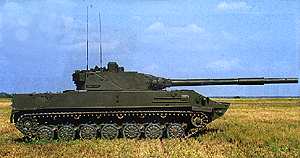
Basically making us look like jack-asses.
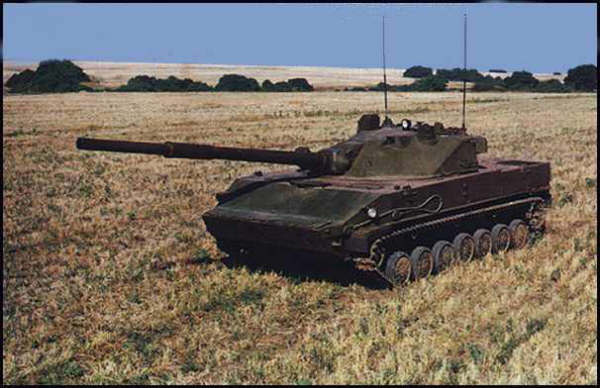
The Russian BMP-3 can swim in the OCEANS, be airdropped and carry infantry with 100mm main gun, 30mm autocannon and Medium Machine Gun turret firepower, all in a light package that out performs both Bradley and Warrior in cross-country mobility....
Read it and weep, Russian BMP-3 kicks western IFV's in the ass
Now the Russians have put a 125mm main gun turret on the BMP-3 chassis, making it THE best light tank in the world, capable of SWIMMING in oceans (something even AGS can't do), be airdropped, have infantry ride on top of it etc. Instead of giving the Russian economy free "hand outs" why don't we order 100 of these light tanks with a U.S. 105mm gun turret, and supply them to the U.S. 82nd Airborne and 2nd ACR Strike Force? With the next batch of 100, supply the 25th and 10th Mountain LIDs...if there is a will there is a way..
Russian 2S25 Airborne-amphibious 125mm gun Light tank
Apparently the Russians CAN-DO while we can only make up CAN'T-DO BS excuses.
The Russians have even fitted the 100mm/30mm/7.62mm BMP-3 turret onto the smaller BMD Airborne Combat Vehicle, making it the BMD-3M and now the Gavin....
More Russian CAN-DO: BMP-3 with 100mm/30mm/7.62mm turret on M113 Gavin AIFV
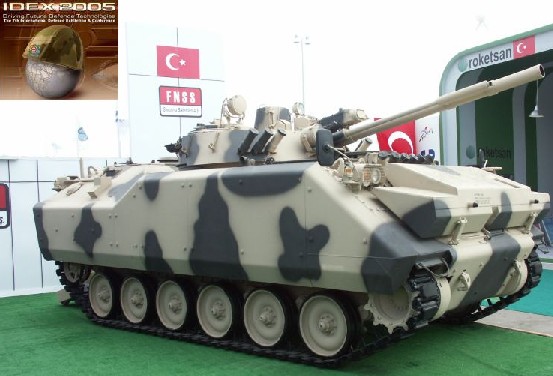
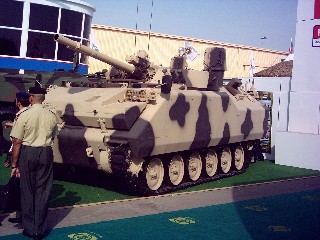
More contrast to our current Army/marines focus on buildings, lawn and ego maintenance instead of warfighting!
Legendary Tank Sergeant Ralph Zumbro writes:
"THAT'S THE VERSION OF THE GAVIN WE'VE BEEN NEEDING!!!Add a TC cupola, and we can just order the suckers up and go fight. I'm assuming that the 30mm is still there. Where did you find that sucker and who is using it."
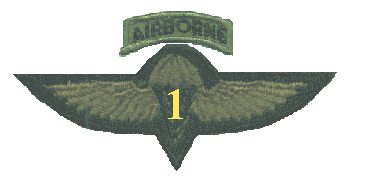 Another 1st TSG (A) member writes:
Another 1st TSG (A) member writes:
"It's truly an amazing system, the gun can even be stabilized and firing in the water (but I admit I'd have to change my pants when I got off the beach with that going on). It's also quite simple, perfect for the marines (never happen) and Dragoons (could happen).Did you look at the towed variant of the 120mm Mortar/Gun. Simple and capable of delivering steady fire at 8 to 9 rounds per minute. Combine that with PGMs and an AT missile system like the Russians use in the BMP-3 and you are in heaven.
One of the things the Russians had going for them, is a large population of Veterans from the Great Patriotic War, who went into military industries as designers after the war. Mainly that's due to the nature of the Soviet economy, and those jobs were best to be had. They understood what's possible in war and what's difficult. They didn't want Russian Soldiers to have to deal with overly complex equipment. Simple, Simple, Simple!"
While we are constantly fueling our 70-ton heavy, defensive tanks trying to propel them forward to act as offensive tanks, the bad guys will hit us with swarms of lethal light and medium tanks and we will perish in the POL-fed inferno."
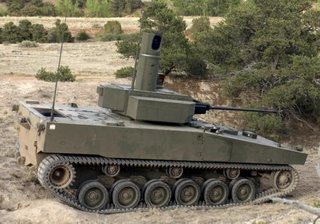
Another 1st TSG (A) member writes:
"Since our last e-mail I got off my ass and did some preliminary research on the ongoing dilemma/subject which will be the subject of a later e-mail. But I would like to go over a few things with you and get some feedback.First off, there seems to be an international trend towards lighter AFV's in the form of light and medium tanks. There is more R&D going on with major manufacturers and more interest from military organizations in same. Recently, Alvis has acquired Hagglund and are currently supplying Sweden and Norway with new light tanks and AFV's. Alvis AFV's are undergoing a upgrade retrofit for continued modern service and enjoys a rather large market of satisfied users. FMC was courting Turkey who was interested in M8's and they have since adopted and manufacture their own, Thailand has shown interest in M8's, but I am unaware if they have adopted it. Argentina fields a German/Argentina medium tank design. Spain (with Austria) manufactures and both field a light AFV family including a light tank. Singapore is the largest user of French AMX-13 light tanks and offers a modernization retrofit tank for sale or service to do same. Israel also offers modernized AMX-13's with retrofit service, I have also heard of a MARS-15 light tank they offer but cannot find any information. Cadillac-Gage is forthcoming with an advanced version of their light tank called the Stingray II. I heard that a good percentage of the M551's were given to ROK, where they were retrofitted and given 90mm main guns. [Editor: AMEN. They are not too pig-headed to use them] Could this be one of the reasons the Pentagon didn't adopt the M8? Because this class of AFV seems to be evolving at a rapid pace?"
[Editor: don't count on it. HQDA never met a light tank it didn't like, anything that helps Airborne/Light Divisions, HQDA is dead set against. Remember there is no Cavalry Branch in the U.S. Army to insure we have light tanks for a general-purpose mobile combat force.]
"A light tank should be very feasible in a high-intensity conflict, especially with the introduction of the new 120mm CTG from the Swiss. More emphasis is placed on speed and maneuverability (in keeping with General Hobart and Guderian style tactics) and with the advent of a new generation of ATGM's even the best MBT's would be threatened. The current key to survival seems to be active/passive armor systems. A light tank with sufficient armor to survive against infantry weapons in close combat with the best active/passive armor system should be adequate for a modern battlefield. A hit from any MBT main gun would disable just about any MBT short of the newest generation and even the newest MBT's are adopting active/passive armor systems to survive against the newest ATGM's. In other words, if you get hit by a main gun round from a late model MBT or ATGM, even if you are an MBT of the latest generation, odds are you're dead. Armor sufficient to protect against less is adequate as long as you have increased speed and cross-country maneuverability through concealing vegetation to compensate.
When I conversed awhile back with some buddies in the 73rd with the 82nd and some other armor units plus what I have read. Tankers prefer to operate standing in the hatches, they always stressed visibility. Israeli tankers practice this constantly. Yes, it does lead to casualties, but they still insist on doing this. So it stands to reason they need some form of cupola.
There is some problem with raised silhouette, so I was thinking of a folding gunshield mount, the Israeli's use a folding mount for their deck MG's on their Merkava's, I propose a more complicated variant. With the MG laying in the folded position, the front and side plates lay flat. When you pull on the grips to position the MG, it rises up, bringing the gunshield plates up in position and locking in place.
Another item that should be looked into. ABN units would be stuck by circumstances with a light tank. The small size of the AFV would limit main gun ammo storage. Because a light tank would carry less main gun ammo, a 30mm or greater chain gun (Boeing now makes some pretty lightweight ASP-30 models) should be used to augment or replace the 7.62mm coaxial. This would permit the AFV to engage APC/IFV's or other intermediate targets without expending the limited main gun ammo, reserving it for harder targets like MBT's. This would be especially crucial considering ABN forces operate with such tenuous supply lines and expand the capability of the light tanks. Because of the conditions under which ABN would be deployed, you can't count on much else coming.
With weight a limiting factor in light tanks, would Chobham armor increase armor protection at equal or slight increase in weight? If so, why hasn't this route been tried? [Editor: it has, the Brits put chobham on the sides of their Warrior MICVs in the Gulf War. One was hit by a 120mm Challenger main gun round and suffered just a dent!] The Blackhorse vets I spoke to told me that NVA 12.7mm fire used to tear their Sheridans up. A tank so lightly armored that .50 cal fire can disable them is ridiculous. The Level III protection against 30mm APFSDS should be bare minimum. The light tank should also be fitted with more extensive sensors, spotting OPFOR beforehand in terrain would increase battlefield survivability.
One of the items of conversation I had with tankers was regarding autoloaders like the Soviets tanks use. They all were very skeptical of the concept. They didn't trust a mechanical device in a role so crucial and they preferred a 4-man crew to facilitate field maintenance/repair like fixing a thrown track and the extra pair of eyes for observing the terrain/security. Perhaps a compromise is in order. A stowable autoloader in 3 configurations:
1) Fully folded and disengaged to permit manual loader operation.
2) Semi-deployed to assist manual loader operation.
3) Fully deployed in auto function in the absence of a loader (such as an undercrewed vehicle).Also, it seems that acquiring proper refitted BMD or BMP's would not be a problem. South Korea, Norway and Israel are the few I found that have adopted at least BMP-3's. Germany should have a few that they inherited with the re-absorption of East Germany. Israel is very good at refitting Soviet vehicles to western standards.
How do we get M8's in our inventory? Sell off some of our surplus M60's and 1st generation M1's to the Israeli's or Japan for example, and use the proceeds to buy M8's, or trade the same with Turkey for M8's since they have adopted and manufacture it. I think the AUSA could do it unilaterally without involving DOD or State Dept by claiming, 'in the interests of national security'...".
Our reply: The problem is HQDA DOESN'T WANT THE AIRBORNE TO HAVE LIGHT TANKS. IT THINKS WE ARE GOING TO TURN THE BATTLEFIELD INTO A GIANT VIDEO GAME WITH GADGETS SO WE CAN DESTROY TARGETS FROM A DISTANCE WITHOUT ANY MANEUVER. THERE IS NO CAVALRY BRANCH TO FIGHT FOR LIGHT TANKS!
That's the problem. Its not money.
The Army is run by a "heavy" tank duelling mafia and they know they are dying. The U.S. Army as not had a Cavalry Branch since the end of WWII, go figure it out. There is no constituency within the Army for light tanks and APCs. The Army would rather spend a billions on road-bound LAV-III armored car death traps with a computer or a 20-ton "Future Combat System" armored car with robotic sensory gadgets to be anti-Cavalry than FIELD one tactically sound light tank for the Light/Airborne Divisions so they can force-an-entry and later on fire & maneuver. They NEVER want a light tank to be in a light division, ever again. Otherwise they will be able to win small wars single-handedly without heavy forces like we did in Panama.
The current 20-ton "FUTURE" Combat System is purely stalling tactics and maneuvering to REPLACE THEIR HEAVY M1 tanks in the future, NEVER to empower the Airborne, Light Infantry or form an effective Cavalry. They will conveniently make sure the 20-ton FCSs are unable to be airdropped ("embedded electronics are too sensitive") with the 82nd Airborne. If it EVER gets built in the first place, which I doubt. The LAV-III armored car will become the defacto "FCS" by applying the robotic gadgets to it, because after all, the Army says the platform is not important, its the capabilities of the new technologies (gadgets). If that is true, why are we buying new rubber-tired armored car PLATFORMS, then? Apply the gadgets to a physically-sound, robust M113 tracked AFV, which we have over 17,500 of and LET'S SEE if these wunder-toys are the future of warfare or not?
Do some checking around. We can applique' armor to the M113A3 and make it .50 cal HMG, 30mm autocannon and RPG resistant, why won't HQDA do this? They haven't even bought the applique' armor panels!
I'm being as blunt as possible, its egotistical assholism (Heavy or RMA force ego that comes before National Defense/freedom/efficiency) that is the problem by those that want to fight comfortable leisure-war-with-all-their-heavy-and-stand-off-war-toys.
HQDA has ALWAYS HAD THE MONEY TO BUY LIGHT TANKS, BUT IS TOO SELFISH AND CORRUPT TO BUY THEM. The costs to close the contract out on the M8 alone would have bought a DOZEN M8s and the Army already had bought 6 x pre-production models. Its HQDA Anti-Airborne prejudice that keeps the U.S. Army Airborne from having either a light tank or light M113A3 Gavin AFVs assigned to them.
A reader writes:
Update on the XM8; Turkey has adopted and is now manufacturing their own. FMC is now courting both China's. Steyr-Daimler-Puch in also in the running offering their ASCOD Ulan light tank. The PRC will most likely go with the Russian 2S25. The XM8 looks the most likely with ROCA, the winner will be produced indigenous with planned 600 units.
General Dynamics is apparently working on a light tank project with a prototype they call a 'expeditionary tank'. Rumor has it GD is working with Hagglunds and Steyr-Daimler-Puch on this project.
The 2S25 is very impressive. Your site is the first notification I have had with it. Upon studying the side view, I opine that it is a BMD/BMP variant, though the stretched chassis is obvious with seven road wheels. The hull configuration shows it's heritage but with noticeable differences indicating the internal layout and armor is different. The engine is obviously in the rear by the forward location of the turret on the hull. Unfortunately, I can find no specifications on the vehicle. I can surmise that by being amphibious, by having such a 'high power-to-weight ratio' and high speed/maneuverability even in uneven terrain that the armor protection is on the low side. One source seems to confirm this by stating that the armor protection is proof against 30mm APDS frontally at 300m+ with sides at 7.62mm AP at all ranges. The vehicle's stated amphibious, airdrop, firepower and maneuverability are noteworthy. Why does it seem that everybody, including our foes, builds and/or adopts what WE need and we're not just last on the boat, we're not even getting on it.
Not only do we not have a light tank, the chances are increasing that our guys will be facing a light tank we should have.
I am sorry but not surprised at your mention of an 'Armor mafia'. When I was a leg, we used to grouse about the 'Airborne mafia'. But even then there was a great deal of awe and respect for Paratroopers. Apparently the decaying effects of our society has permeated our own ranks. The worst insult we offered between ourselves applies here, the Armor clique are behaving like risk-averse CIVILIANS.
Troopers never give up, it's time to get politicians involved. The most likely will be 'hawkish' representatives and the representatives from the states where a light tank and it's components would be built."
"Excellent work on the light tanks section. The large amount of responses are good, intelligent and to the point. From what I can gather, there is absolutely no interest from the higher-ups on a light tank. What I have found is that EVERYBODY else is adopting and/or developing light tanks. With the big surge in R&D, apparently high demand and heavy competition, I expect to see some very interesting vehicles becoming available.
WILL OUR FAMILIES BE WIDOWED?
We need to get "busy" here in the U.S. and deploy a M8/M113A3 force NOW as an interim future combat system medium MBT to replace the 70-ton M1 Abrams series is developed. Infantry cannot follow behind the turbine engine wake of the Abrams to use it as a moving shield in urban combat, they can behind a diesel-engined M8 Buford light tank or M113A3 Gavin AFV. Some of those M113A3s could mount 106mm RRs and 120mm turreted mortars to act as light tanks/assault guns. Field Artillery Branch could put a gunshield on its towed howitzers and place designated M119 105mm howitzers so equipped on M548A3 tracked carriers to give light forces a "hip shoot" artillery capability. We have to DO SOMETHING, and QUICK before the next war erupts---or our "orphans" will become dead heroes. Living heroes are better.
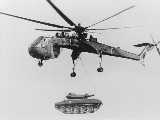 SOME LIGHT TANKS AVAILABLE NOW OFF-THE-SHELF HQDA WILL FIND "UNACCEPTABLE" REGARDLESS FOR MYRIAD EXCUSES
SOME LIGHT TANKS AVAILABLE NOW OFF-THE-SHELF HQDA WILL FIND "UNACCEPTABLE" REGARDLESS FOR MYRIAD EXCUSES
M8 Buford Armored Gun System (AGS)
Overview:
An excellent article by Captain Francis J.H. Park in the July-August 2000 U.S. Army ARMOR magazine, except for it didn't mention how band-tracks would give M8 AGS high road speeds and low vibration levels, thus LAV-III-type armored cars offer no benefits to the Army, only drawbacks, and excessive costs financial and human.
The 17-ton M8 Buford AGS was designed to be C-130 transportable and parachute air-droppable. It was designed for use by Airborne and Light Infantry/Cavalry forces. It fires the entire suite of 105mm munitions, from anti-personnel (beehive), white phosphorous (good mark for airstrikes), high-explosive plastic to the M900 Armor Piercing Fin Stabilized Discarding Sabot Tracer Depleted Uranium (APFSDS-T-DU), which provides lethality equal to the M829 120mm round used in the 70-ton M1 Abrams heavy tank. Its main gun defeats bunkers, buildings, point targets and all variants of the BMP, BTR, BRDM, SPH, T72, and T80.
Status and Availability as of April 2002
Four AGS vehicles were reconditioned and fully prepared for deployment to Ft. Lewis in Summer 2000. Two of these four fully operational vehicles are located on the east coast in York, Pennsylvania and two are located on the west coast in San Jose, California. Two additional vehicles and a spares package including four complete sets of on vehicle equipment, Basic Issues Items (BII) and level II armor (and 3 sets of level III armor) are with the vehicles. This package is sufficient for immediate deployment and can be quickly supplemented for prolonged operation. Technical Manuals were developed and validated under the original AGS contract and are immediately available. A complete training package including training aids exists. Gunnery and maneuver training devices are still in the Army system for AGS.
These first four vehicles could be delivered within days of contract start date.
In short, the people, equipment, support package, and the ammunition are in place to expeditiously train, deploy and support immediate deployment of the existing M8 AGS assets. New M8 AGS production vehicles could be available within 9 months of contract award, assuming M35 cannon availability.
Armored Gun System: The Rapidly-Deployable Silent Killer
For many out there, who lay awake nights and dream of Super Lightweight Silent Killer Platforms, it is time to build a Full Platform Demonstrator. The M8 AGS can be immediately converted to Hybrid Electric Drive (HED), Band-Track for this purpose. The M8 AGS was paid for and the Army owns 6 of them. This approach would allow for the use an existing platform, which results in tremendous time and cost savings. The AGS has a Digital Data Bus, which can support the insertion of additional electrical components and embedded training programs. As such, PMCS processes can come over the VIS Communication system, so that tomorrow's Soldiers won't need to dig out the -10 manuals in the rain and mud.
Hybrid Electric Drive M113A3s, and Bradley's have been built and tested. Further, a TTD (Transformation Technology Demonstrator) based on a stretched M113A3 chassis (the Mobile Tactical Vehicle Light), Hybrid Electric Drive, and Band-Track was presented over a year ago at the AUSA Symposium in Fort Lauderdale. Many senior Army officers including the Chief of Staff have had a test ride in this vehicle and experienced its rapid acceleration, smooth ride, and stealth mode operations. Recently the Future Scout Cavalry System integrated demonstrated was also completed, further demonstrating that a hybrid electric tank is right at our fingertips.
The M8 AGS has a ramp door in the rear that lowers for the Engine/Transmission to be rolled out for easy maintenance. This area would allow easy conversion to Hybrid Electric Drive. With such a propulsion and power management system, Soldiers will have a Long Range, Extremely Fast, and Silent Killer.
Long Range: a small, fuel efficient engine runs the Hybrid Electric Drive until Fuel Cells become available. The 150 gallon fuel capacity would take you a long way, especially considering the AGS's C-130 airdrop capability.
Extremely Fast: no hesitation acceleration of Hybrid Electric Drive would make the small silhouette of the AGS very hard to acquire and hit.
Silent Killer: a single AGS HED shooting M-900DU could engage multiple tanks in a matter of seconds as a Silent Killer, running on battery power in stealth mode.
The advanced armor package developed for the AGS is modular and would provide a functional full up system to test EM Armor, Active Protection and other future concepts. The Hybrid Electric Drive produces ample power for the integration of these and other sensor, communications, or weapon systems. The M8 AGS also has an advanced autoloader that fires a sustained 12 rounds a minute of 105mm Ammo out of a M35 Cannon, far superior to the WWII designed M68 Cannon. The Hybrid Electric Drive Tank has power to spare and digital management so that GEN II FLIR could be operated in silent watch. The tank version of the "Energizer Bunny" is here.
The M8 AGS HED could be delivered in short order. We should put this Silent Killer in the hands of American Soldiers to refine employment concepts as part of an all arms battle force.
A pool of both Active and retired Senior NCO's are qualified to train the M8 AGS.
THAT'S RIGHT! The damn thing the Army wanted to buy in the first place is now available off-the-shelf thanks to the more courageous Free Chinese and Turkish Armies!;...and 6 light tanks are already owned by the U.S. Army! GOD BLESS THEM!
NOW what is HQDA's excuse?
Its the airdrop, stupid
Much has been made of the bloated LAV-III/IAV at 19-24 tons being to heavy to AIRLAND by C-130s.
Airland is NOT airdrop.
There are two weight and range ratings for the C-130 (E and H Models) aircraft, a peacetime and a wartime rating. These aircraft are rated as being capable of transporting 50 000 lbs of cargo (extreme weight) on a 350 nautical mile (NM) flight in wartime. In peacetime, the extreme weight limit is 46,000 lbs. With no cargo the E model can fly a no-wind distance of 2,000 NM while the empty H model can fly a no-wind distance of 2, 400 NM.
There are, however, other restrictions. The load on the aircraft's ramp hinge is limited to 42,000 lbs which becomes the maximum weight for most combat vehicles. The C-130 can transport this weight of cargo for 1200 NM if it is taking off and landing from prepared airstrips having refueling capability (as in Panama) .
This was therefore established as the RO/RO combat weight of the AGS with level 2 armor, full crew, full ammo, 85% fuel, full BII, and shoring. The C-130 cannot land with this much weight at unprepared airfields nor can it fly this far if refueling is not available at destination. This is one of several reasons that the AGS was designed to be capable of Low-Velocity AirDrop (LVAD).
The type of airfield at destination is irrelevant if the C-130 is going to drop its load by parachute and return to a prepared air strip. The airdrop weight of the AGS is 36,600 lbs with level 1 armor, no crew, limited ammo, and fuel for 50 miles operation. The parachutes, type V air drop platform, rigging, crushable material, and other airdrop items brought the weight of the item being extracted from the aircraft to just under the 42,000 lbs limit. The C-130 airdropping an AGS therefore has a peacetime range of 600 NM radius.
It turns out that the weight of these airdrop items is less than the weight of fuel that a C-130 would need to land, taxi, off load, taxi, take off, and climb to cruising altitude. The crew, level 2 armor, extra ammunition, and extra fuel would be on another aircraft with other cargo. This could also be airdropped, or it could be airlanded at a forward air strip if it is light enough.
The maximum loads that the C-130 can transport in peacetime goes all the way down to 4.8 short tons for 100 NM radius for a Type I forward airstrip. The classification of forward airstrips is described in TM 5-330/ AFM86-3 Vol II. The maximum peacetime ranges for these airstrips is in AFR 76-2.
CV90
21.5'L x 10.2'W x 8.6'H, 42mph. (all figures approximate)
20-25 tons approximate.
Welded steel hull/turret. Supposedly Level III protection upgradeable with bolt-ons to higher.
Outperformed Warrior and Bradley in Norway Army field tests, notably in terrain manueverability and hill climbing. In use with Swedish and Norwegian Armies in a variety of different configurations.
Light tank version (CV90-105) with 105mm main gun.
Currently undergoing experimental fitting with the Swiss 120mm CTG (CV90-120), although reported chassis is damaged by recoil.
(See Army Technology website for details).
IKV91
21.2'L x 9.9'W x 7.7'H, 40mph. (all figures approximate)
18 tons approximate.
Classified armor.
Currently in use with Swedish Army. Appears to be first generation CV90. Fully amphibious, noted for low-ground pressure. In present configuration mounted with 90mm low recoil main gun. Obviously lightly armored for such low weight. Production, 1975-1978. Export model offered with improved armor and 105mm main gun.
ASCOD (LT105)
20.5'L x 10.5'W x 9.2'H, 42mph. (all figures approximate)
30+ tons approximate.
Welded steel armor, with add-on, protection Level III.
Joint Spain/Austria venture. Currently in use with Spanish & Austrian Armies. Present configuration with 105mm main gun. Can be refitted with 120mm CTG.
(see Army Technology website for details).
TAM
22.3'L x 10.8'W x 7.9'H, 46mph. (all figures approximate)
Classified armor.
Joint Germany/Argentina venture. Currently in use with Argentine Army. Present configuration with 105mm main gun. Can be refitted with 120mm CTG. Good specifications/capability for early production light tank.
STINGRAY II
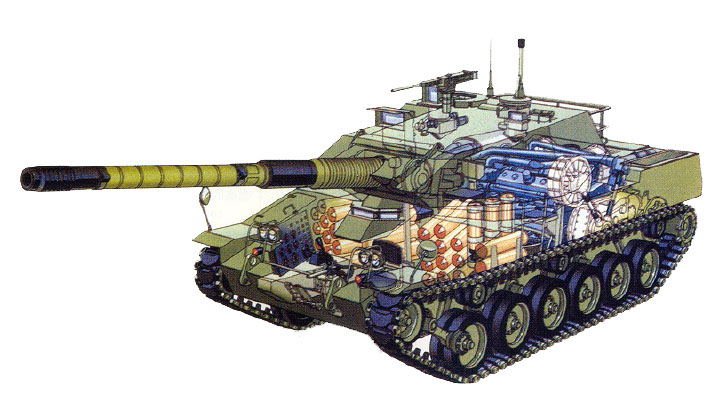
No information available yet.
Note: All appear to offer decreased IR & sound signatures and all are NBC rated. All are diesel.
Note trend towards steel armor for maximum protection. Even the bolt-on applique armor for M113A3 is steel, which is what the Israeli's also use for their M113's. When the W Germans fielded the first IFV, the Marder. They sacrificed amphibious capability by constructing it out of steel instead of the then current trend of aluminum (M59/M113). When asked about this the Germans replied that based on their experiences on the Russian Front in WWII, they felt that armor protection heavier than international norm for infantry was crucial and preferred the qualities of steel over aluminum. The low silhouette & heavy armament of the Marder forced the Russians to introduce a competitive IFV, the BMP.
In the Falklands, the British Scimitar/Scorpion light tanks went against Argentine Panhard-90' wheeled armored cars. In the difficult terrain of that island, the Panhards easily bogged down, while the tracked Scorpions scooted around with no problem. It is said that the Scorpion ground pressure is so light, it can run over a ballpoint pen on concrete without breaking it. This is another factor to consider.
BMP-3 100mm/30mm/MG light tank/IFV
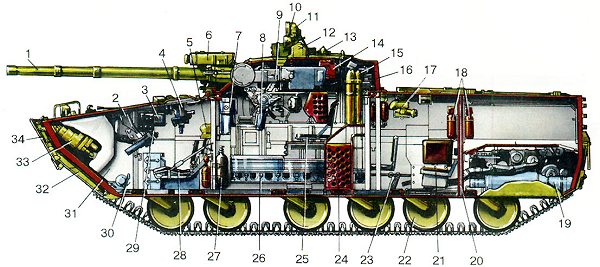
Beats BFV and Warrior in the desert for mobility, can SWIM in the surf zone like a AAV. Airdroppable AND carries a squad of infantry.
2S25 125mm light tank
Same as above, except engine in rear and 125mm gun turret fitted.
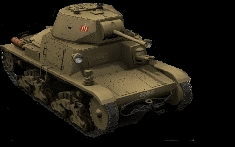
Very capable vehicles are available, it's now just a matter of obtaining them--which may just mean requesting in writing for some M113 Gavins to attach a Carl Gustav recoilless rifle on top!
A reader from overseas writes:
Below is a picture of the MT-LB6MB, a dedicated APC variant of the MT-LB, acknowledged as the Soviet/Russian equivalent of the M113 APC, which your site gives well deserved praise to.
The MT-LB is usually referred to as a tracked multipurpose armored vehicle and has probably been used for more roles than any other vehicle in the Russian army inventory, including artillery prime mover, command vehicle, armored ambulance, transporter-erector-launcher for ATGMs and SAMs, armored recovery vehicle, combat engineer vehicle, repair vehicle, chemical/ radiological reconnaissance vehicle and battlefield surveillance radar platform. It has also been used as a self-propelled mortar (mountng the 82mm Vasilyek automatic mortar) and as a purely ad hoc air defense and fire support vehicle with the ZU-23 AA gun. Last, but not least, it has been used as an APC, and can carry 11 men. In Chechnya Russian BTR-80 equipped Motorized Rifle units have often exchanged their BTRs for MT-LBs and the recently the Russian Army has been so impressed with the performance of the MT-LB that the construction of a dedicated APC variant with improved armament and armor has gone ahead. Its impressive performance obviously comes (like the M113) from its excellent cross-country performance (due to its very low ground pressure, lower than the ground pressure of the M113 even) robustness, ease of maintenance etc.
Like the M113, the MT-LB is an 'old' vehicle, being introduced in the late 1960's I believe. In 1995 however the vehicle was modernized with a new engine and improved steering by Muromsk Diesel Locomotive Works. The vehicles (approximately 5000 in the CIS total) were stripped down then overhauled and at the same time the steering system was replaced by a new hydrodynamic steering mechanism, which improved the ride of the vehicle and also made it easier to handle.
I could not find a larger picture of the MT-LB6MB, I apologize, but this vehicle has had the single PKT 7.62x54R machine gun removed and replaced with a drop-in turret called the Modular Weapon Station, which is mounted on the roof near the rear of the vehicle. This turret was first seen on the new BTR-80A and is equipped with the 2A42 30mm autocannon first seen on the BMP-2, a PKTM coaxial machine gun, and six 81mm smoke grenade launchers. The turret also has a much improved day sight.
The MT-LB6MB has a 290hp engine (more powerful than the engine on the M113A3 even). Like the M113, in its original form the MT-LB weighs a little over 11 mt. The addition of the MWS and the strengthening of the armor probably has increases the weight of the MT-LB6MB by an extra mt or so (the BTR-80A weighs 14.6 tons compared to the 13.6 tons of the original BTR-80).
Russian infantry preferred to ride in a tracked MT-LB with a 7.62mm machine gun rather than a wheeled, supposedly better protected BTR-80 APC with a 14.5mm heavy machine gun. While the BTR-80 choked on the debris strewn streets of Grozny and rocky roads up in the mountains the tracked MT-LB didn't break a sweat. Now that the same superb tracked APC has been equipped with the firepower of an infantry fighting vehicle and has had its armor improved, its ridiculous that the U.S. Army is ignoring their own excellent M113A3 and instead going for the wheeled LAV-III deathtrap option.
While I was writing this email I thought I'd tell you about the latest Russian BMD development. The BMD-3M has been identified. The main difference between the BMD-3 and BMD-3M is that it is fitted with a new turret based on the BMP-3 design. The Russian airborne now has not only the 30mm autocannon at their disposal but the 100mm main gun of the BMP-3 for direct fire, shock action. I have also attached a picture.
Regards,
Dorian
P.S. There is also an MT-LB6MA version with the same features of the 6MB except instead of the MWS there is a BTR-80 style turret with the 14.5mm heavy machine gun, coaxial PKT machine gun, etc."
"Its funny that while the Russian Army moves away from its wheeled vehicles (the BTR series), learning lessons from the brutal combat in Chechnya, the U.S. Army is moving towards them.

[Editor: Can you spell H-Q-D-A C-O-R-R-U-P-T-I-O-N?]
A noted Armor combat leader writes:
I can't agree fully that we're reluctant to maneuver because of heavy
casualties in 'Nam. We did a pretty good job in Panama, Haiti, and
especially Desert Storm where we pretty much destroyed the Iraqi Army. I
believe it was a tragic error to fail to Seize Bagdhad and depose Sadam,
but that's water over the dam.
As to the M113 ACAV's ability to withstand multiple RPG hits, I would
take that to be well established. We sustained multiple penetrations
without catastrophic results unless the round hit the fuel tank or
ignited on-board explosives. ARVN countered this by 'refusing' the fuel
tank mounted on the left rear by presenting the right front to the enemy.
We suffered an average of 0.8 personnel casualties per penetration on
ACAVs often carrying a dozen or more people. Later, quite by accident,
we discovered that a three- or four-inch layer of styrofoam on the
wooden trim vane used for swimming completely stopped penetrations by
igniting the RPG too far from the actual armor.
Based on all this, I would argue that a force of ACAVs backed by M41's
would still suffice for anything short of World War III against China.
I'm not sure whom we should contact to promote this concept since my
impression is that the overwhelming majority of current flag officers got
there by kissing ass rather than standing on any principle."
"Having been retired for 22 years, I'm somewhat out of touch with the
details of current programs, though I'm aware of GEN Ski's desire to be
able to insert a force of infantry and wheeled LAVs by air to be followed
by heavier forces by sea. Actually, we did the former in Viet Nam in
1966 to put down the Buddhist Mutiny in the crack ARVN 1st Div.
I was Sr Advisor to the ARVN Chief of Armor when Prime Minister Ky asked
us to airlift a troop of M41 (76mm gun) light tanks to DaNang. We did
this using three sorties by three C133s ("stretch C130s) each carrying
two tanks fully combat loaded with crews mounted. They went into action
immediately upon arrival and put an end to the foolishness.
A veteran writes:
"Regarding light tanks - air-droppable. There was,in addition to the Ontos, another unarmored tank that mounted a 90mm gun, called the Scorpion used by the Army. Pooh, you say, I saw it at Ft. Sill in 60'.OUR REPLY (He is right)Maybe its time to look at it again. There was no crew protection, they just sat exposed around the gun. It could be up gunned. I saw the Ontos also and would not liked to been on the receiving end of that six barreled critter. With regard to the ATV, I saw in Red Bluff, CA., a version of the one discussed, that had a tread set-up on the rear wheels that enabled it to go anywhere, especially snow. The treads mouned over the wheels and was easily installed. I drove it and once we used it on SAR mission in the winter of 89/90."
Dear Sir,
You are correct! I have some better pics of the M56 Scorpion I am scanning now, one from the War museum in Seoul, Korea and at Fort Benning's Infantry and Fort Bragg's Airborne museums.
See the M56 here:
http://www.reocities.com/equipmentshop/airbornetanksnoexcuse.htm
If we had the will, we could easily cut down a M113A3 or a German Wiesel to create an assault gun like the M56. Or buy the M8 AGS like we said we would. The problem is hubris---Airborne with its light-itis hubris and HQDA with its jealousy of the Airborne becoming too capable and leaving nothing for the "legs" to do.
RETURN OF THE MIGHTY M551 SHERIDAN?
Another reader writes in:
The M551 re-production should include a spade which drops down below the hull, at the rear like a self-propelled gun, for firing the 152mm conventional round- for stationary rapid firing accuracy. A reduced charge 125mm subcaliber HEAT and HESH round should also be available- (w/sabbot)- for rapid firing on the move- In order to limit recoil forces on the vehicle. And of course, a power stabilized turret. The bottom armor must be greatly thickened, so amphibious mobility will require a 'screen', as the 'swimming Sherman' used at Normandy on 'D-Day'. That the M551 had many, reliability issues is not a question. It is precisely so, that re-producing this fine, and potentially excellent, platform -Makes economic sense, that we now know exactly what will require re-engineering, of this ALREADY designed system.
In this matter, one must consider the various approaches to 'light' tanks taken in the past. A 'light' tank design is particularly subject to changes in the balances between protection, mobility, Firepower.
The M551 design is an almost perfectly sized vehicle, with a SUPERIOR weapon to that of most tanks one would encounter. .
As the above picture from 'Desert Storm' illustrates, the modern tank, even as heavily constructed as the M1, is vulnerable to the standard tank gun.
Chobahm armor and severely sloped armor is designed to defeat HEAT ammunition- particularly, a severely sloped armor will, reportedly, completely defeat a missile round.
Since it is clear that the standard tank gun is effective at 2000 meter ranges, the initial concept of the Shillelagh is still valid- As the Soviets illustrate by their efforts at guided 125 mm tank rounds. Thus the 152 mm Shillelagh can be considered to possess several very strongly favorable characteristics:
1: The large missile round, as a HESH weapon, can destroy any well sloped target as HESH ammunition is not affected by the slope of the armor of the target.
A 'micro-wave' command guidance option could also reflect off
the very small target area of a tank turret 'en-defile' and precisely
command the opening of control surfaces, 'pop-out' wings, which would
direct the missile into a downward arc, thus striking the target from the top
with over 8 pounds of high explosive. Such a HESH round would completely
destroy any opposing enemy vehicle. The reflection of the "x-band", command guidence beam, from the target, system would act as a proximity sensor which deploys the "Pop-out" control surfaces at the correct distance from the target.
3. The 'gun-launched' Shillelagh has a much higher flight speed than a wire-guided missile. Thus the firing vehicle is not greatly exposed, as any missile armed 'tank-hunter' APC modification will be. The high flight speed also greatly increases the chance of a 'hit' on a target moving at speed, laterally, across the field of fire. Wire-guided missiles are very difficult to track such a target if the ground allows for 'cover', for the target tank
to move into.
4. A 'subcaliber' 125mm, 'sabboted' HE infantry support round, for the M81 gun would similarly be superior to to the high velocity 120 mm rounds, as low velocity rounds have a much greater explosive content.
5. The 152mm full caliber round posses a destructive power similar to the
162mm 'demolition' gun on the now retired M60-based M728 Combat Engineering Vehicle.
6. There has been a great deal of discussion about compressed propellant,
injected directly into the weapon's firing chamber. Although I don't have
any precise knowledge of this process, if it works - The 125mm(subcaliber)/152mm rounds could be manufactured and stored with only partial propellant charge.
Thus, reducing the round's weight, and making adjustable charge firing
possible- I.e. the compressed propellant can be selectively metered into the
firing chamber. A mixture of solid and compressed propellant should solve
the 'caseless ammunition' problem, as mixtures of solid-and-gas-propellants are the most efficient in terms of burn, and complete combustion.
7. A compressed propellant container could be installed below the turret 'bustle' in the back deck, in an armored container, thus reducing risk of ignition by bottom/mine attack.
A remanufacturing of the M551 should consider that the size of the hull
is ideal. A re-manufactured vehicle should not have increased size.
The M551 is ideally suited to air transport. It's small size gives
this vehicle high mobility. The KEY point of air-assault is: One can take
the high ground from the start. The M551's superior mobility, if delivered
to positions above the enemy, would be extremely dangerous to the opposing force.
The M551 weighs in at 17 tons. A re-manufactured version could be designed at up to 24 tons, maximum. Improved bottom armor could consist of Chobham armor,
over a steel bottom frame-replacing the original aluminum construction.. Chobham armor should give a very superior performance against mine attack.
The frontal armor could be increased, and the mantle of steel. Thin Chobham armor is not likely to improve resistance significantly. It's performance against ballistic attack is dependent upon various layers, which may not be possible in thin plate.
However, the frontal armor of a 20-to 24 ton re-manufactured M551 might
be for 30 to 50 mm of steel armor, perhaps significantly more. The frontal armor should be modular, i.e. additional plates added or removed according to requirements of mobility at the drop zone. If the vehicles are used to support urban combat, much increased armor could be attached, as mobility in this context id less relevant, and the full 152mm ammo essential.Heavier frontal armor will support a 'reactive' armor system as protection against RPG, and possibly heavier ATGM systems.
The First, Second, and Fifth roadwheel stations should be changed from
Torsion Bar suspension to hydro-pneumatic, both for greatly improved
cross-county performance, and adjustability due to varied frontal
armor components.
A 'reverse' driving system should be studied, similar to the Swedish 's-tank',
for the same reasons. Possibly, the view from turret commander's copola optics -could be electronically presented on a 'head-up display' on the driver's windshield, and the commander give verbal aids/queues when the Sheridan needs to 'bug-out'. Reverse driving is a requirement in rugged terrain, as turning around is often not possible. The transmsission also needs to be suited to full power reverse maneuvering.
I suggest the engine must be uprated to at least 400 hp, for a 20 to 24 ton
re-manufactured M551. A two unit, two stroke diesel might be a very
acceptable solution. Two banks, separate engines, of 4 cylinders each,
of which either one or both could be engaged. When idling, a 4 cylinder
engine will put out less noise and IR signature, and maintenance on this very
small and difficult to service vehicle, could be improved if either of the two
engines could be simply hoisted out for service or replacement.
I am not suggesting that, as some Russian wheeled vehicles, that the engines be engaged separately to either track. Rather, they are both clutched to the
standard drive train.
The design was originally based on a GM prototype for a stabilized unmanned turret,
Stabilization:Yes
Armament: 1 x 120mm gun, MAG MG, M2HB, Mk-19 OR GAU-19/A (C)
After many hours of research, I have just this day 'un-earthed' this illustration. The lack of a full turret allows the positioning of the gun fully toward the rear of the chassis, and subsequently, a well sloped mantle. It you have any further information, please reply on this matter."
"It has been with some great interest that I have researched the present lack of Armor issue, at your 'Web' site. The cancellation of the M8 system is inexplicable - other than it may have competed directly with some other Army project, the usual excuse. However I am unable to find out, what this other program might be. The M551 was an exceptionally good concept, in theory. And a reproduced version is a clear answer to your problem. Putting this vehicle back into production, with the known defects corrected, and with a microwave( and IR ) missile guidance system added to solve the 1000 to 1250 meter guidance problem. It is commonly stated that the missile, " drops below the line of sight", as old first generation 'Saggers' - However I do not think that this is the issue. The missile's own exhaust must be the issue- Rather, the exhaust interferes with the IR beacon. Also, the IR only system cannot be fired over a body of water. A 'millimeter wave'( x-band) command guidance beam system added to the Shillelagh will allow either type to be selected. The IR is preferable in the desert at long range as it is undetectable by the enemy and un-jamable.
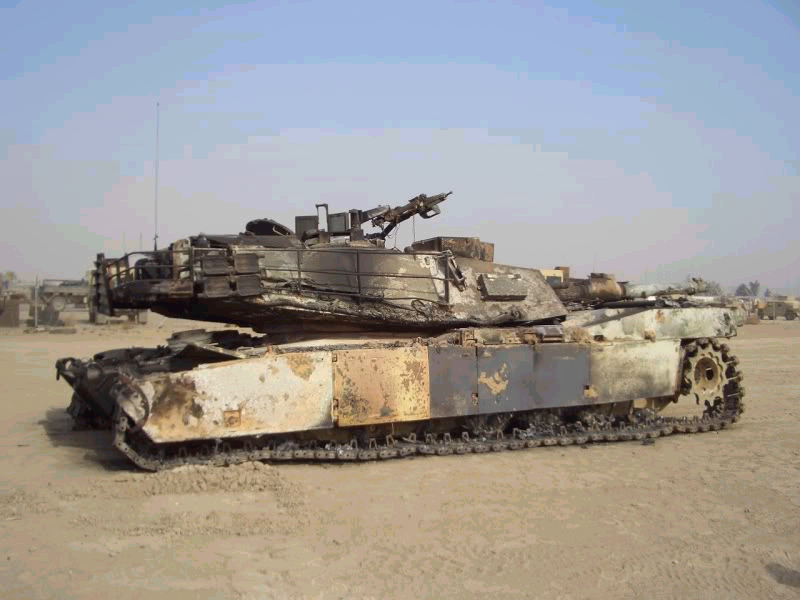
2. A microwave (X-band) guidance can function to give precise guidance that will allow for a real 'top attack' weapon against targets 'en-defile'.
A further possibility is illustrated below: ( "Hawk" )?
Ammo: 34 x 120mm, 1,000 x 7.62mm NATO, 500 x .50 cal HMG, 200 x 40mm,
Fuel Type: D, G, AvG, A
Load: 700 kg
Veh Wt: 21,051 kg
Crew: 3
Night Vision: Passive IR, Rangefinder, Thermal Imaging
Airborne!
A Cavalry Vet writes:
I will say this for the record, I like wheeled armored vehicles and as for
your comment 'The U.S. Army doesn't need any more armored cars that limp home
at 5 mph'. I would rather limp home at 5 mph than be stuck in a 'kill zone'
with a broken track. On the other hand the Initial Brigade Combat Teams are
the second biggest joke passed on by Slick Willie Clinton and his goons.
The reality of the 'Bold Brigades' is in a document that I down found in the
2nd Armored Cavalry Regiment's web site discussing the proposed LAV
organization of the Regiment. It was from something called the Advanced
Warfighting Working Group (AWWG) 'Proposed LAV Organization 2nd ACR Medium'
This was a study for equipping the 2nd Armored Cavalry Regiment with the
Light Armored Vehicle. There was one phrase in there that worried me then and
worries me now since I feel that it is critical to the whole philosophy of
Initial Brigade Combat Teams.
I remember, one of the great lines that I have seen in the various articles
about the Initial Brigade Combat Teams is a 'Robust Reconnaissance
Surveillance and Target Acquisition Squadron to Enhance Situational
Understanding' I have spent a good deal of my military career in
Reconnaissance units. Oh, what the hell I am a Cavalryman and I love it. I
know what cavalry units are supposed to do and I know when I smell a rat.
In a section called 'Traditional Employment: (Theater Reconnaissance)' was
this section 'The proposed ACR is not designed to "fight" like a traditional
ACR due to its enhanced 'situational awareness' and lack of armored
protection, but will direct other "killing" systems and employ standoff
precision fires.' and then there was the section 'The employment of this type
of organization also enable the commander to simultaneously attack targets
throughout the depth of enemy territory thereby giving him a mounted "Deep
Strike" capability.'
What the hell is this?
From my reading, the concept is the make the a regimental sized scout platoon out of the 2nd Armored Cavalry Regiment. I served in my share of scout platoons and we were always prepared to fight-for-information. There is one constant in warfare that must be accept before everything else; before you win the battle on the battlefield you must win the reconnaissance battle. This is true today as it was at Gettysburgh or Waterloo. I don't think that either the Proposed LAV Organization for the 2nd ACR Medium or the Initial Brigade Combat Teams are being prepared for a serious fight. I think that is a mistake and someone will have to pay the butcher's bill for it.
If there is one thing that I have noticed in reading the 1st Tactical Studies
Group (Airborne) you have some very good ideas but you are too conservative
by far, in the 1970s I remember discussions about airborne armored brigades
and even an airborne armored division and it was built around M113 variants
and the M551 Sheridan Armored Reconnaissance/Airborne Assault Vehicle, with
the infamous 152mm gun launcher.
The concept of airborne armored cavalry squadrons, airborne armored cavalry
regiment airborne armored brigades and even an airborne armored division has
a lot of potential to this day. In fact the potential is greater than in the
1970s because the M8 Armored Gun System is a much better antitank weapon than
the M551 Sheridan Armored Reconnaissance/Airborne Assault Vehicle, with the
infamous 152mm gun launcher system. It can even fight from a hull-down
position which the M551 Sheridan could not because the ground wuld interfere
with the control signals for the Shillelagh missile.
You have been going on about the Air-Mech Strike warfare concept constantly.
Now I will really rain on everybody's parade, while you have been talking
about Air-Mech Strike warfare, the Russian's have been building it. While the
Clinton administration and their court jester General Shinseki gutted the M8
AGS light tank and gave us the 'Bold Brigades' the Russian have been
developing a nasty little surprise for everybody, it is my opinion that they
looked at the Air-Mech Strike warfare concept and said 'Hey this is just what
we need!'
Before anyone discounts this idea, I served with 1st Air Cavalry in Viet Nam
in 1965 and 1966. In 1982, I met a Soviet Tank Colonel in Philadelphia and we
started talking about war and when I mentioned that I had served with the
'Cav' he just happened to spend an hour talking to me and he was intensely
interested in my view of Air Cavalry's potential against a greater force
equipped with Soviet-type weapons. I will never forget what he said 'What
would an Air Cavalry type division equipped with Soviet equipment be able to
do against a much larger force also equipped with Soviet-type equipment and
fighting on a broad front?' My comment was 'Where in Siberia?' He just
smiled at me and said 'Well this is just a hypothetical exercise after all.'
While 'Dorian' picture of the BMD-3M with the 100mm Gun was very interesting, there is a much nastier surprise on page 879 of the Jane's Armour And Artillery 1999-2000 edition it seems that the Volgograd Tractor Plant Joint Stock Company is developing something referred by Christopher F. Foss the editor of Jane's Armour And Artillery as the 2S25 Self-propelled Antitank Gun. Frankly, I think that the Russians are developing an Amphibious Airborne Main Battle Tank for their Air Assault Divisions.
The 2S25 Self-propelled Antitank Gun is armed with the 125 mm 2A75 smoothbore gun like the T-72, T-80 and T-90 Main Battle Tanks.
My theory is this, the Russian have a threat and they have looked at the 'Air-Mech-Strike' concept and they are going to take it and run away with it because they have even more enemies than we do, just look at a map.
It is my prediction that the Russian Air Assault Divisions are going to become more like the current heavy motor rifle division but with Airborne capable weapons systems. I really don't think that Tom Clancy was far off in
'The Dragon and The Bear'. The Russian Air Assault Divisions are going to adopt the 'Air-Mech-Strike' concept and be the strategic reserve and power-projection force particularly in the East.
The U.S. had better get with the concept and build on what we have all ready
and expand it. We have a tradition of cavalry operations that puts the rest
of the world to shame. Build on it! A combined force of Air and Armored
cavalry is a force multiplier
Finally there is one last dirty little secret about the proposed Airborne
Armored force which will shock everyone. It is more tactically flexible that
the current M1A1 and M1A2 Abrams Main Battle Tank force. The Airborne
Armored force can fight very effectively in the third world without the
massive engineering support M1A1 and M1A2 Abrams Main Battle Tank force.
XXX
A former Cavalryman
"I have been reading the 1st Tactical Studies Group (Airborne) for a year. What you say about the appreciation the Russians have for airborne warfare is true if a tad understated.
Dear Cav Combat Vet,
I love what you say, and agree except for your beginning. I will lose my LAV-III air-filled rubber tires LONG before I lose my M113A3 or M8 AGS tracks. You will not be "limping home" after your tires are shredded. In an 8x8 rubber tired armored car you have 8 weak points of failure versus 2 STRONG points in tracks. Quality beats quantity. Today, if you don't like steel tracks with rubber pads, there are kevlar-reinforced rubber "band tracks". Do you want to be in an armored car with 40 PSI that can't leave the road or a light tracked AFV with a PSI of 8 that can go cross-country at will?
The key points that you make are the sad truth: our senior Army leaders have bought off into the Alvin/Heidi Toffler's "Third Wave" world view of a digital battlefield, where PHYSICAL mechanical advantage via tracks is passe' as "2nd wave", "industrial age". They are full of Revolution in Military Affairs (RMA) hubris, they think that with sensors they will never have to maneuver or verify ground truth with men on the ground, just BOMBARD & OCCUPY. An Army green version of the AF's bombard & occupy mentality with computers in armored cars.
In the book, Air-Mech-Strike: 3-Dimensional Phalanx, full-spectrum maneuver warfare to dominate the 21st Century the authors acknowledge that the Russians were the FIRST to have Air-Mech and they have a LOT of it now. You are right.
Airborne!
The Staff
PUT LIGHT TANKS UNDER THE CONTROL OF INFANTRY BRANCH
An Army Armor officer who fought using M551 Sheridan light tanks writes:
"I for one, am for turing over the M8 Armored Gun System platforms to the Infantry branch so they can better support their own brother grunts. If it works that USMC uses their own to fly CAS for their brother grunts on the ground, then the same reasoning for using Infantry to support Infantry (because they should know best how to support their brother "crunchies")?Armor Officers and Soldiers in infantry orgs tend to be treated like red-headed-stepchildren.
I learned this first-hand in the 82nd ABD. They (the INF) in lighter orgs, with the exception of a few, has no clue how to support tanks. The 2/505 PIR responded to my request for fuel with 10 x 5 gal jerry cans of diesel! When I told the S4 my requirement, he laughed and told me that amount was more than his entire Bn used in a year. I guess I should have been more clear in my request and the S4 should have known the fuel requirements of the various vehicles in his TF.
Give the M8 AGS light tank to the Infantry I say.
Make their MOS as an ASI like the Bradley crews were '11Ms'.....perhaps they would be '11G' as in Gun System."
Hmmmmmmmmmm
His idea has merit because it puts the platform where its battlefield FUNCTION is best fulfilled.
By embedding M113A3s AND M8 AGS light tanks into the INFANTRY you:
1. insure they are brought to the battle (No more TF Rangers)
2. Force lightfighter logistics to sustain these vehicles (its not that bad)
3. Force the vehicles to be made self-reliant--band tracks, fuel drums etc.
4. Force light infantry to use light armor without losing their lightfighter skills
5. Doesn't threaten the heavy tank destroyer M1 crowd
M8 Buford AGS and Stingray Light Tank models!!!
An amazingly skilled model builder from Singapore just sent in these pictures of a 1/35 scale M8 Buford and Stingray light tanks he BUILT FROM SCRATCH. Wow. Too bad we didn't have in the U.S. Army just a fraction of his willpower and enthusiasm for light tanks, we wouldn't have over 500 dead and over 2,000 wounded some maimed for life in Iraq.
Stingray Light Tank
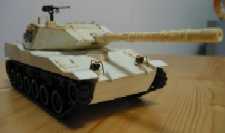
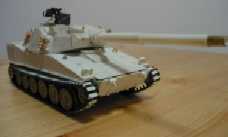
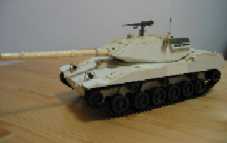
AIR ASSAULT USING M113 GAVINS & M8 BUFORD ARMORED GUN SYSTEMS?
EXCLUSIVE TO THE 1st TSG (A)! MEET THE CH-53E SkyCrane!
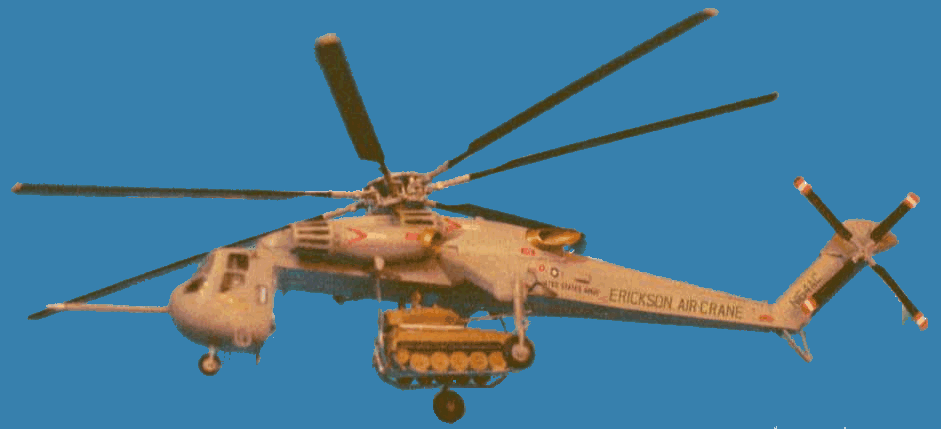
We spliced a very-hard-to-find 1/72 scale model kit MH-53E Sea Stallion's 3 engines, main and tail rotors to a 1/72 scale CH-54/S-64 SkyCrane to illustrate what we could do today to effect SeaBasing and Air-Mech-Strike. No model kit exists for a 17-ton M8 Buford AGS so we did the best we could and hooked up a 8-ton Scimitar light tank with a sizable turret to illustrate somewhat that the CH-53E SkyCrane could be the AMS delivery means for a M113 MTVL Gavin/M8 Buford/Tracer 3D maneuver force. Maybe the Singapore scale model maker could make us a 1/72 scale M8 Buford for us? Note that the CH-53E SkyCrane has Infared CounterMeasures (IRCM) and an in-flight refueling probe to extend its range indefinitely if tankers are available.
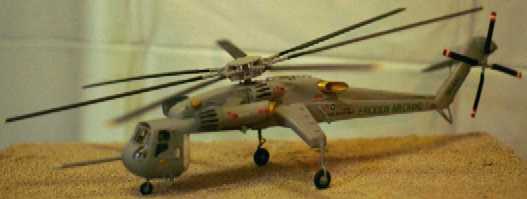
Maximum power, minimum weight: CH-53E SkyCrane sheds 6 tons of CH-53E fuselage to become a 20-ton cargo lifter!
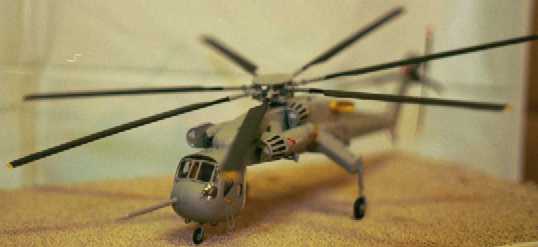
Note the powerful 3-engined CH-53E powertrain & 7-bladed rotor system
PHASE II: CH-53E SPEEDCRANE: Strategic Reach through Piasecki VTDP technology
These are pics of the CH-53E SkyCrane modified into a fast compound helicopter with wings and Piasecki Vectored Thrust Ducted Propeller (VTDP) units for forward thrust and counter-torque directional control. This "SpeedCrane" could do 200+ mph and have a 2,000+ mile range.
Using a rolling take-off we get a 25% increase in payload via transitional lift thanks to the wings and forward thrust units.
Meet the CH-53E SpeedCrane!
VTDP Compound Helicopter Details
Carrying a Light tank by Streamlined External Loading (SEL)
FOR MORE CH-53E SKYCRANE & SPEEDCRANE DETAILS: The Next Chinook?

Want Pvt Murphy in your pocket?
 Return to U.S. Army Airborne Equipment Shop
Return to U.S. Army Airborne Equipment Shop
